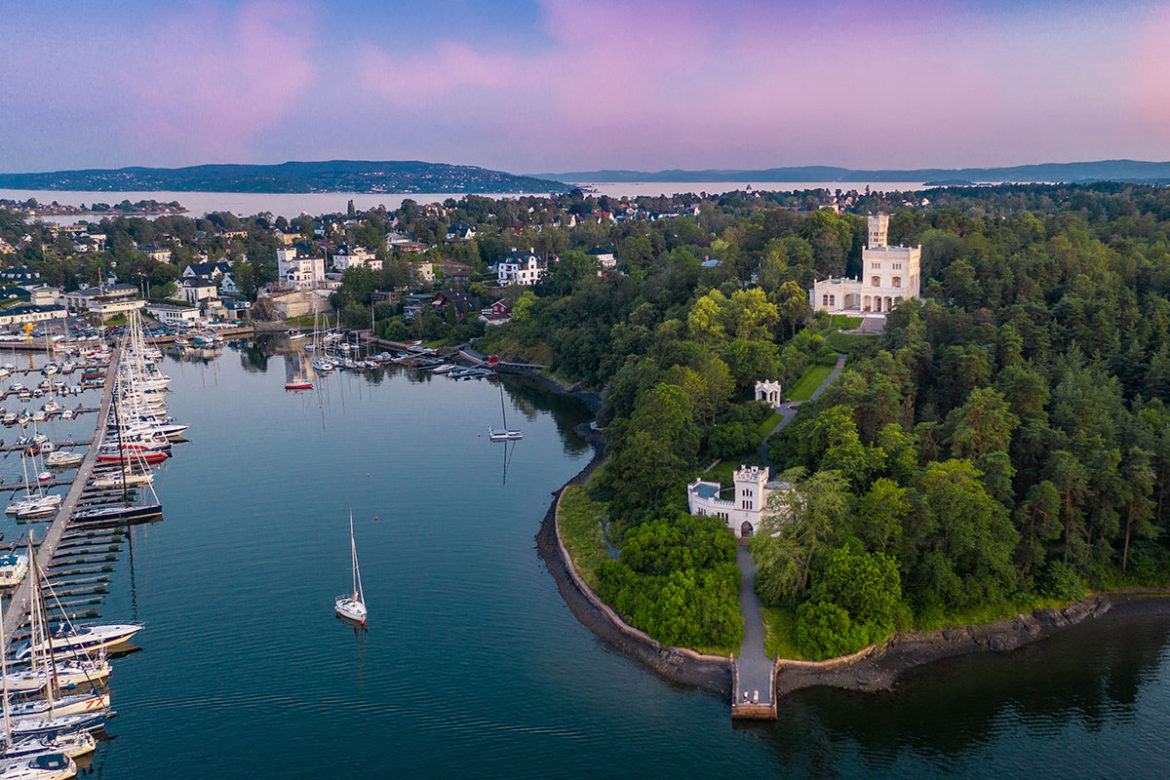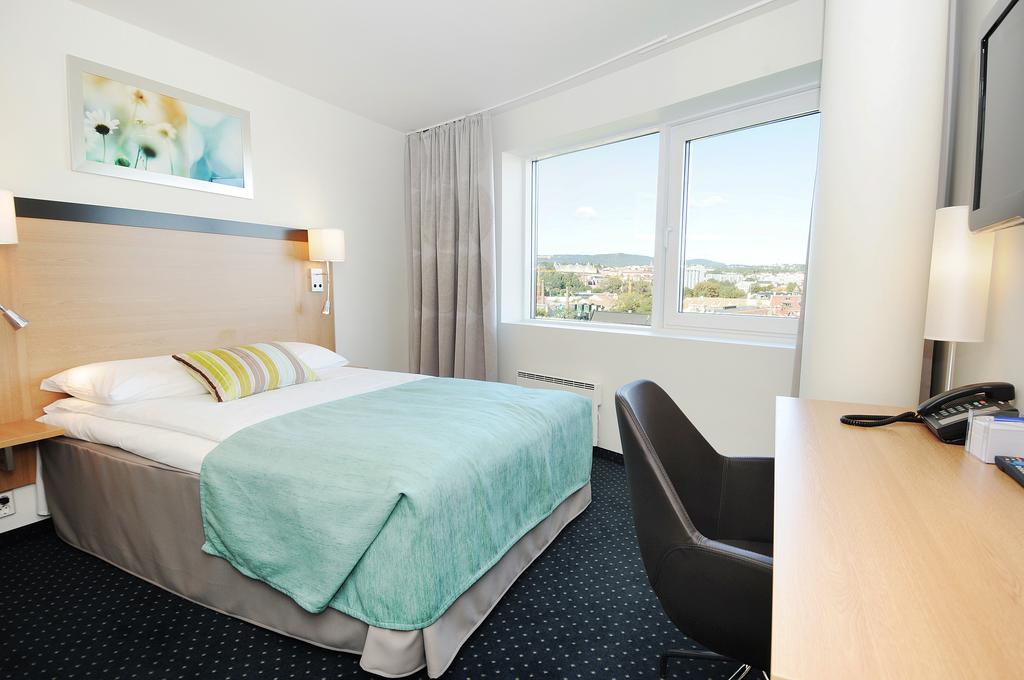Looking for the best things to do in Oslo Norway? Explore my extensive Oslo travel guide to find everything from free things to do, top attractions, unique experiences, museums, parks, tours, shopping, and more!
Located at the innermost point of the Oslo fjord surrounded by forest, mountains, and sea is Oslo, Norway’s vibrant capital. With a history spanning 1,000 years, today Oslo has world-class museums such as the Munch Museum and you can even walk on the roof of its state-of-art opera house. From sea pools to sculpture parks, waterfalls to panoramic views this extensive Oslo travel guide will help you uncover the real city with only the best things to do in Oslo.
I spent two weeks in Oslo on a language holiday, where I continued learning Norwegian in the mornings and had the afternoons and weekends free. Oslo city centre is compact and very walkable, however, many places on this list require a short ride on a bus, tram or water ferry. For this, I recommend purchasing a Visit Oslo pass which includes free public transport and entrance to many of the best attractions in Oslo.
Get to the heart of the city with these 49 underrated things to do in Oslo. Let’s begin!
Map of things to do in Oslo
Want to know where you’ll be going? Take a look at the detailed map below.
Tip: For a larger view of the map, click on the icon in the top right corner.
Click on this interactive map and see where this itinerary will take you. I’ve created this map using Google Maps which you can save and use as you travel around Oslo.
Watch my vlog on the best things to do in Oslo
Here are 49 underrated things to do in Oslo in detail
1. Visit the colourful Norwegian Houses on Damstredet and Telthusbakken
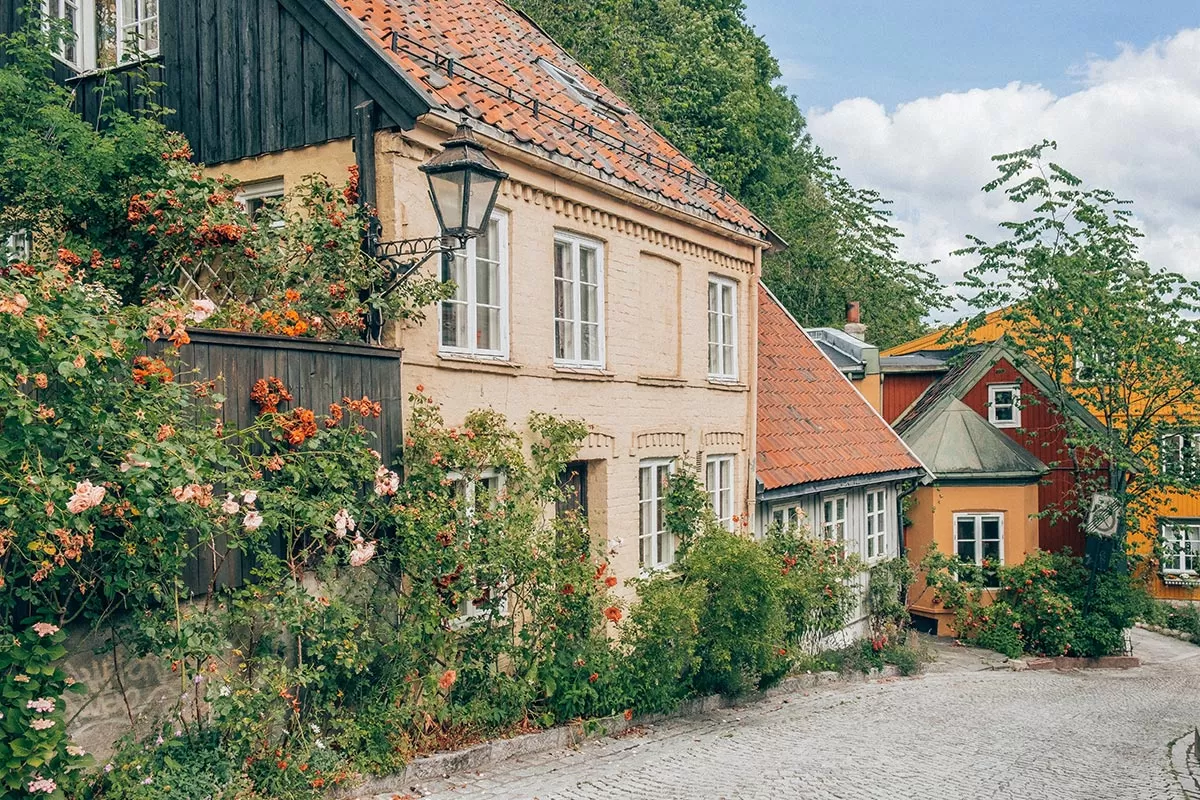
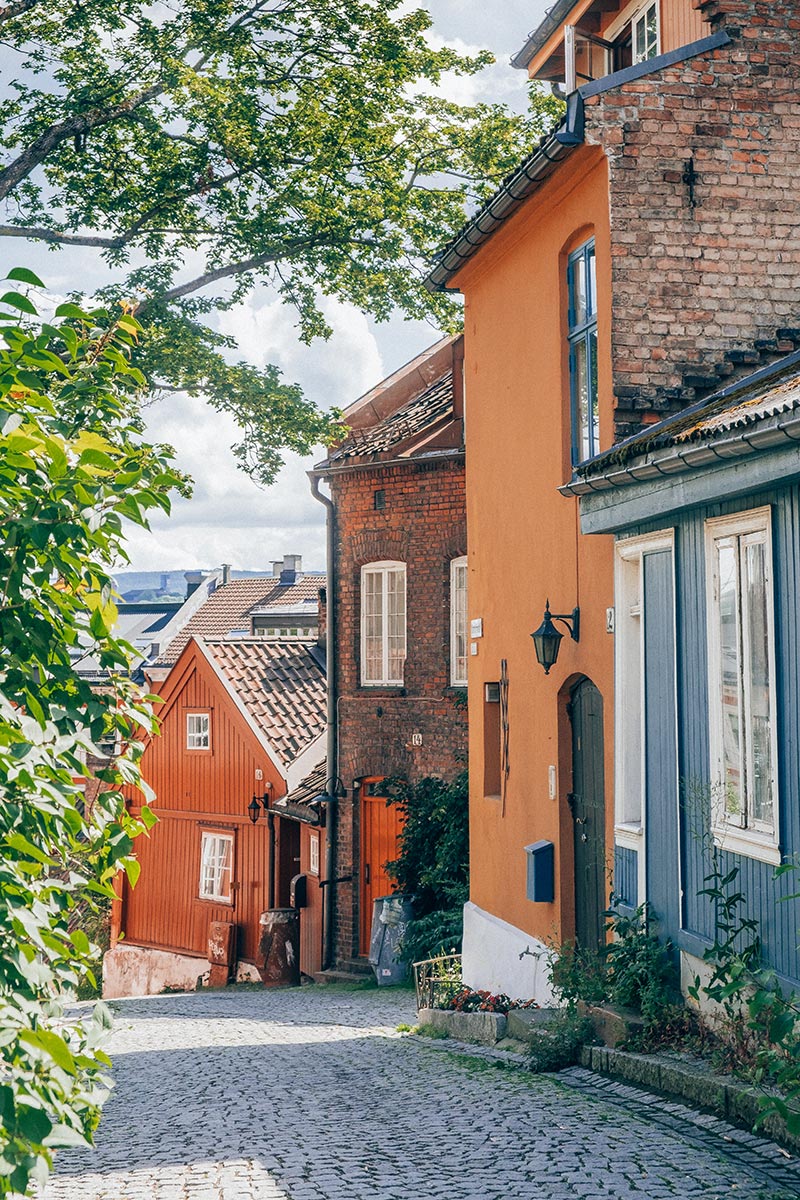
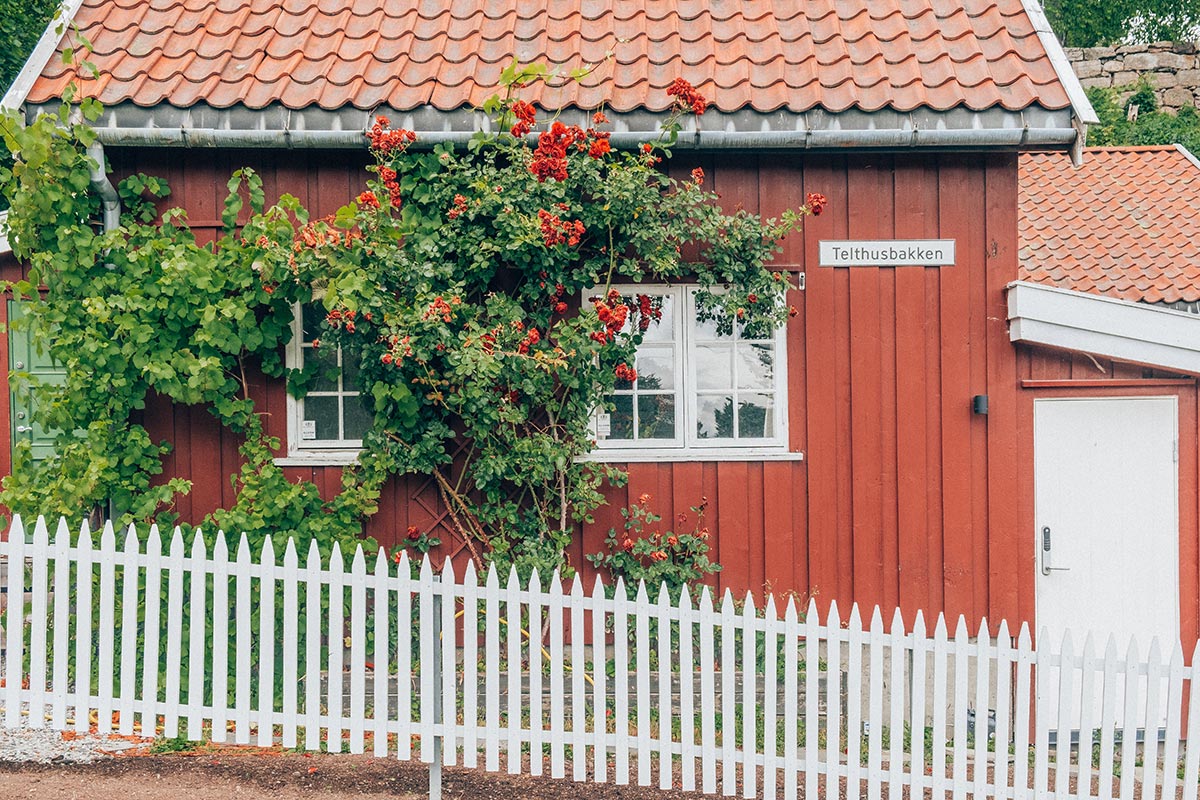 Here’s your chance to see come super cute traditional Norwegian homes. Located on Damstredet and Telthusbakken these two charming roads are lined with colourful and well-preserved wooden home which have been inhabited since the late 18th and early 19th century. For more history and details about Damstredet and Telthusbakken, visit my guide to free things to do in Oslo.
Here’s your chance to see come super cute traditional Norwegian homes. Located on Damstredet and Telthusbakken these two charming roads are lined with colourful and well-preserved wooden home which have been inhabited since the late 18th and early 19th century. For more history and details about Damstredet and Telthusbakken, visit my guide to free things to do in Oslo.
2. Stroll along Aker Brygge Wharf
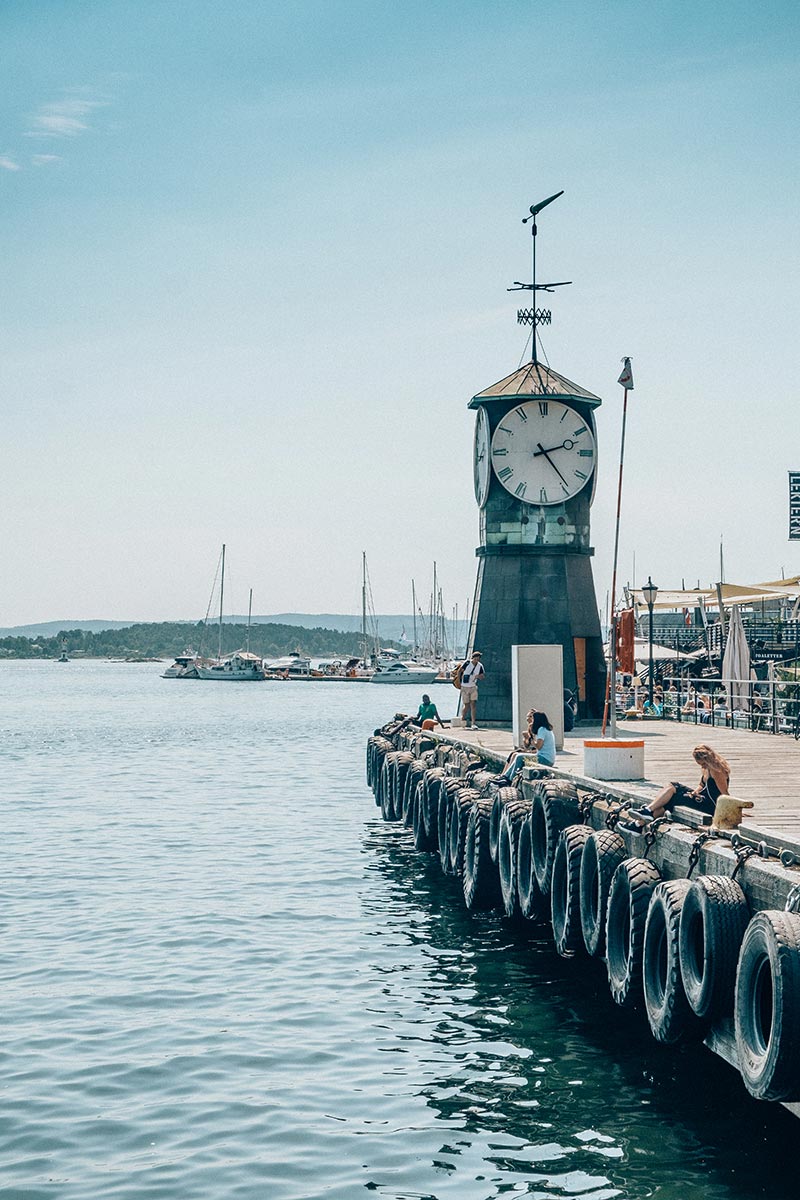
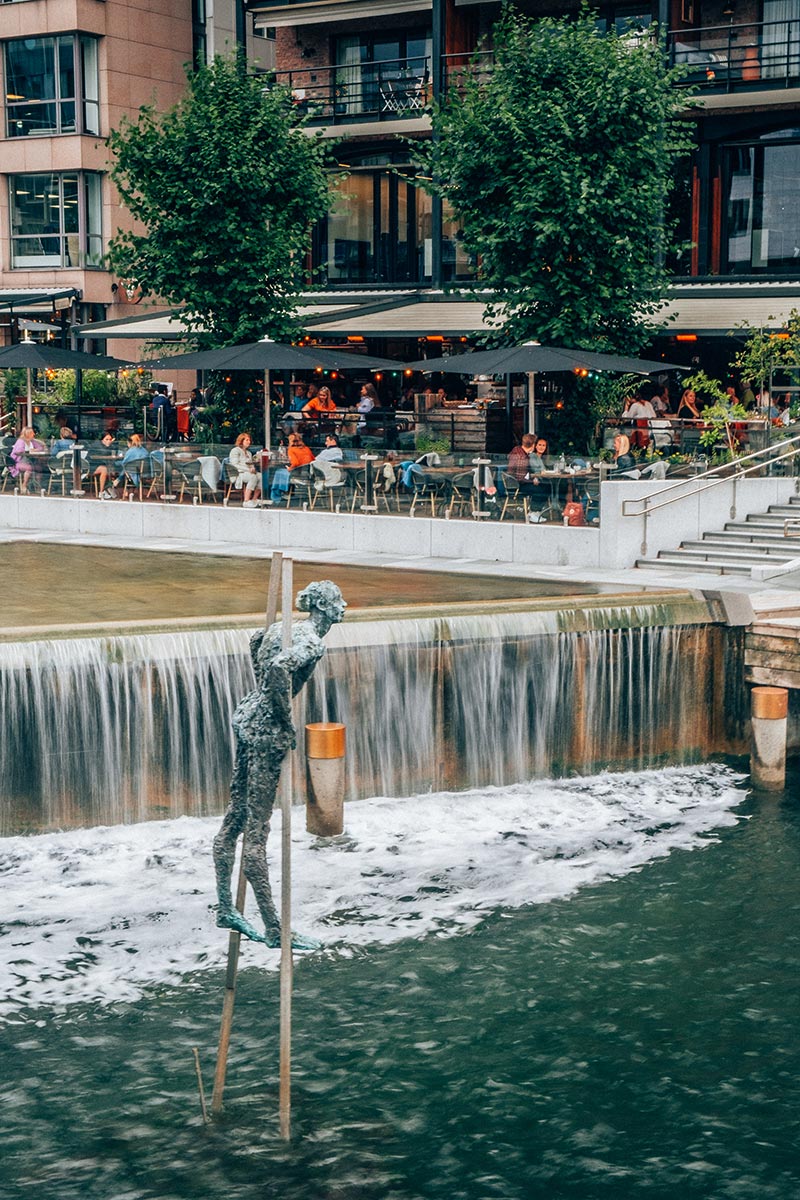 Spending the day on Oslo’s seaside promenade at Aker Brygge Wharf is one of the best things to do in Oslo. Historically, the Aker Brygge area was the site of a shipyard for over a century, Originally called, Akers Mekaniske Verksted (Aker’s Mechanical Workshop). Today, this is Oslo’s go-to place for shopping, dining, entertainment, and a great spot to just laze around on a beach chair and watch the world, and boats, go by.
Spending the day on Oslo’s seaside promenade at Aker Brygge Wharf is one of the best things to do in Oslo. Historically, the Aker Brygge area was the site of a shipyard for over a century, Originally called, Akers Mekaniske Verksted (Aker’s Mechanical Workshop). Today, this is Oslo’s go-to place for shopping, dining, entertainment, and a great spot to just laze around on a beach chair and watch the world, and boats, go by.
The waterfront is lined with restaurants offering excellent views over the marina and various food trucks if you want something on the go.
Thanks to its large open-air areas and modern shopping malls, many photo exhibitions, concerts and pop-up events, activities, and festivals are hosted here.
3. Walk along Akerselva river
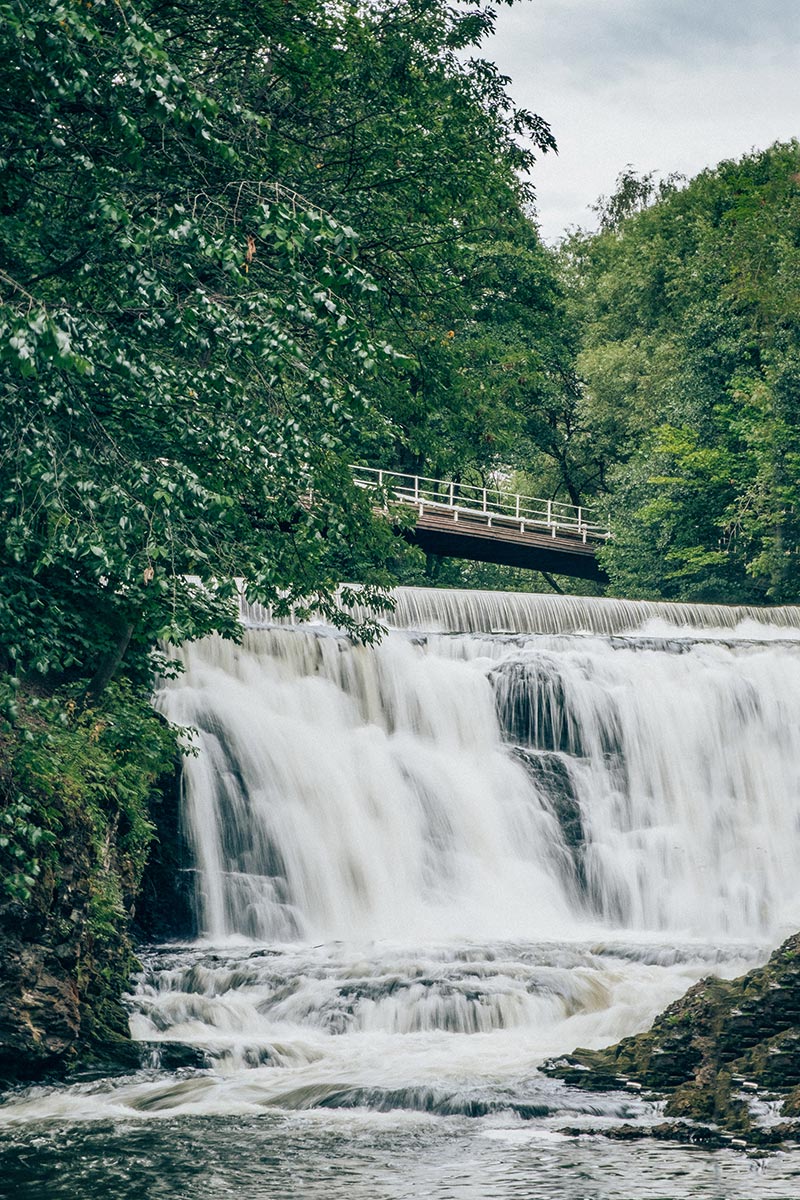 Enjoy Oslo’s greener side by taking a stroll along the Akerselva river. This Akerselva river walk stretches eight kilometres long and winds its way past forested areas, historical buildings, fishing, swimming spots, and several waterfalls. Few tourists come out this way, so it’ll be just you and the locals!
Enjoy Oslo’s greener side by taking a stroll along the Akerselva river. This Akerselva river walk stretches eight kilometres long and winds its way past forested areas, historical buildings, fishing, swimming spots, and several waterfalls. Few tourists come out this way, so it’ll be just you and the locals!
Join the Akerselva riverwalk at Nedre Foss and head north for the most scenic route. Look out for a cute red wooden building, this is Hønse-Lovisas house, a lovely cafe. Either keep walking or stop in for a break and them loop back towards the centre.
4. Wander the gardens of Oscarshall palace
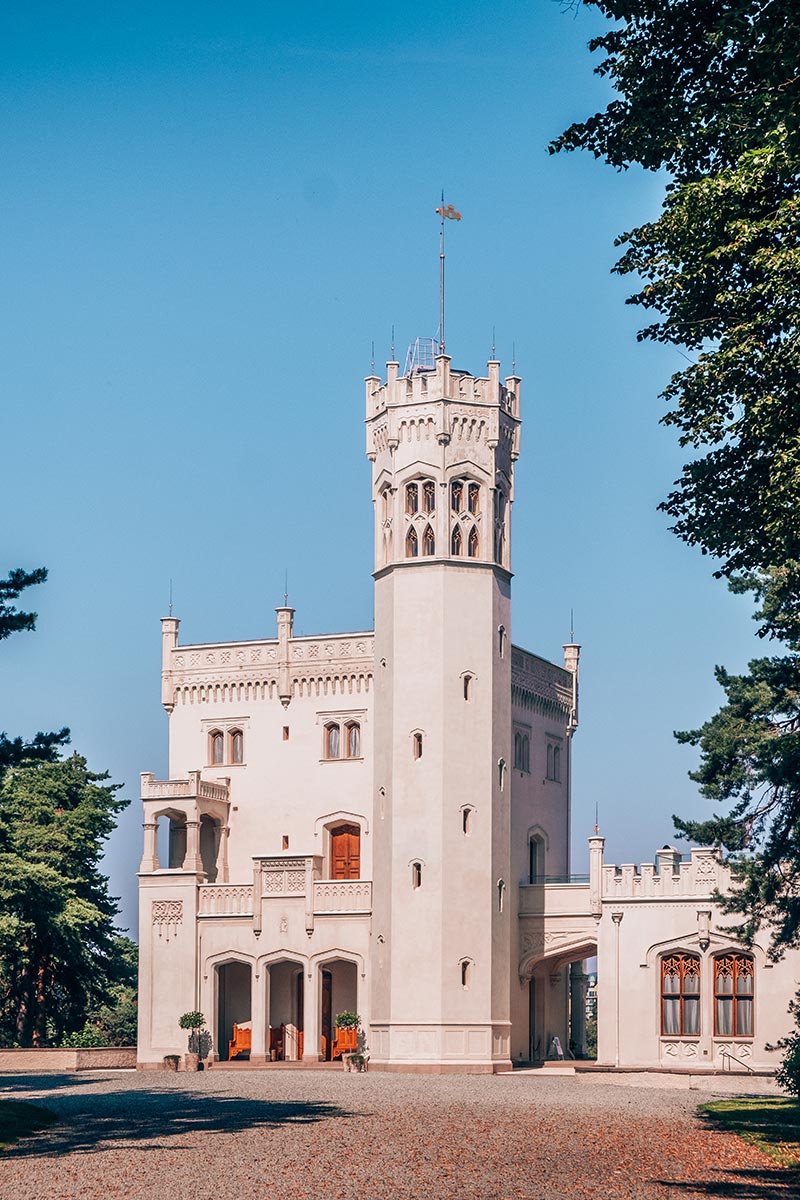
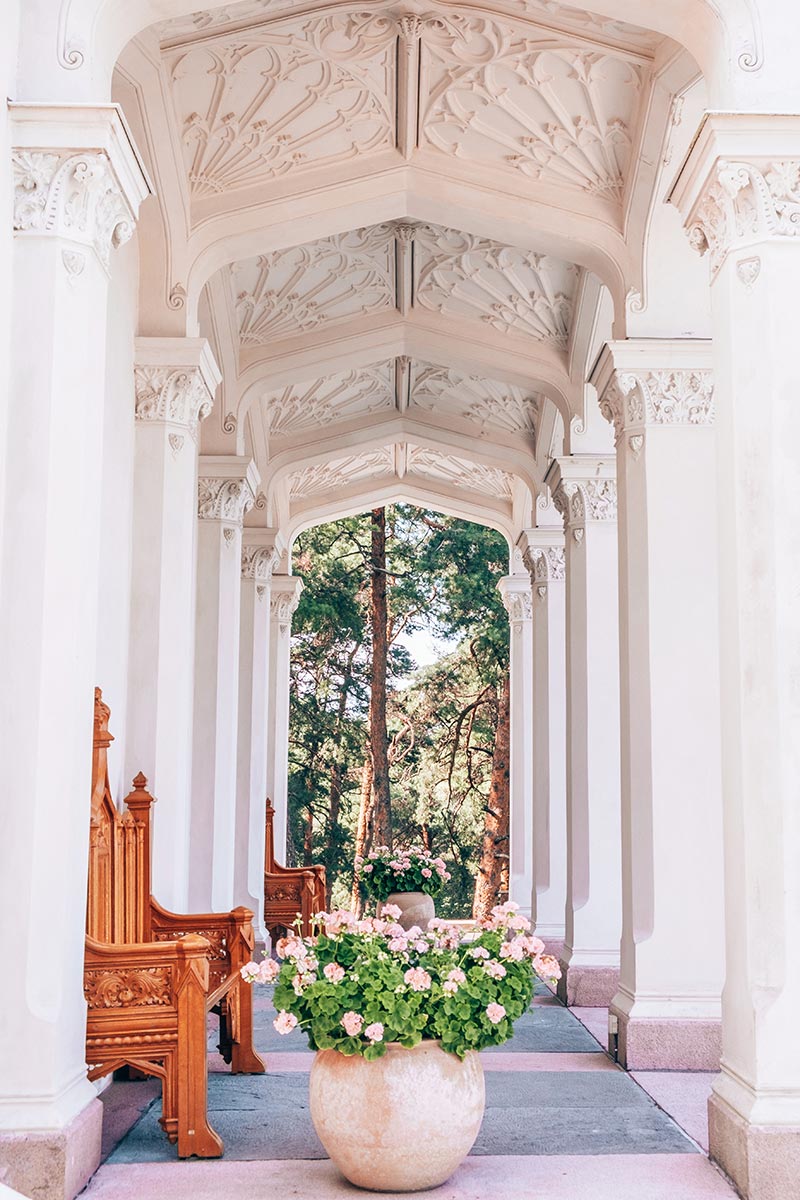 Located on a hill overlooking Oslo fjord is this relatively small royal palace. Oscarshall was built between 1847 to 1852 and was commissioned by King Oscar I and Queen Joséphine of Norway and Sweden. The residence was hardly used and in 1881, King Oscar II opened the palace to the public as a museum.
Located on a hill overlooking Oslo fjord is this relatively small royal palace. Oscarshall was built between 1847 to 1852 and was commissioned by King Oscar I and Queen Joséphine of Norway and Sweden. The residence was hardly used and in 1881, King Oscar II opened the palace to the public as a museum.
Oscarshall is another one of Oslo’s gems hidden in plain sight as it doesn’t receive many visitors. It probably has a lot to do with the fact that it’s only open in summer and tours only run in Norwegian. However, when I bought my ticket they did they say the tour would be conducted in both languages even though the guide ended up running the whole tour all in English.
Oscarshall opens during the summer from 1 June until 8 September, so if you’re in Oslo, make sure you pay a visit. Wander through the lovely gardens down to the waters edge before circling back to the outdoor cafe.
I definitely recommend joining the guided tour which costs NOK 100 / $11 USD. You’ll see the decadent interior that was wholly constructed and decorated by Norwegian artists and artisans.
Tours start every hour (Wednesday – Sunday 11:00 – 17:00) and last approximately one hour. The last tour starts at 16:00. Monday – Tuesday Oscarshall is closed.
5. Wander along Karl Johans Gate
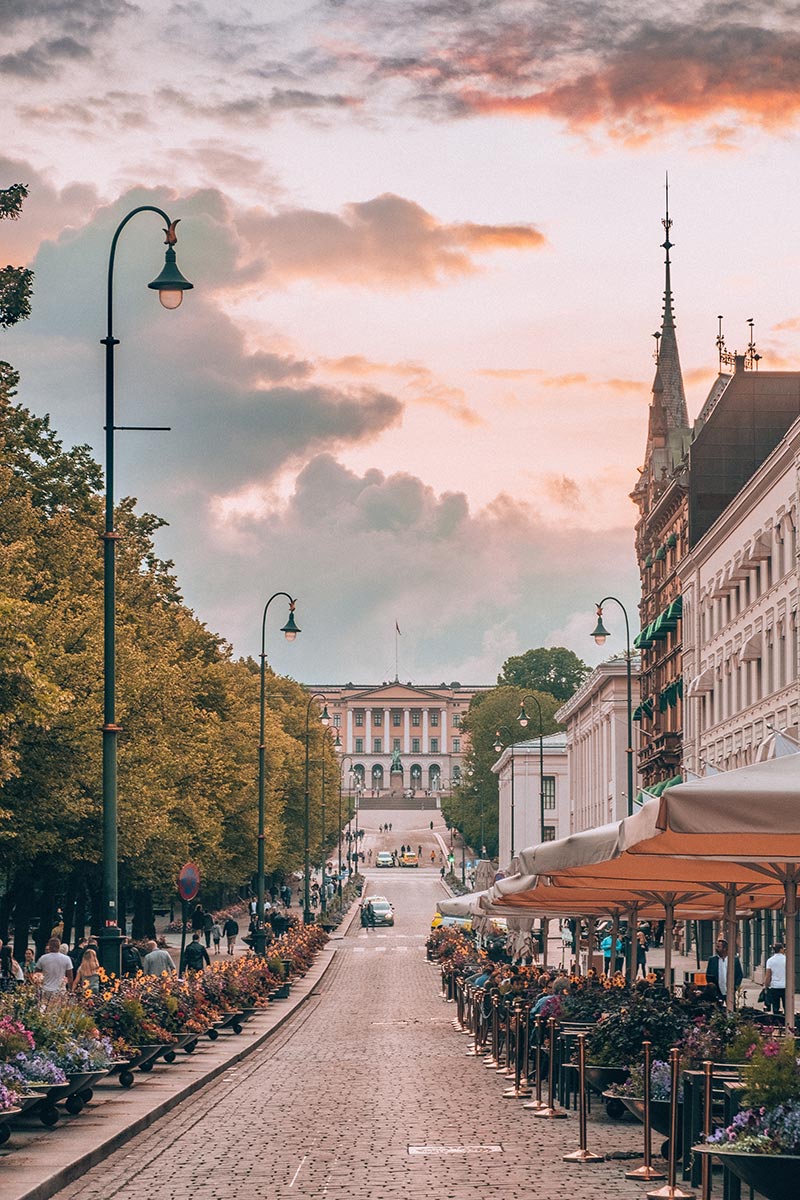
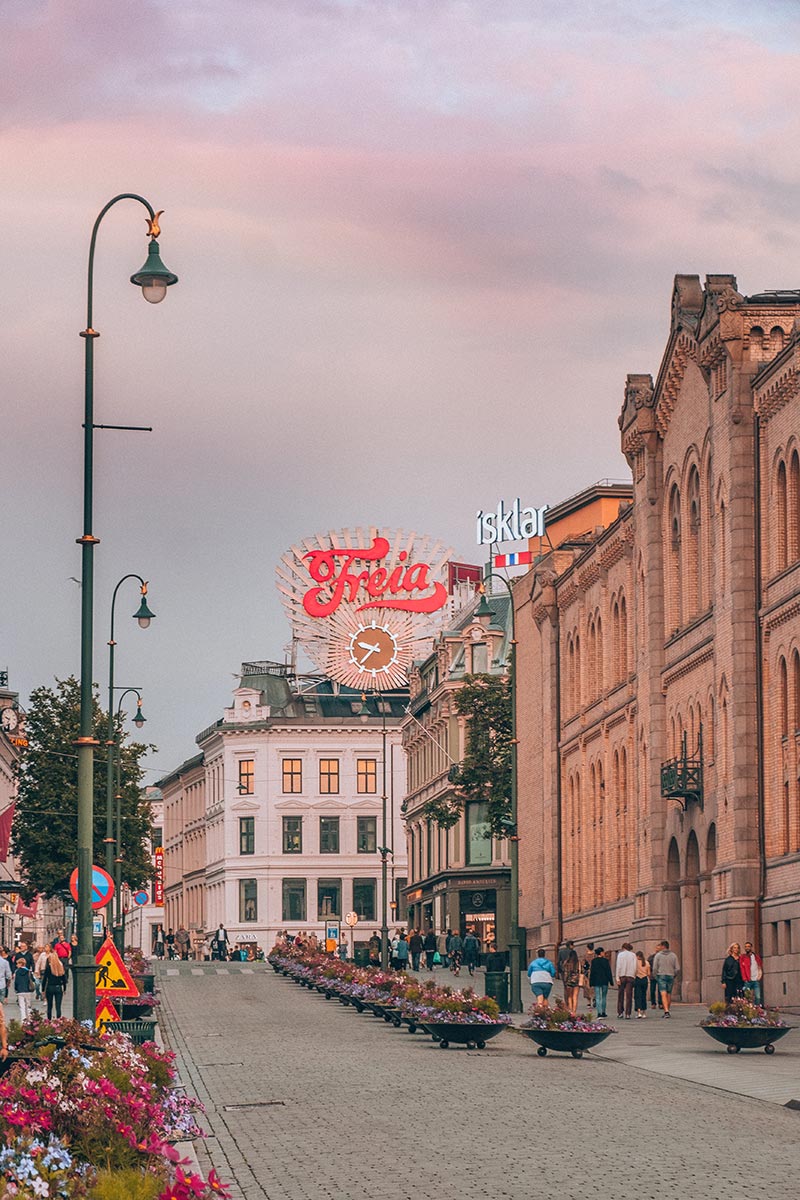 The vein that runs through the heart of Oslo is Karl Johans gate. This is Oslo’s bustling main street full of shops and restaurants and where you’ll find many important buildings, including Parliament, the National Theatre all the way up to the Royal Palace! For more history and details about Karl Johans gate, visit my guide to free things to do in Oslo.
The vein that runs through the heart of Oslo is Karl Johans gate. This is Oslo’s bustling main street full of shops and restaurants and where you’ll find many important buildings, including Parliament, the National Theatre all the way up to the Royal Palace! For more history and details about Karl Johans gate, visit my guide to free things to do in Oslo.
6. See the Change of Royal Guard at the Royal Palace (Det kongelige slott)
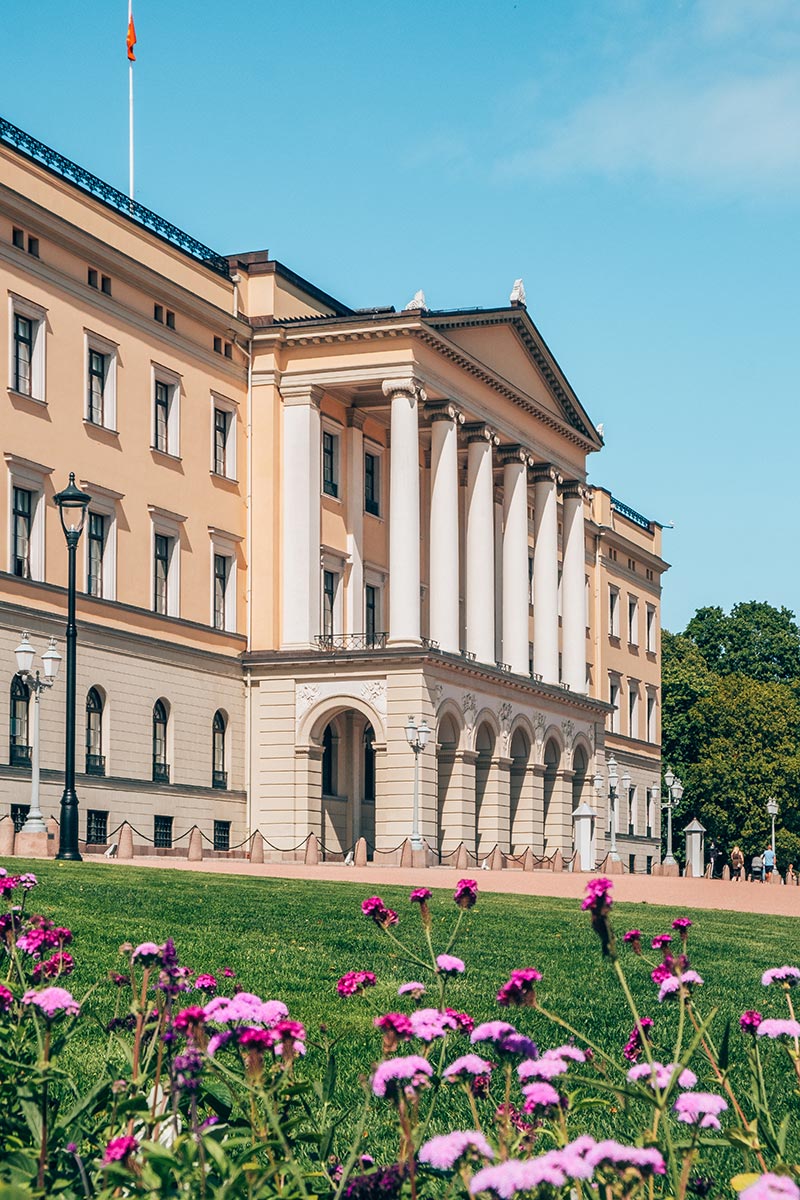
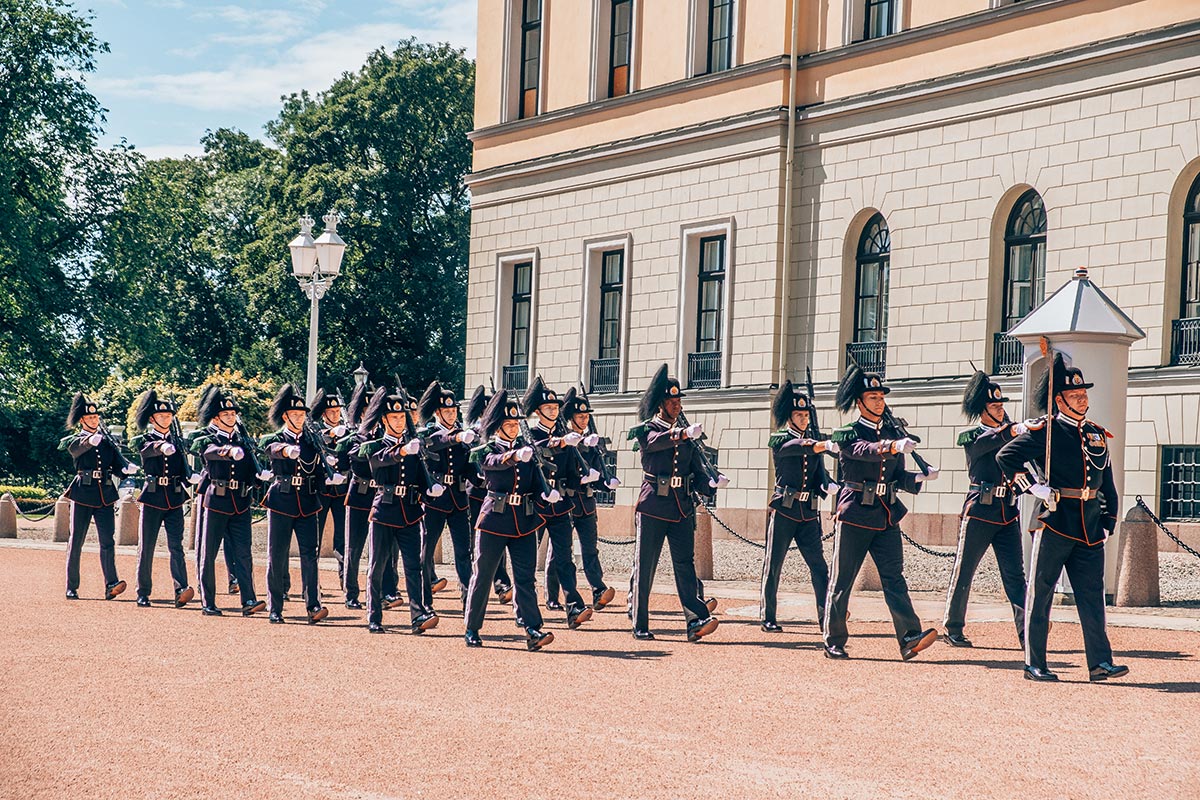 Pay a Royal visit and see this famous tradition and very popular ceremony of the royal change of guard which happens daily at 1:30 pm. If you’re interested in learning more about the family, its history, and the palace itself, during the summer you can join a guided tour of the palace. Tickets cos NOK 140 ($15 USD) Get your tickets here. For more history and details about the Royal Palace and change of guard, visit my guide to free things to do in Oslo.
Pay a Royal visit and see this famous tradition and very popular ceremony of the royal change of guard which happens daily at 1:30 pm. If you’re interested in learning more about the family, its history, and the palace itself, during the summer you can join a guided tour of the palace. Tickets cos NOK 140 ($15 USD) Get your tickets here. For more history and details about the Royal Palace and change of guard, visit my guide to free things to do in Oslo.
Going to Norway? Get my free Norwegian travel phrase guide here.
7. Walk on the Roof of the Oslo Opera House (Operahuset)
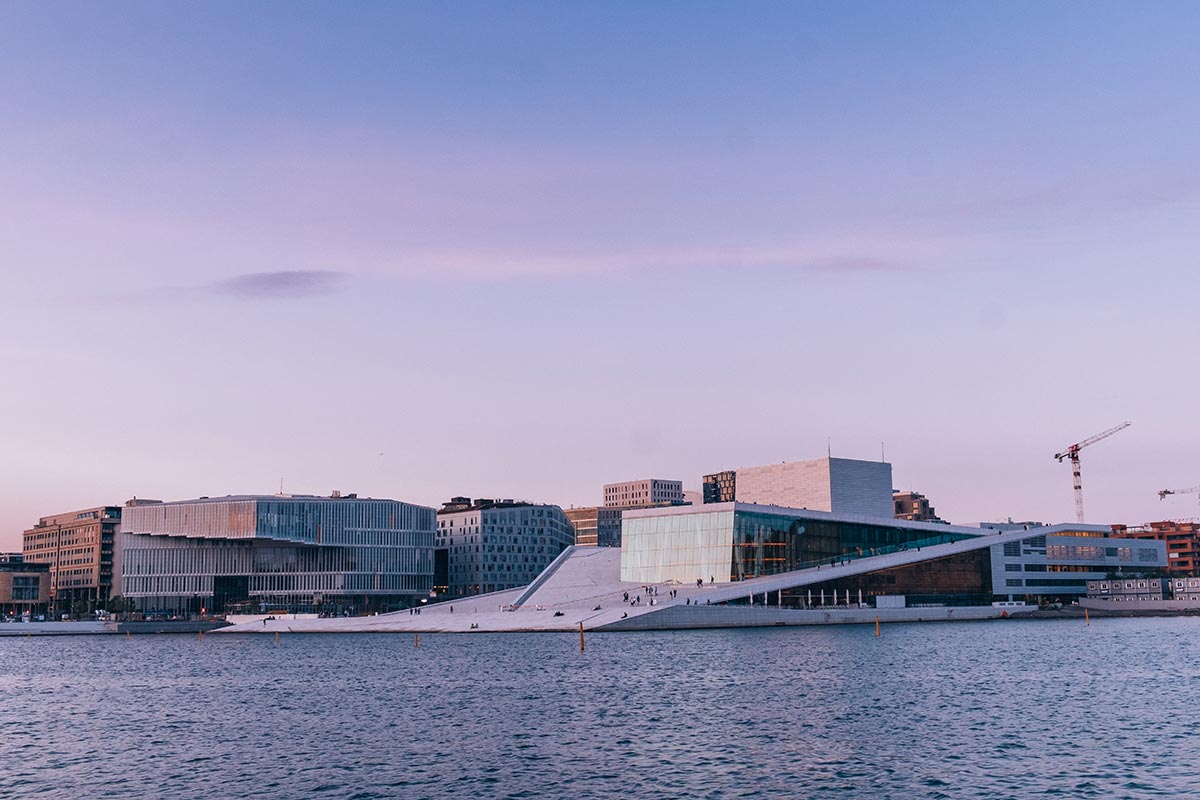
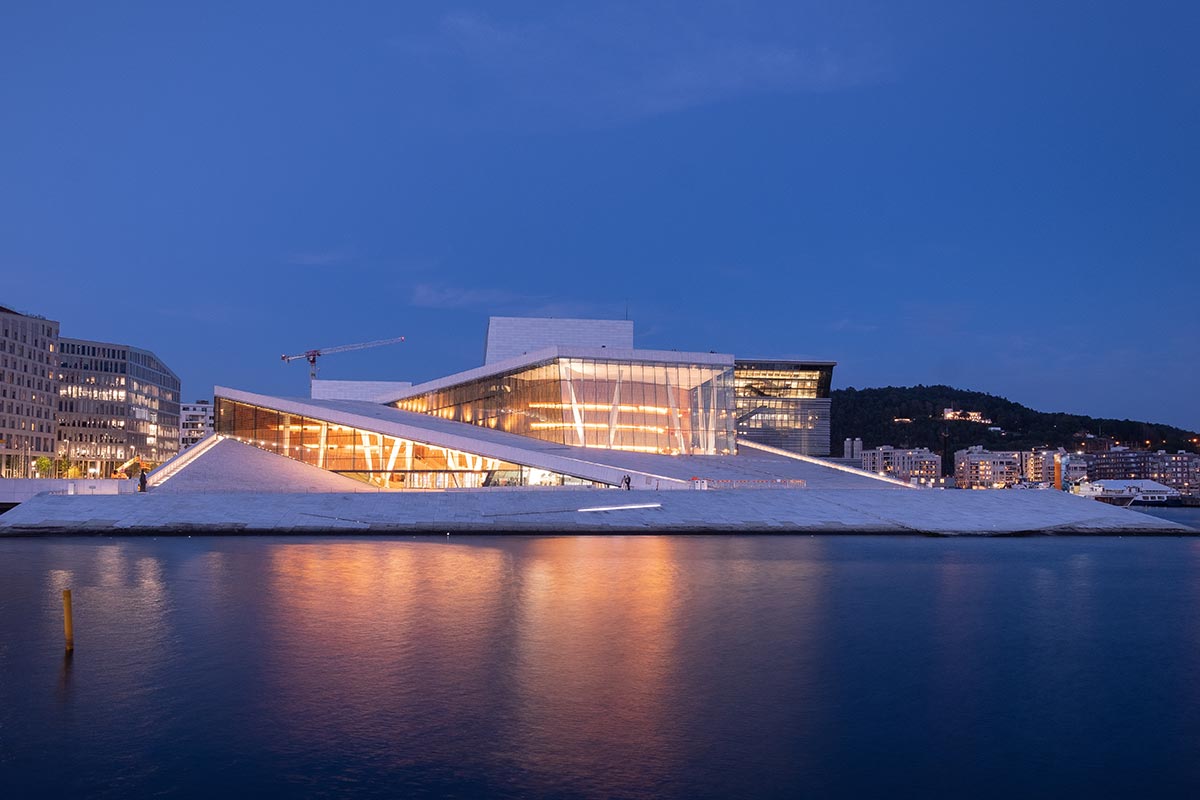 Nowhere else in the world is it allowed let alone encouraged to walk on the roof an important building. Well, Norwegian’s do things differently and they have their own ideas about such things. Instead of adopting a “do not touch” mentality, the roof of the Oslo Opera House angles down to street level inviting visitors to walk up to its huge rooftop. Once at the top, you’ll be rewarded with excellent views over Oslo fjord.
Nowhere else in the world is it allowed let alone encouraged to walk on the roof an important building. Well, Norwegian’s do things differently and they have their own ideas about such things. Instead of adopting a “do not touch” mentality, the roof of the Oslo Opera House angles down to street level inviting visitors to walk up to its huge rooftop. Once at the top, you’ll be rewarded with excellent views over Oslo fjord.
8. See the Unusual Statues in Vigeland Park (Vigelandsparken)
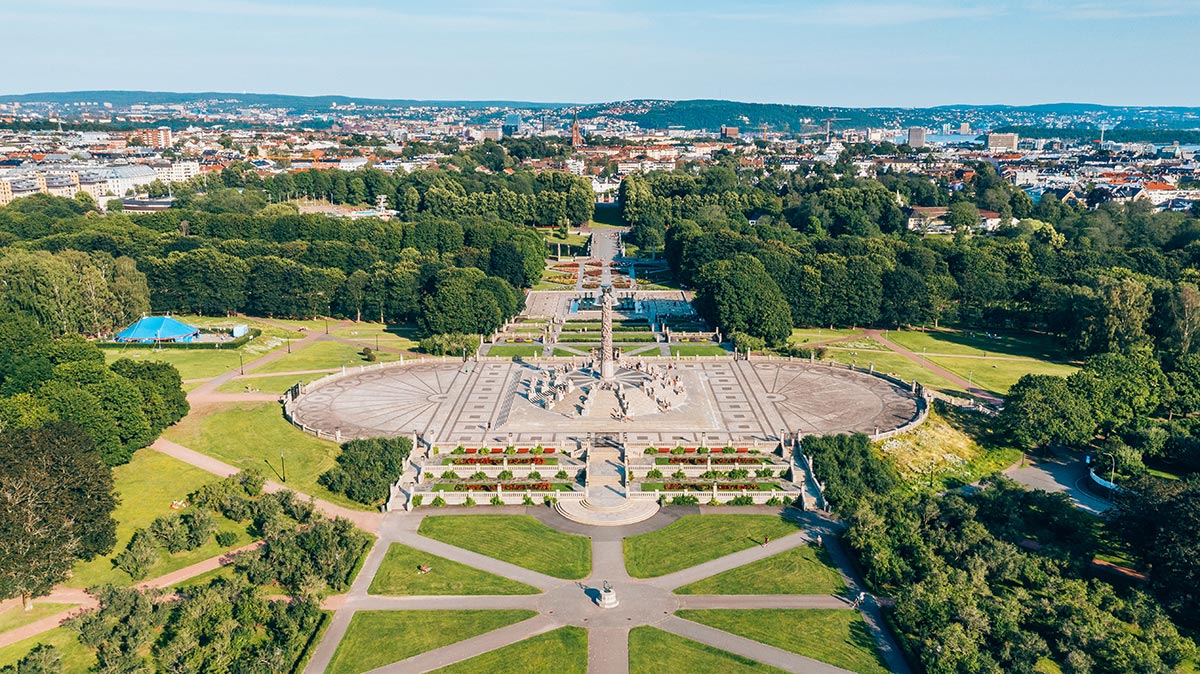
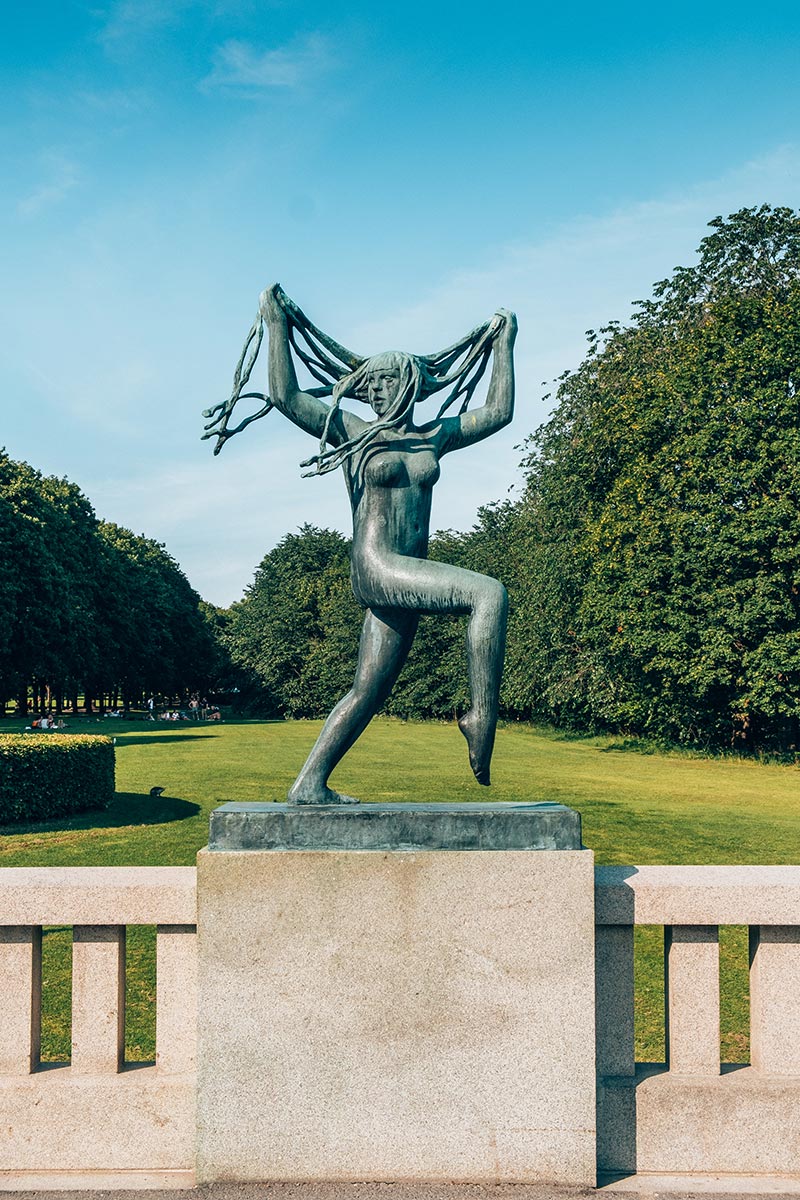
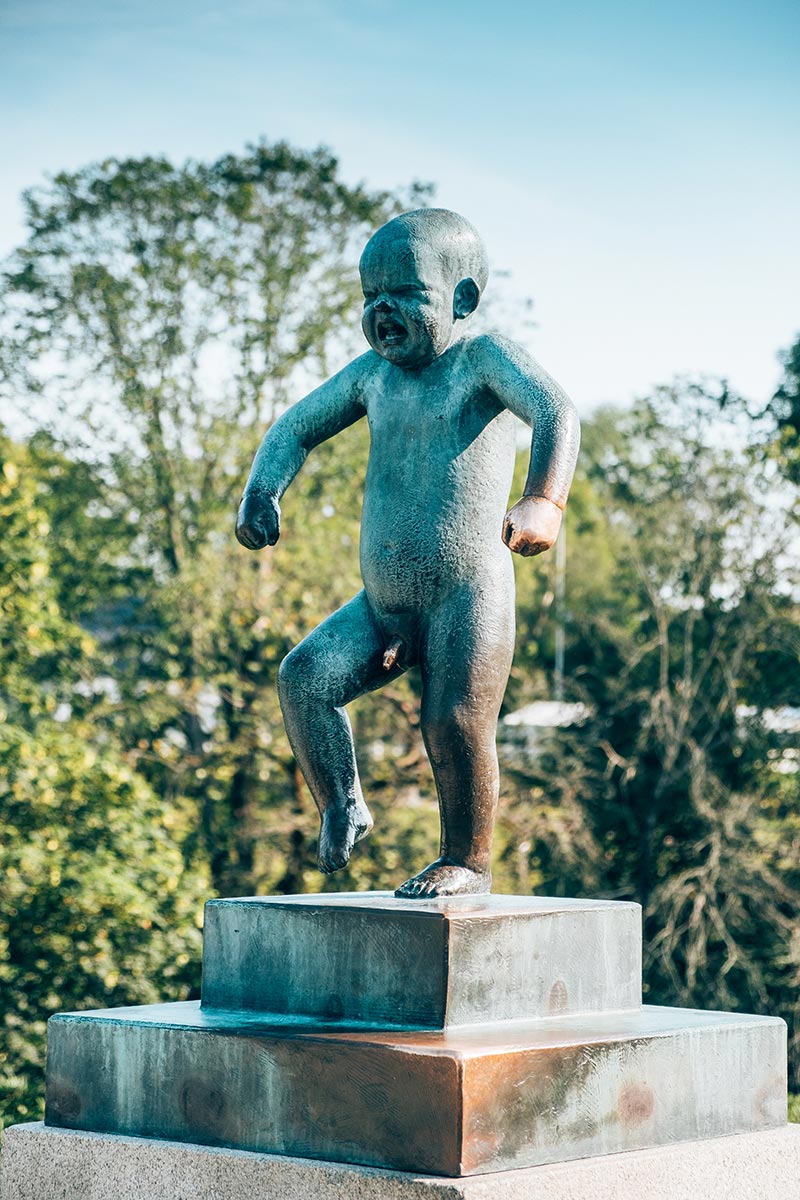
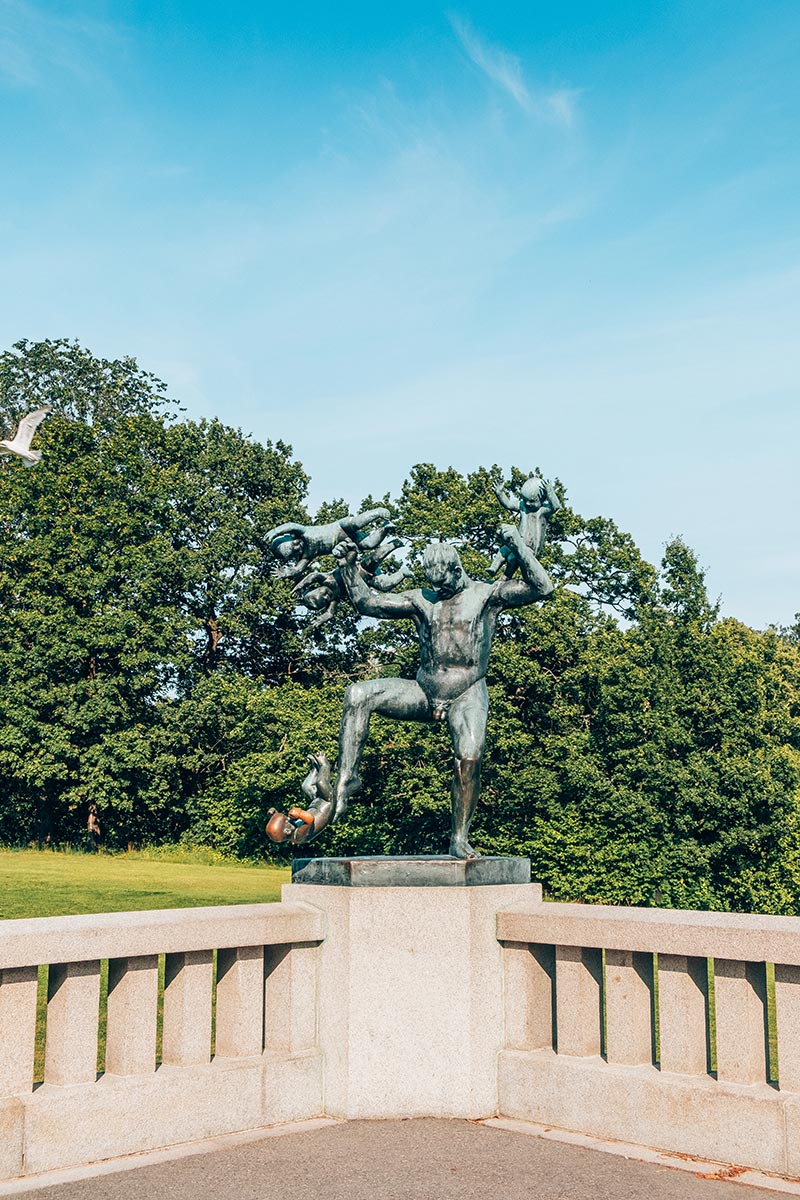
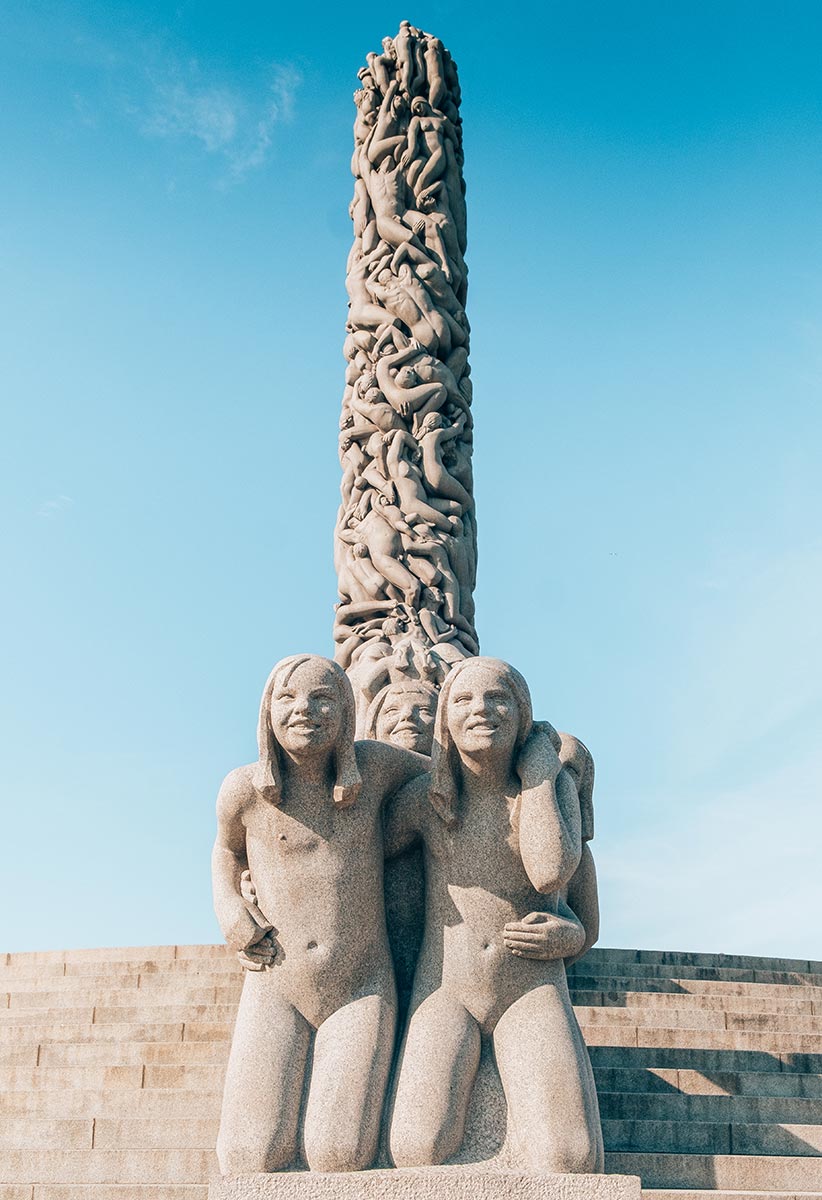
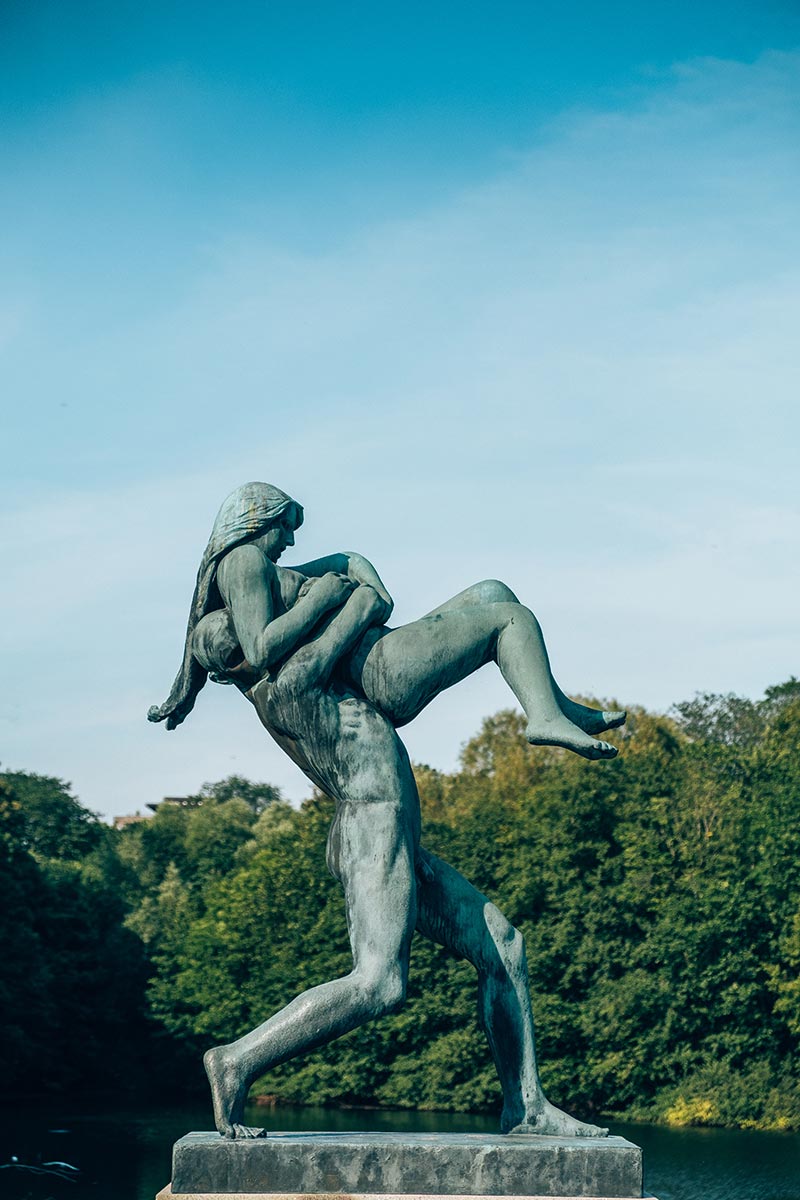 Norway’s most famous sculptor, Gustav Vigeland, was the mastermind behind this impressive and very unique sculpture park making it one of the very best things to do in Oslo. Some 212 sculptures are arranged around the park, each expressing major themes of human life and emotions. For more details about Vigeland Park, see my guide to free things to do in Oslo.
Norway’s most famous sculptor, Gustav Vigeland, was the mastermind behind this impressive and very unique sculpture park making it one of the very best things to do in Oslo. Some 212 sculptures are arranged around the park, each expressing major themes of human life and emotions. For more details about Vigeland Park, see my guide to free things to do in Oslo.
9. Visit the Vigeland Museum (Vigeland-museet)
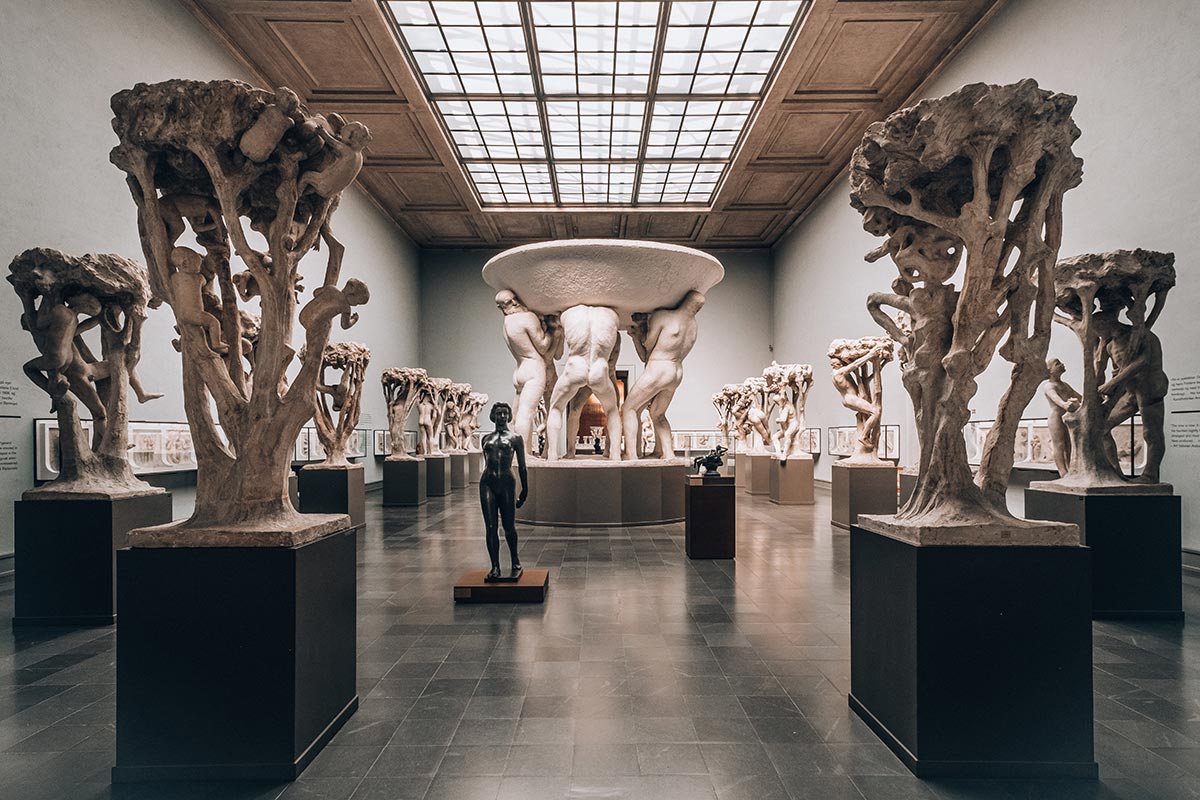
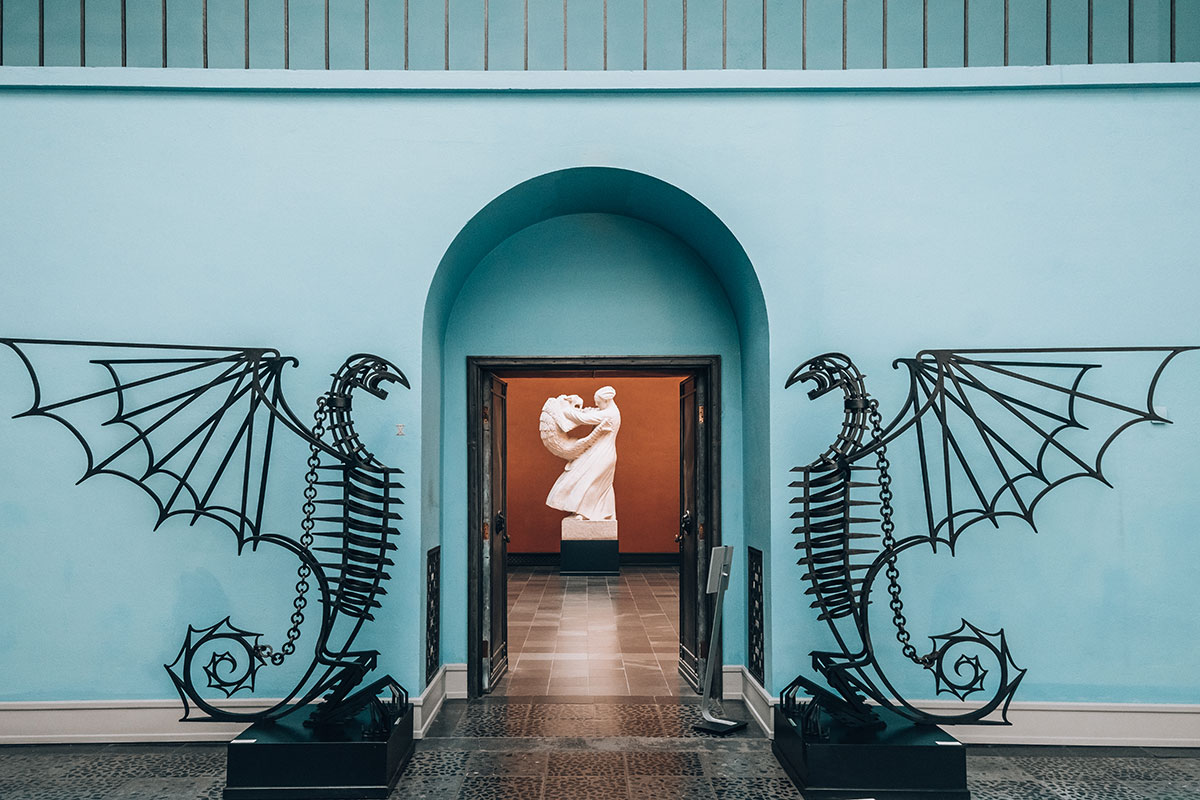
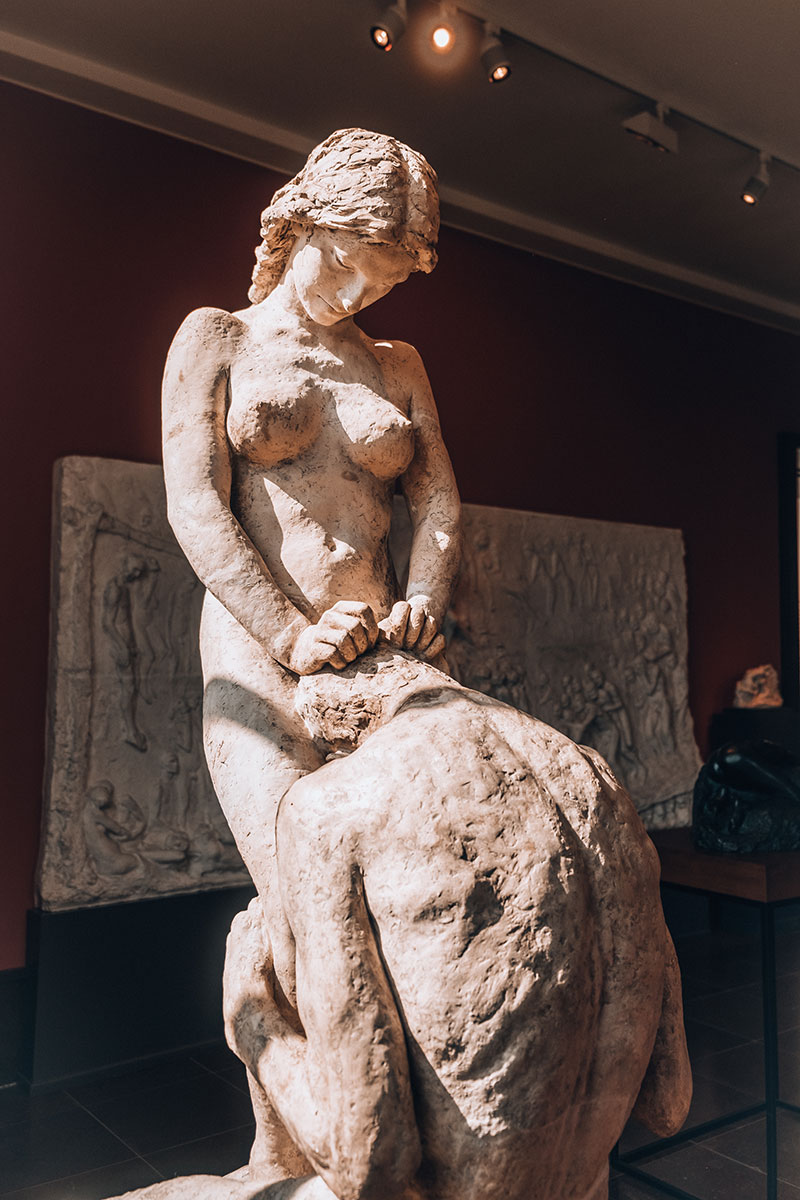
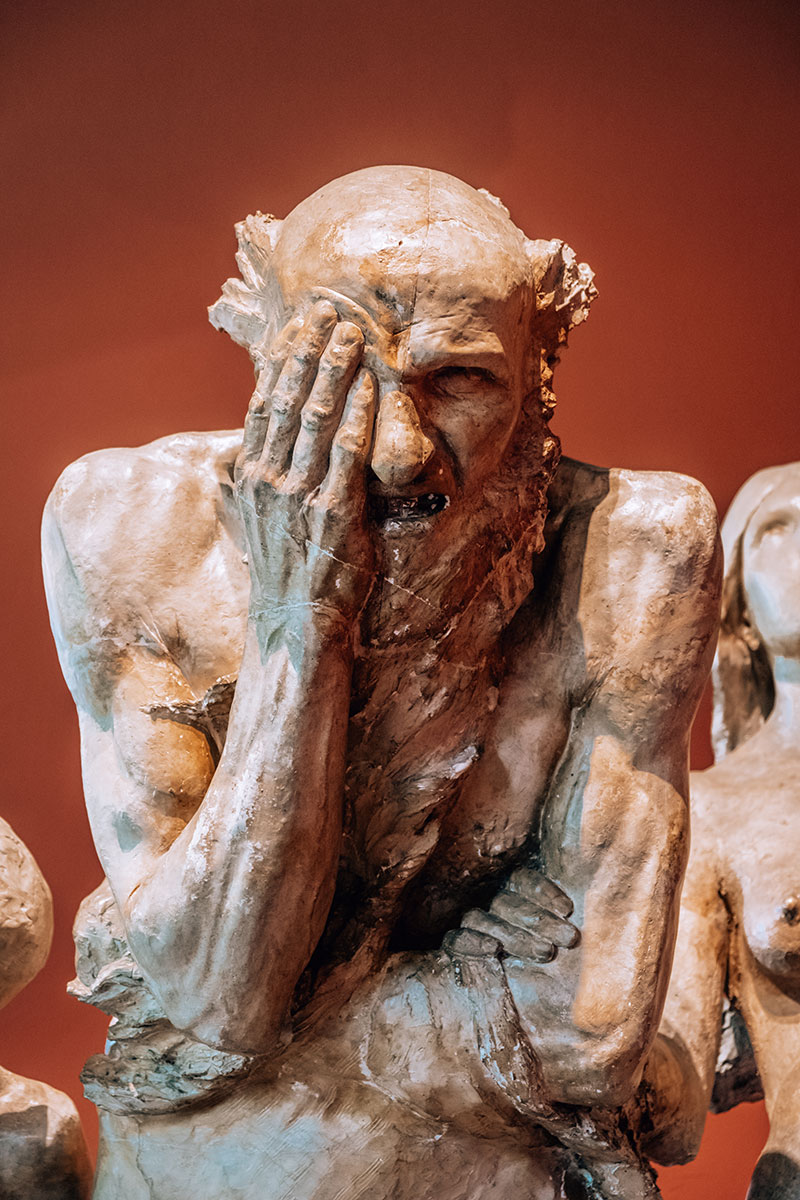 If you enjoyed Vigeland Park then you can’t miss a visit to the nearby Vigeland Museum. This museum doubled as Gustav’s studio and home, making it even more special to explore.
If you enjoyed Vigeland Park then you can’t miss a visit to the nearby Vigeland Museum. This museum doubled as Gustav’s studio and home, making it even more special to explore.
The museum houses a collection of Vigeland’s early works, his portraits and monuments, as well as plaster models for the sculptures in Vigeland Park where you can see Gustav’s well-documented working process. Entrance to Vigeland Museum is NOK 120 / $13 USD or free with the Visit Oslo Pass.
10. Visit the Emanuel Vigeland Museum, Oslo’s best-kept secret
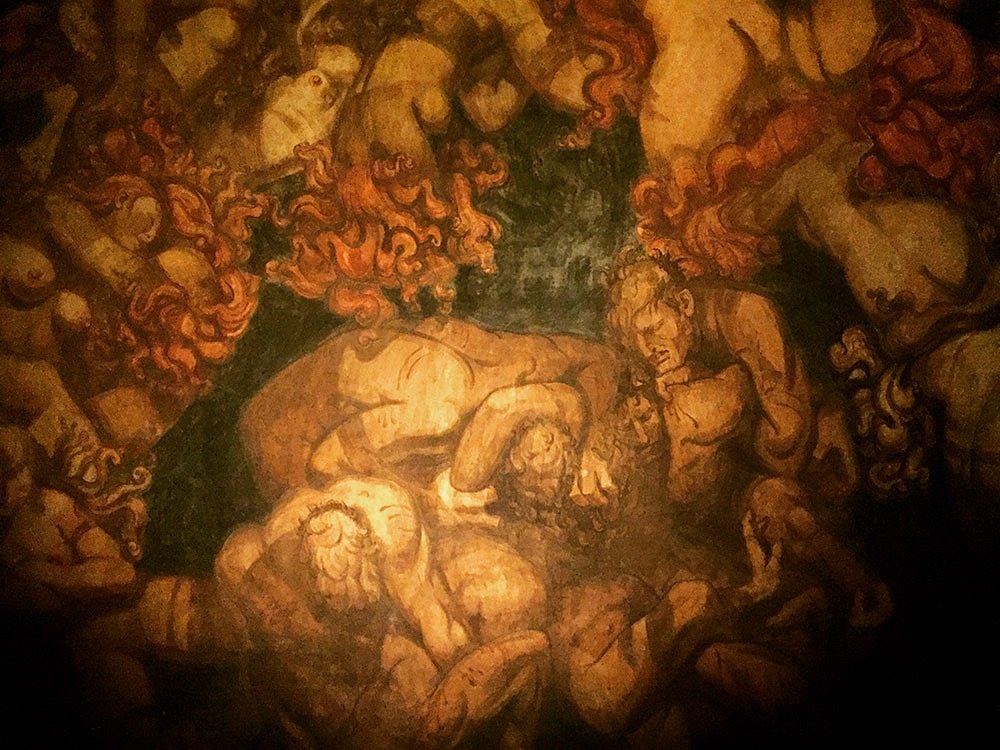
Erotic figures cover the walls inside Emanuel Vigeland Museum
There must be something in the the Vigeland family blood because Gustav’s brother, Emanuel is also an excellent artist. Living in the shadow of his brother’s success and not to be outdone, Emanuel Vigeland set out to build something equally amazing and is now considered Oslo’s best-kept secret.
Located just outside the city centre, for a small entrance fee (NOK 50 / $5.56 USD), you can visit this unusual and very unique place. For more details about what makes this place so special, visit my guide to the Emanuel Vigeland Museum here.
11. Have lunch on island at Lille Herbern
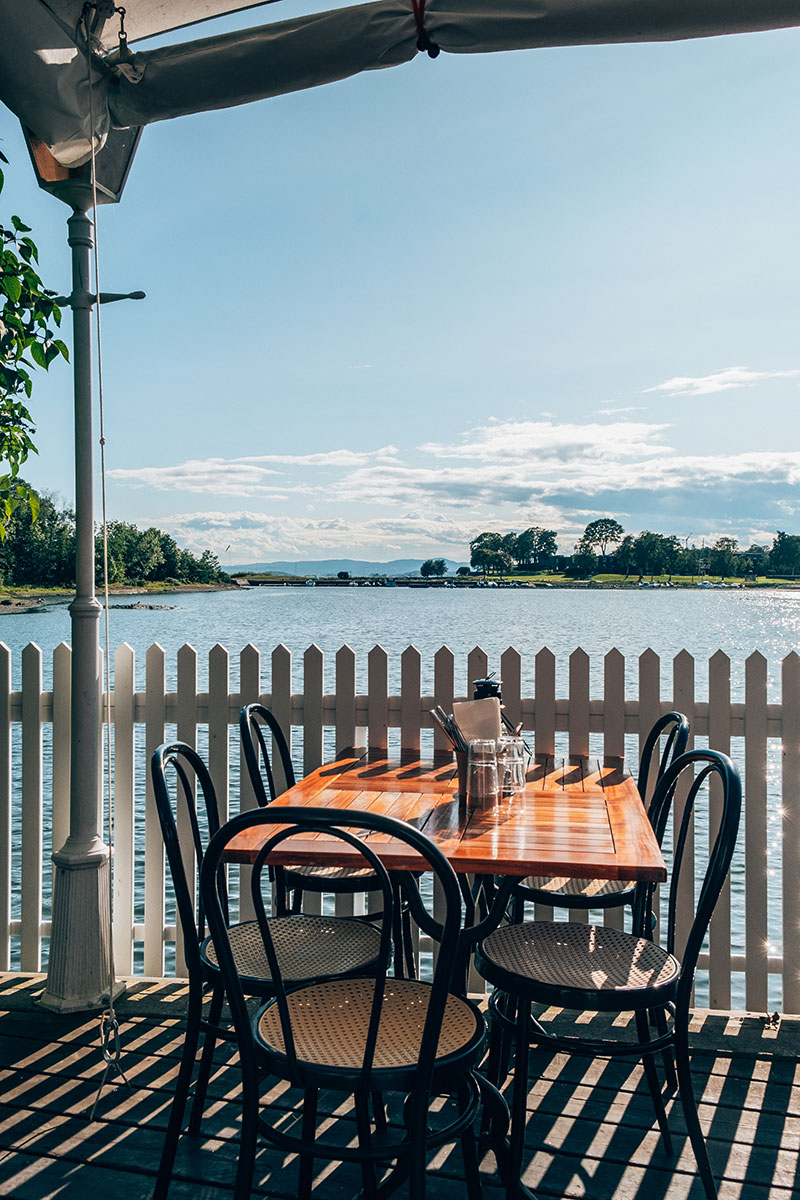
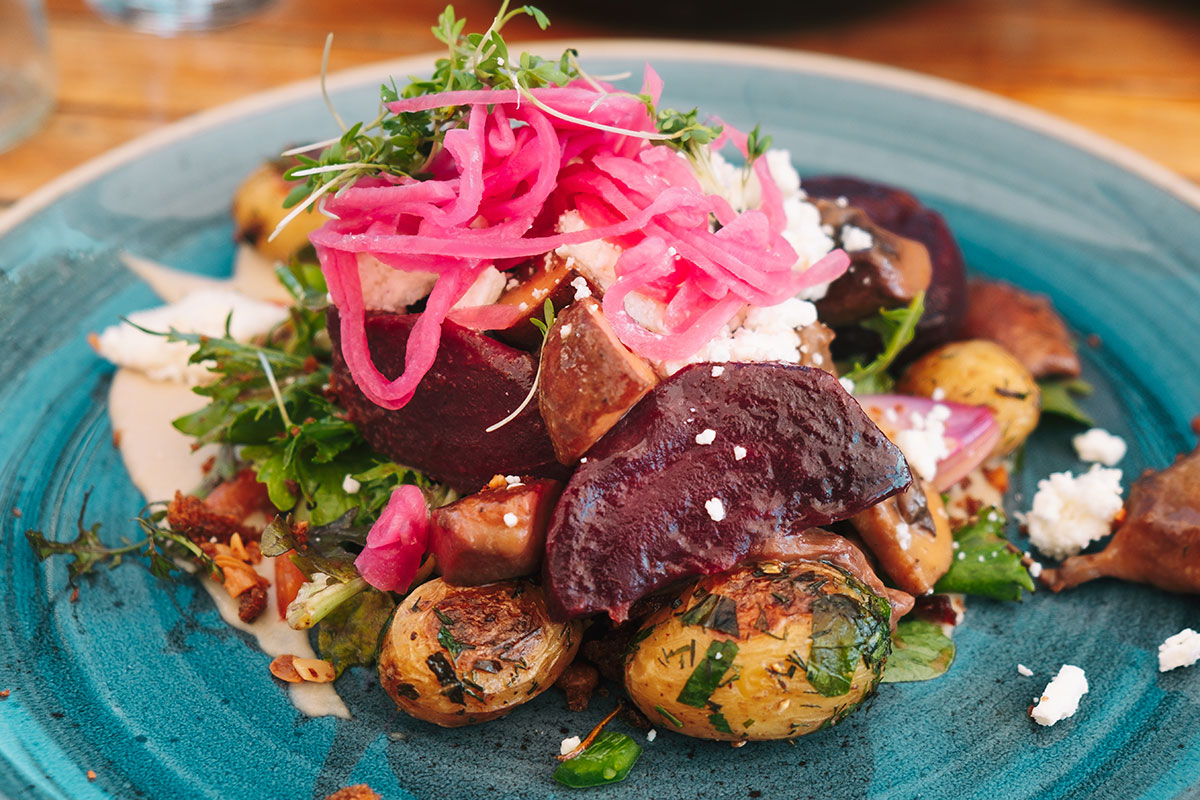
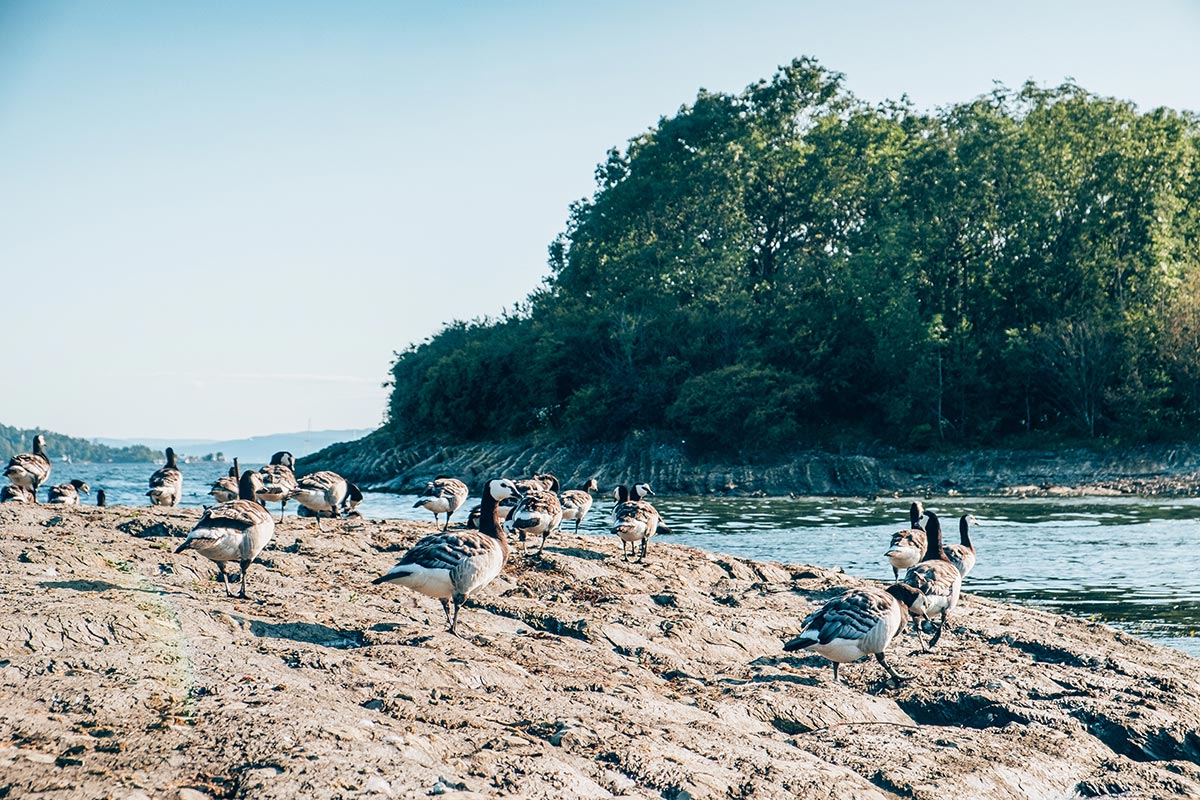 You would have to be a local to know about this place and that’s how I found out about it. My friend Alf took me here with a group of friends to have lunch inone of the most beautiful places I’ve ever seen. Located on a small island only big enough to fit an open-air restaurant and a little beach, this was definitely one of my favourite experiences in Oslo.
You would have to be a local to know about this place and that’s how I found out about it. My friend Alf took me here with a group of friends to have lunch inone of the most beautiful places I’ve ever seen. Located on a small island only big enough to fit an open-air restaurant and a little beach, this was definitely one of my favourite experiences in Oslo.
The food served at Lille Herbern is all based on seasonal ingredients, with an emphasis on fish and shellfish and most of it is prepared on a charcoal grill. This is a very Norwegian experience and by that I mean the menu is only in Norwegian and there are no tourists here. Your waiter will most likely speak English though.
If you’re a vegetarian like me, you should know that their options are very limited. I did, however, manage to get a salad and roasted potatoes.
To get to Lille Herbern you have to take (probably) the world’s shortest boat trip from a little pier. I’m not exaggerating either, from pier to pier the distance is only about 20 meters (65ft).
The ferry across departs regularly and a return ticket costs NOK 35 ($3.80 USD) for adults and NOK 10 ($1.10 USD) for children. For their details about the restaurant and ferry times, visit the Lilleherbern.no website.
12. See ‘The Scream’ at the Munch Museum (Munchmuseet)
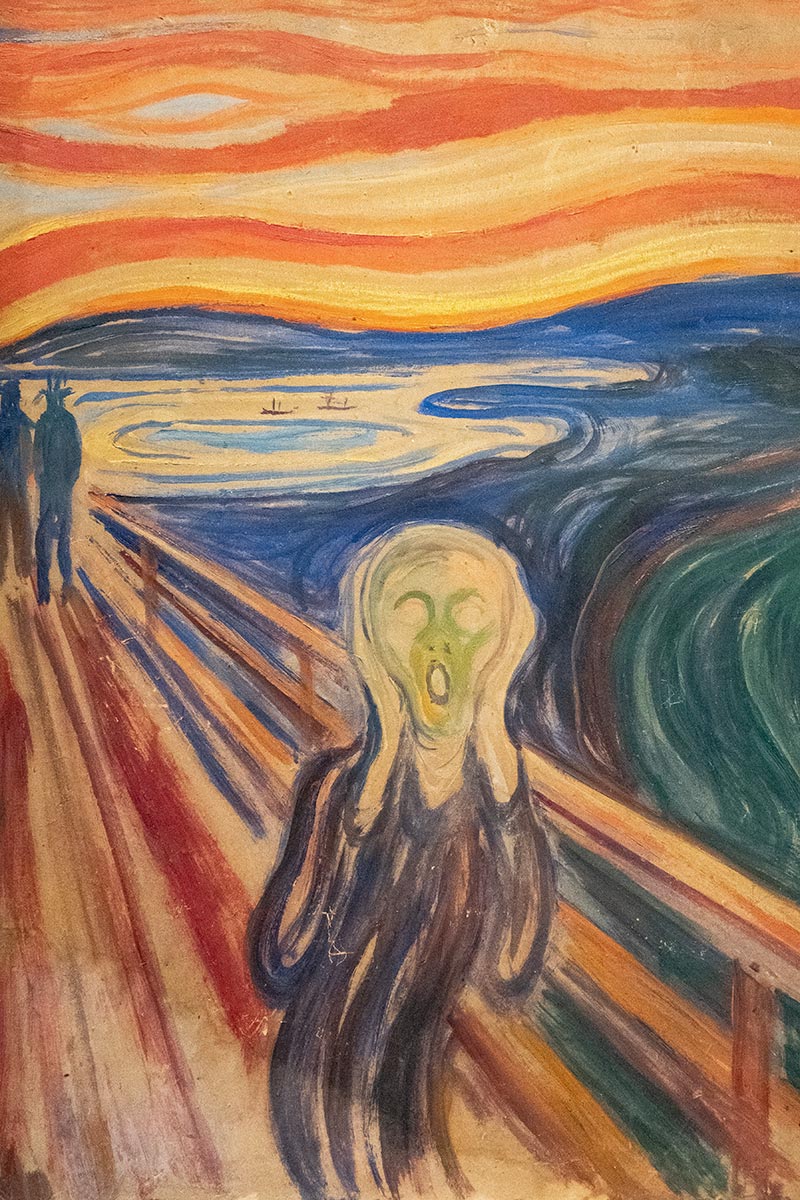
‘The Scream’ by Edvard Munch
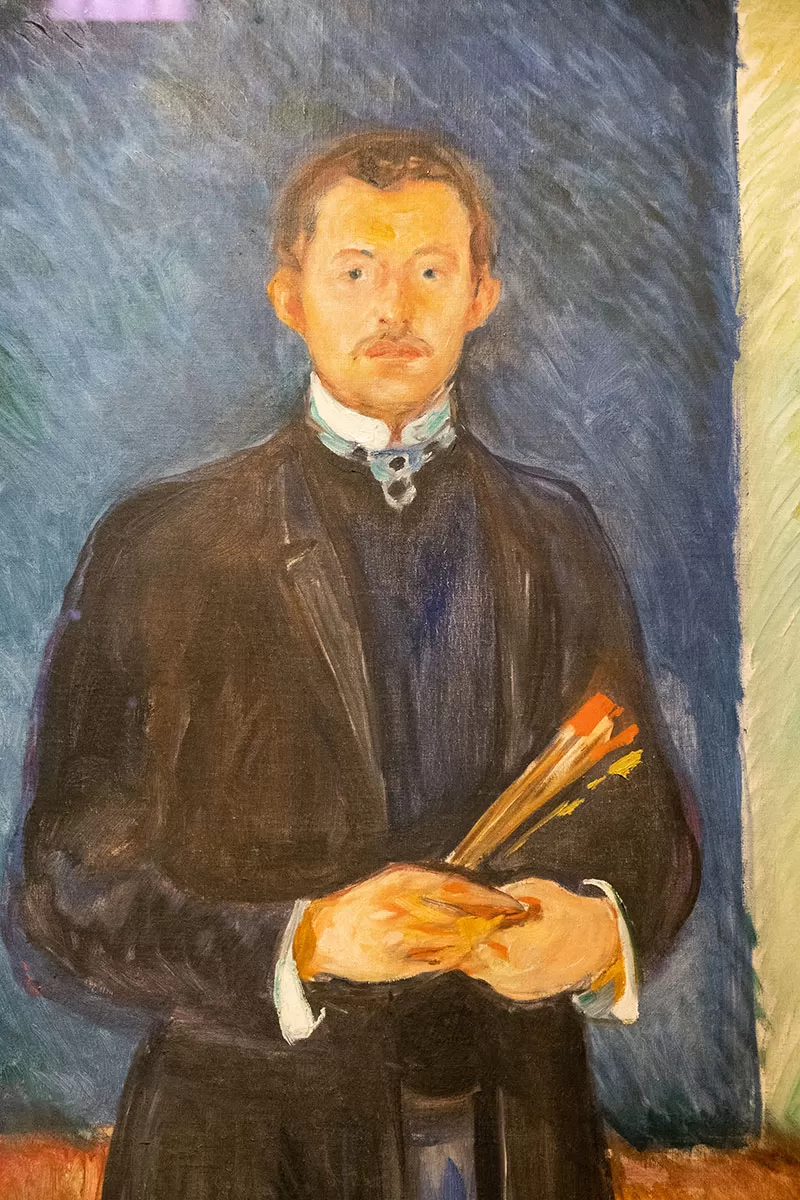
Self-portrait by Edvard Munch
For me, seeing Edvard Munch’s famous painting in person at the Munch Museum was one of the highlights for me during my 2-week Norwegian language holiday.
The Munch Museum has the world’s largest collection of Edvard Munch’s works in its permanent collection with well over half of Munch’s entire production of paintings and at least one copy of all his prints. That’s an impressive 1,200 paintings, 18,000 prints, six sculptures, 500 plates, 2,240 books, and various other items.
The Munch Museum are moving into a new state-of-the-art building and may be closed during the transition. Be sure to check the latest times on the official Munchmuseet website. Entrance to the Munch Museum is NOK 120 / $13 USD or free with the Visit Oslo Pass.
13. Visit Edvard Munch’s grave at Vår Frelsers gravlund (Our Saviour’s Cemetery)
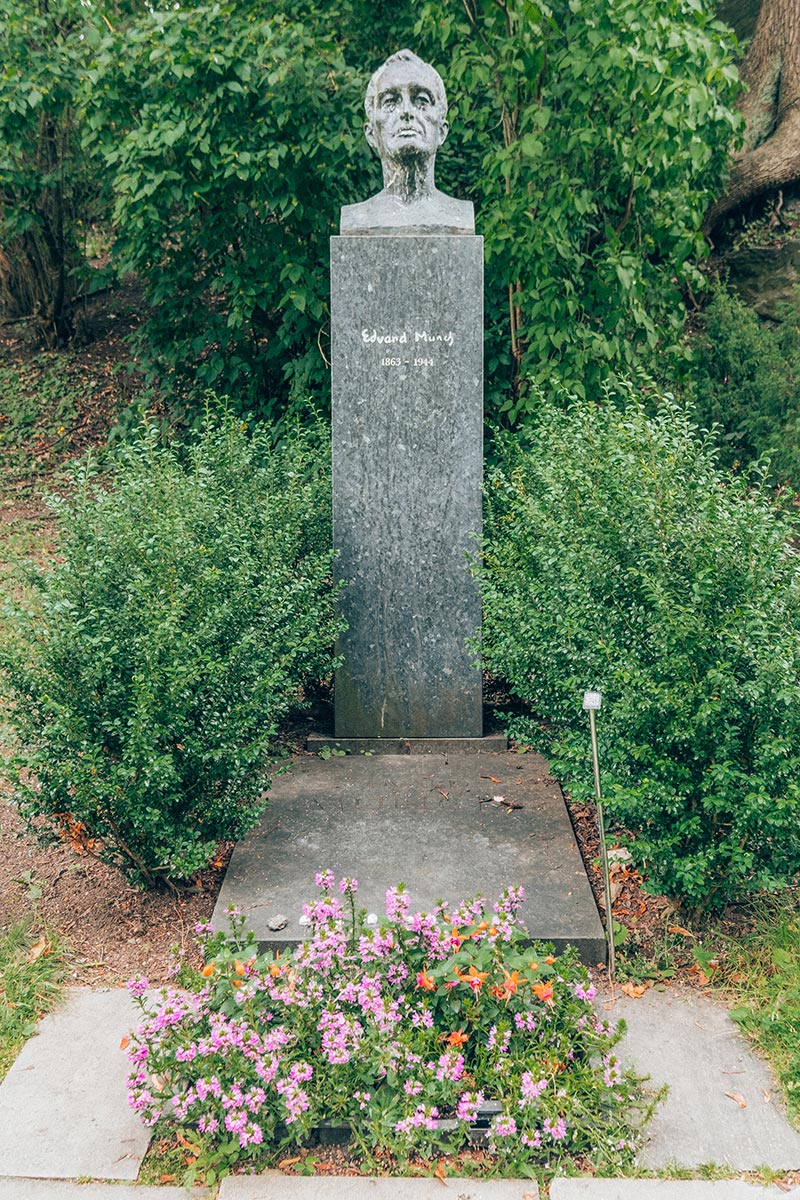 I swear there’s nothing creepy about visiting a cemetery, especially one that’s as nice as this one. Vår Frelsers gravlund is the final resting place for many important famous Norwegian’s, including playwright Henrik Ibsen and Edvard Munch. For more history and details about Our Saviour’s Cemetery, visit my guide to free things to do in Oslo.
I swear there’s nothing creepy about visiting a cemetery, especially one that’s as nice as this one. Vår Frelsers gravlund is the final resting place for many important famous Norwegian’s, including playwright Henrik Ibsen and Edvard Munch. For more history and details about Our Saviour’s Cemetery, visit my guide to free things to do in Oslo.
14. Explore Akershus Fortress (Akershus festning)
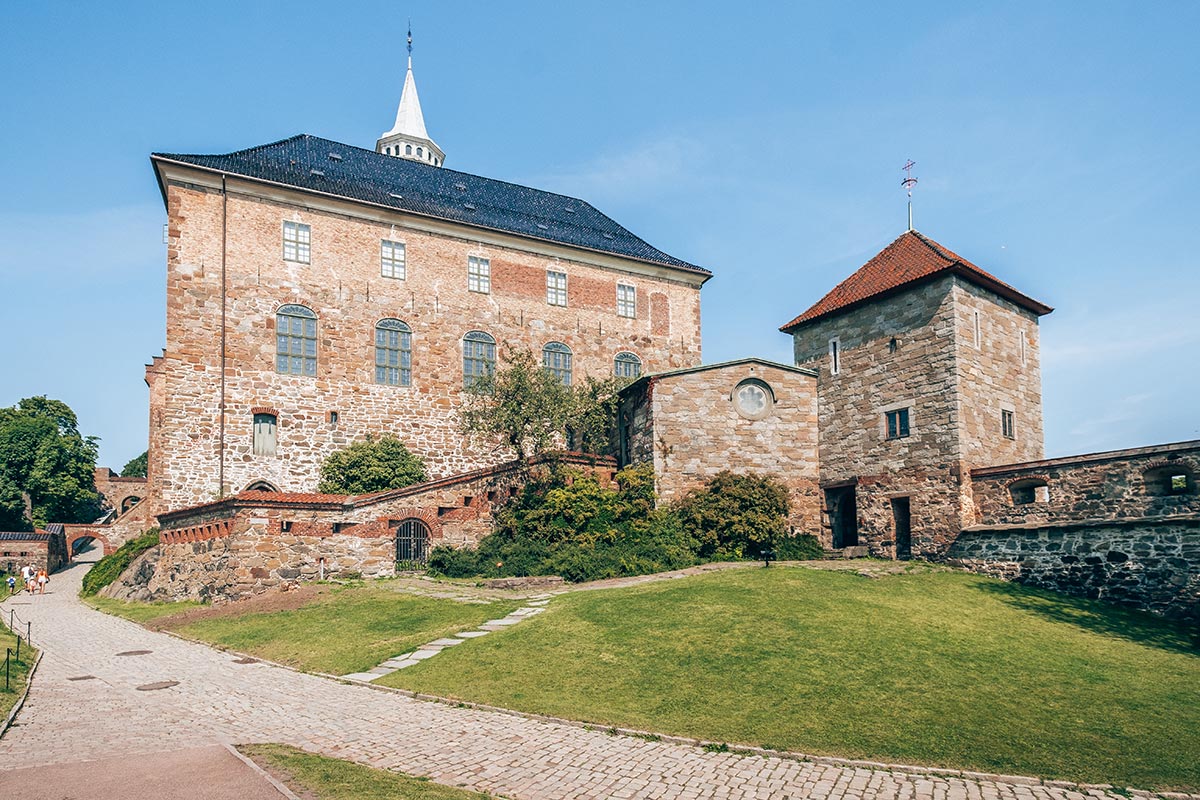 By the year 1300 AD Oslo had around 3000 residents. King Håkon V (1299 – 1319) was the first king to decide to live permanently in the city and so commissioned the construction of the Akershus Fortress and Castle with the sole purpose to protect and provide a royal residence in Oslo.
By the year 1300 AD Oslo had around 3000 residents. King Håkon V (1299 – 1319) was the first king to decide to live permanently in the city and so commissioned the construction of the Akershus Fortress and Castle with the sole purpose to protect and provide a royal residence in Oslo.
Thanks to its strategic location at the tip of the headland, Akershus Fortress withstood a number of sieges over the centuries. It was modernised by King Christian IV (1588-1648) who converted the castle into a luxurious Renaissance castle and royal residence. It has also been used as a military base since then.
Today, visitors are free to wander the grounds and the visitor centre although I do recommend going inside the castle building to see the banquet halls, the Royal Mausoleum and the government’s reception rooms, and the small, historic church that’s home to the royal sarcophagi. The entrance is NOK 100 / $11 USD or free with the Visit Oslo Pass.
Visit the official Akershus Fortress website for more information.
15. Explore Oslo City Hall (Oslo Rådhuset)
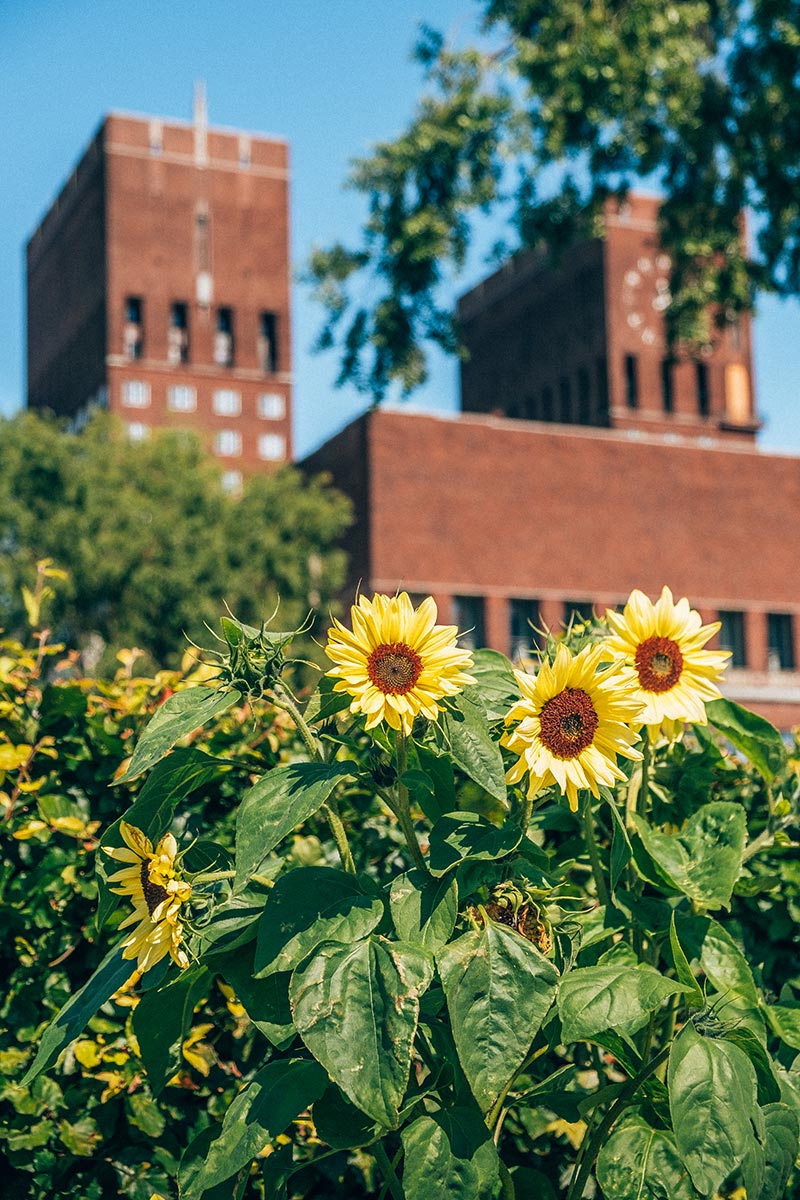
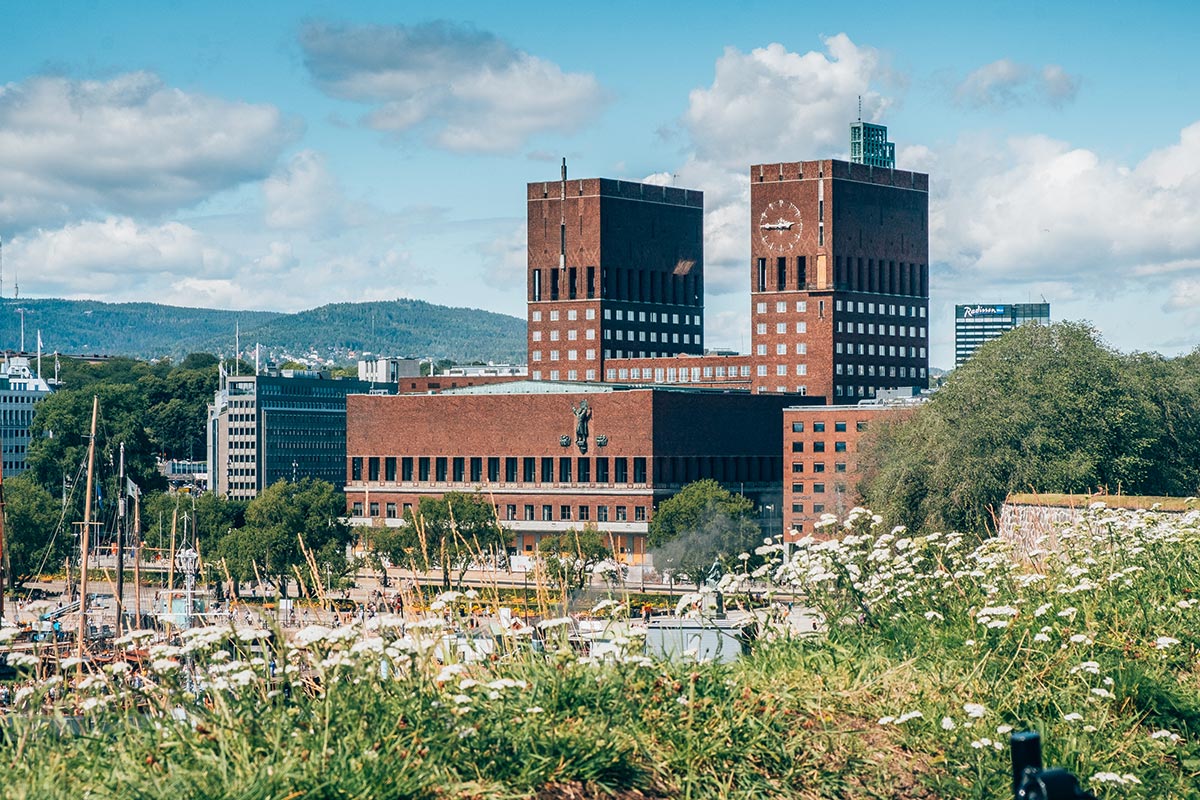
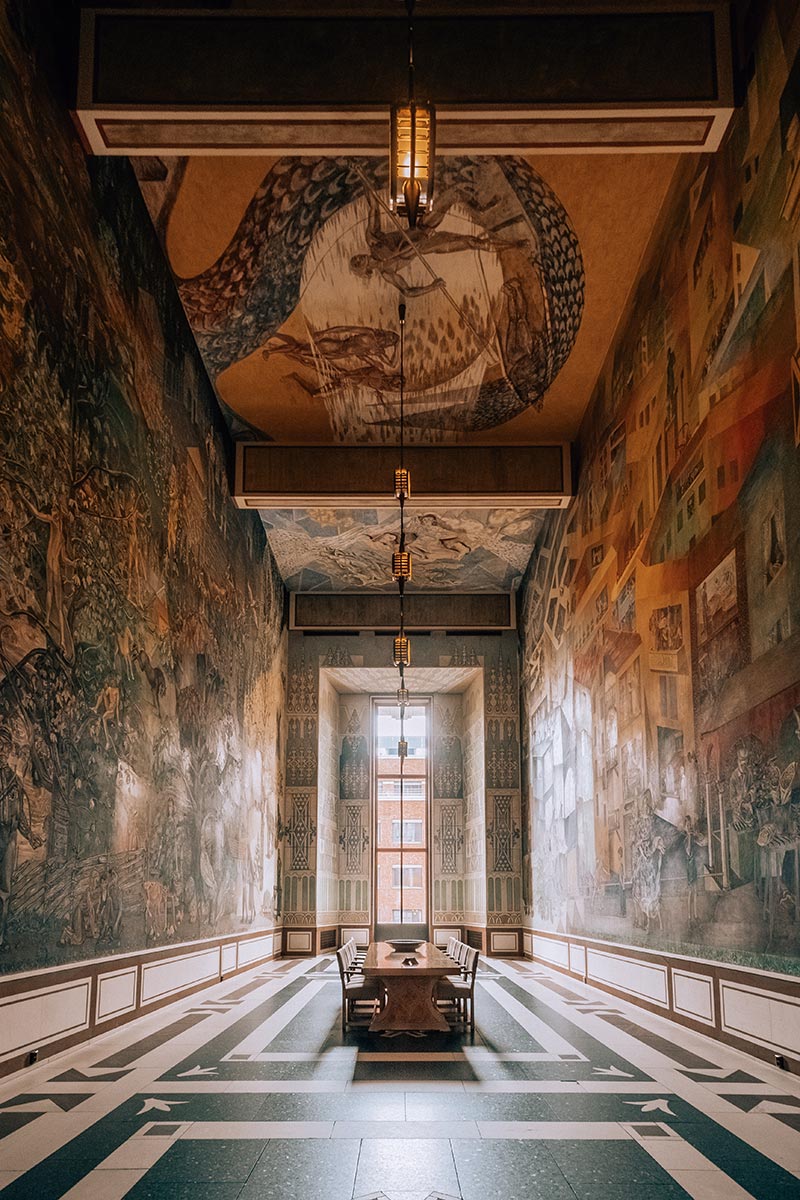 Oslo City Hall isn’t like any city hall, this once is beautifully decorated by great Norwegian artists, including Munch! That was enough to convince me to visit, at least. Oslo’s Rådhuset (City Hall) also hosts the Nobel Peace Prize ceremony too. For more history and details about Oslo City Hall, visit my guide to free things to do in Oslo.
Oslo City Hall isn’t like any city hall, this once is beautifully decorated by great Norwegian artists, including Munch! That was enough to convince me to visit, at least. Oslo’s Rådhuset (City Hall) also hosts the Nobel Peace Prize ceremony too. For more history and details about Oslo City Hall, visit my guide to free things to do in Oslo.
16. Eat Oslo Street Food at Torggata bad
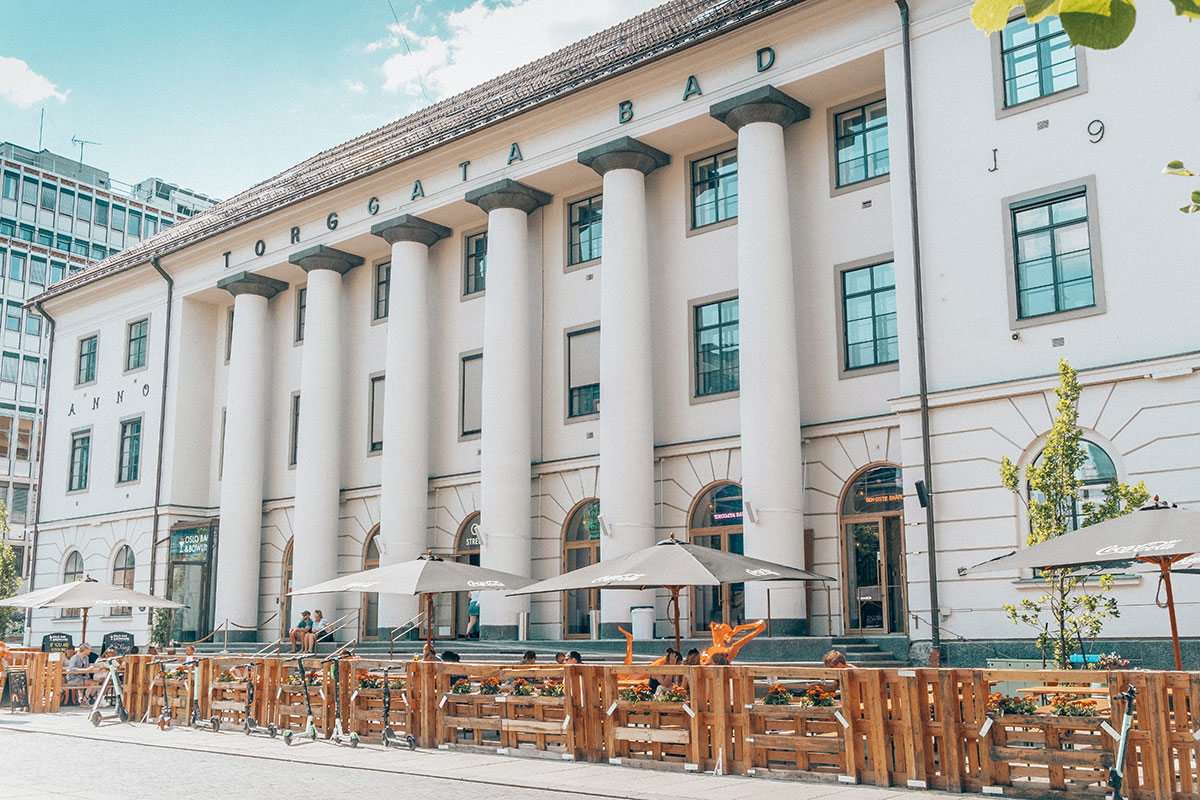 Oslo Street Food is a brand new food hall that’s opened up right in the centre of town. Located in the Torggata Bad building, you’ll find 16 kitchens and four bars serving Japanese, Filipino, Lebanese, Mexican, Peruvian, and Norwegian food.
Oslo Street Food is a brand new food hall that’s opened up right in the centre of town. Located in the Torggata Bad building, you’ll find 16 kitchens and four bars serving Japanese, Filipino, Lebanese, Mexican, Peruvian, and Norwegian food.
Originally, when Torggata Bad first opened its doors in 1925, it was the largest public bath of the time. With its swimming pools, Roman baths, showers and a spa, this was the place to be in the 20s.
Oslo Street Food is open Monday – Saturday from 11:00 and Sunday from 12:00.
17. Buy some chocolate at the Freia shop
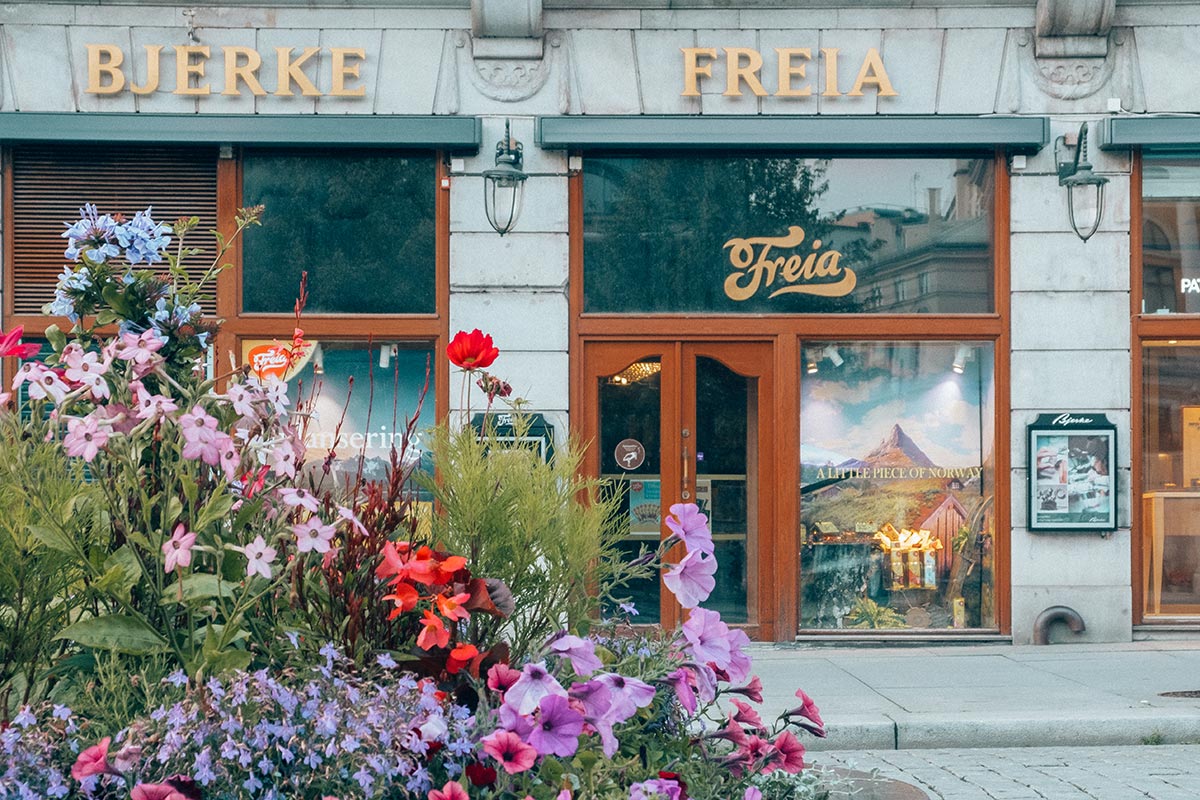 If you follow me on Instagram @intrepidguide, you’ll know how much I love the Norwegian chocolate bar Kvikk Lunsj (“Quick Lunch”) manufactured by Freia. So, when I heard that their was a Freia shop located in the city centre, I had to go visit.
If you follow me on Instagram @intrepidguide, you’ll know how much I love the Norwegian chocolate bar Kvikk Lunsj (“Quick Lunch”) manufactured by Freia. So, when I heard that their was a Freia shop located in the city centre, I had to go visit.
Freia is Norway’s most famous chocolate producer. It was founded in 1889 and by the turn of the century Freia was the leading Norwegian brand in sweets. The company is famous for Freia Melkesjokolade and Kvikk Lunsj and Marabou, as well as for other candy and dessert products which you can find in this cute store.
Since it started, the Freia factory has been in the Rodeløkka neighbourhood in the borough of Grünerløkka in Oslo. You can find the Freia store at Karl Johans gate 3.
18. Take a journey across the Pacific Ocean at the Kon-Tiki museum
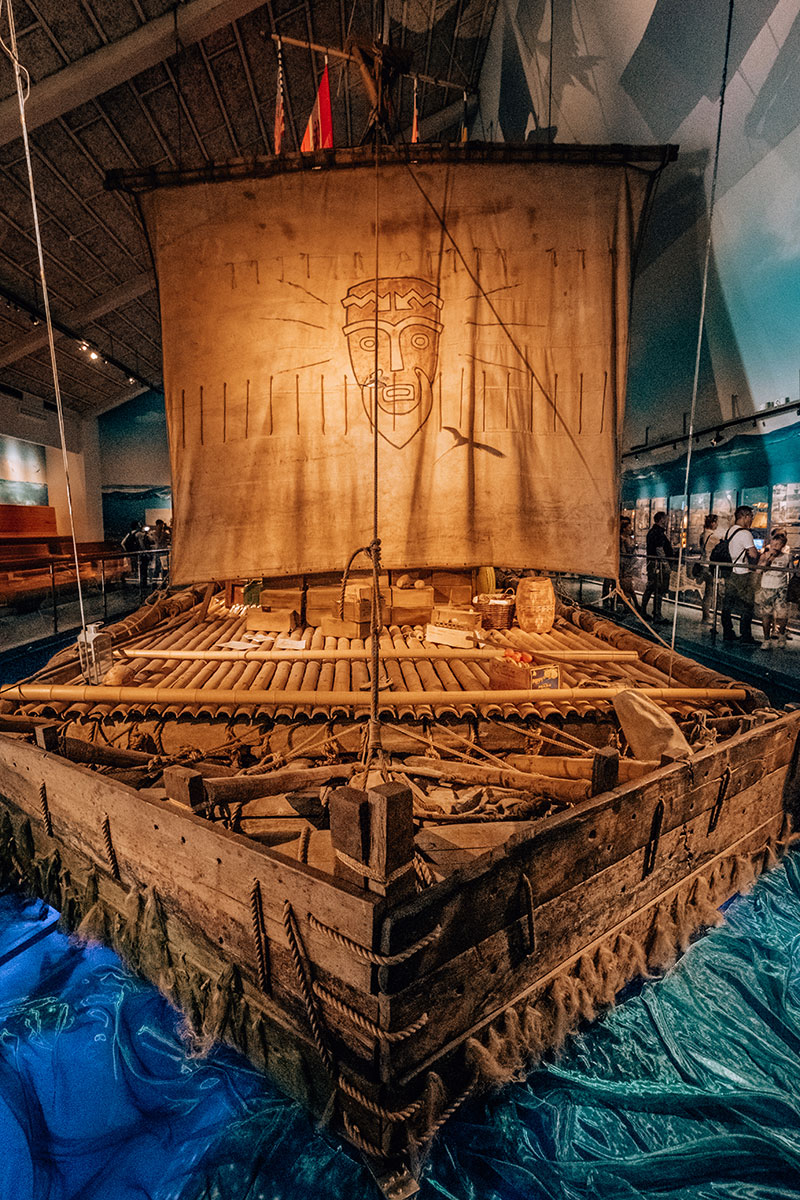
Kon-Tiki vessel
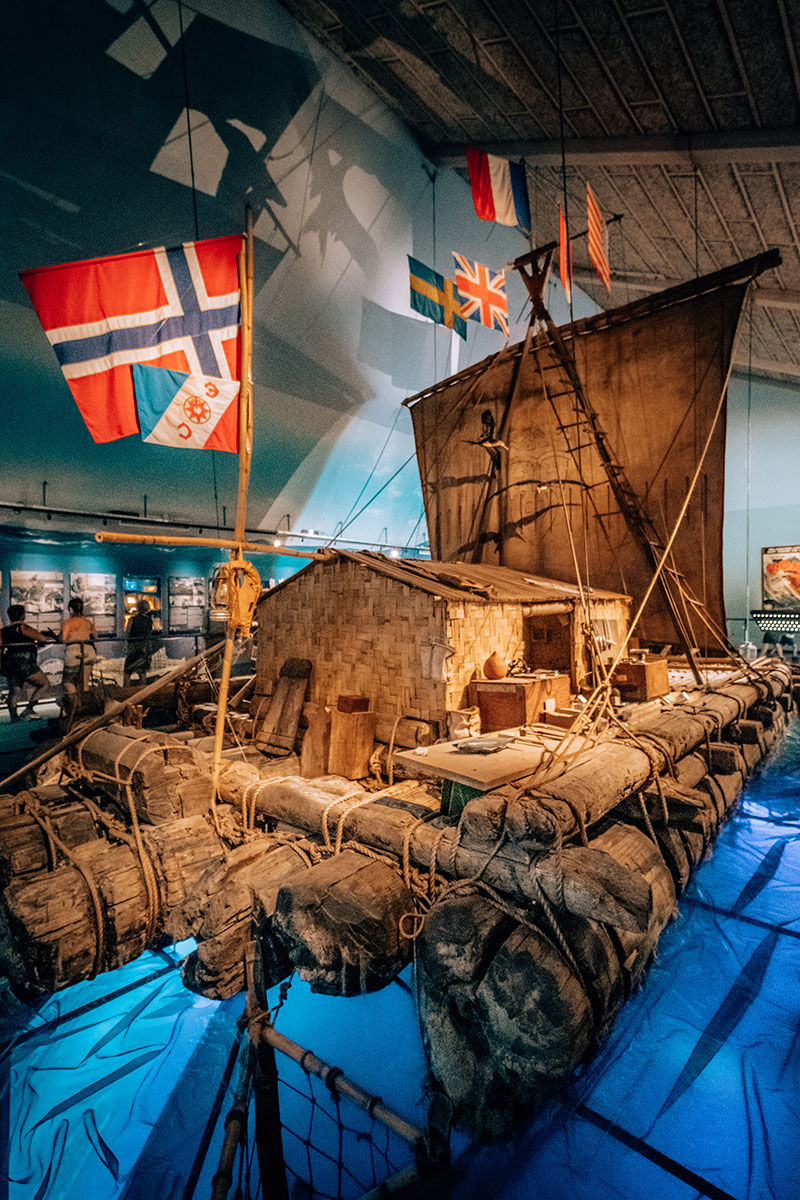
Kon-Tiki vessel
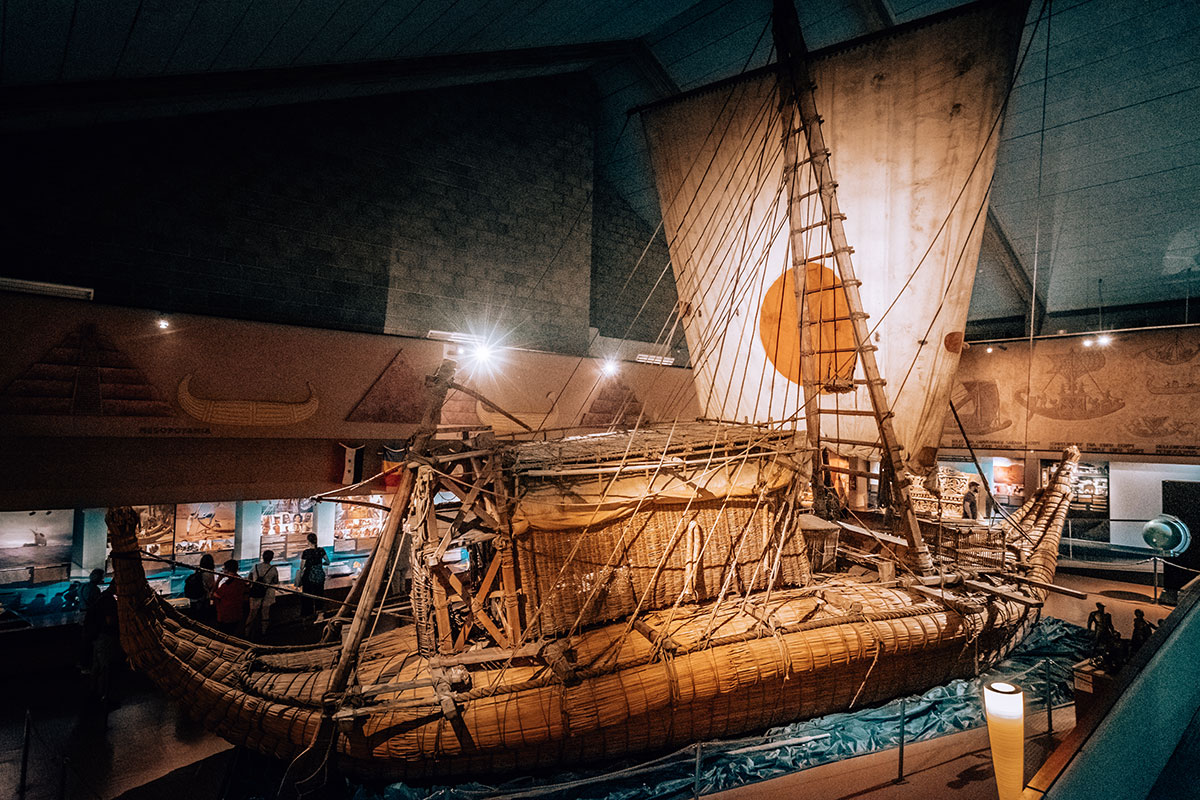
Ra II vessel
It wasn’t until I visited Oslo that I heard about the incredible story of Thor Heyerdahl. Thor is a Norwegian explorer and one of history’s most famous. In 1947, Thor’s raft made of balsa wood carried him his crew of 5 men across the Pacific Ocean from Peru to Polynesia. Why? Well, Thor wanted to show that people from early South American civilisation could have reached Polynesia with seafaring vessels.
The voyage of 8000km (4970 miles) lasted 101 days and took place in the South-east trade winds with the aid of wind patterns and ocean currents. On top of that, Thor never learned how to swim, even after a near death-by-drowning experience as a child that left him with a form of hydrophobia (an extreme or irrational fear of water). Thor’s epic journey was captured on film and was awarded an Academy Award for best documentary in 1951.
But Thor didn’t stop there. He undertook another voyage, this time on a reed boat made of papyrus. After a previous attempt with the reed boat Ra, in 1970 Heyerdahl returned with his crew on Ra II and sailed from Safi in Morocco to Barbados in the Caribbean. This time it was to demonstrate the possibility of early culture contact between the so-called “old world” (Americas) and “new” world (Africa, Asia, and Europe).
In the Kon-Tiki Museum you’ll find objects from Heyerdahl’s expeditions arranged around the the original Kon-Tiki raft, and the papyrus boat Ra II.
The Kon-Tiki museum is open daily. Entrance is NOK 120 / $13 USD or is free with the Visit Oslo Pass.
19. Admire three original viking ships at the Viking Ship Museum (Vikingskipshuset)
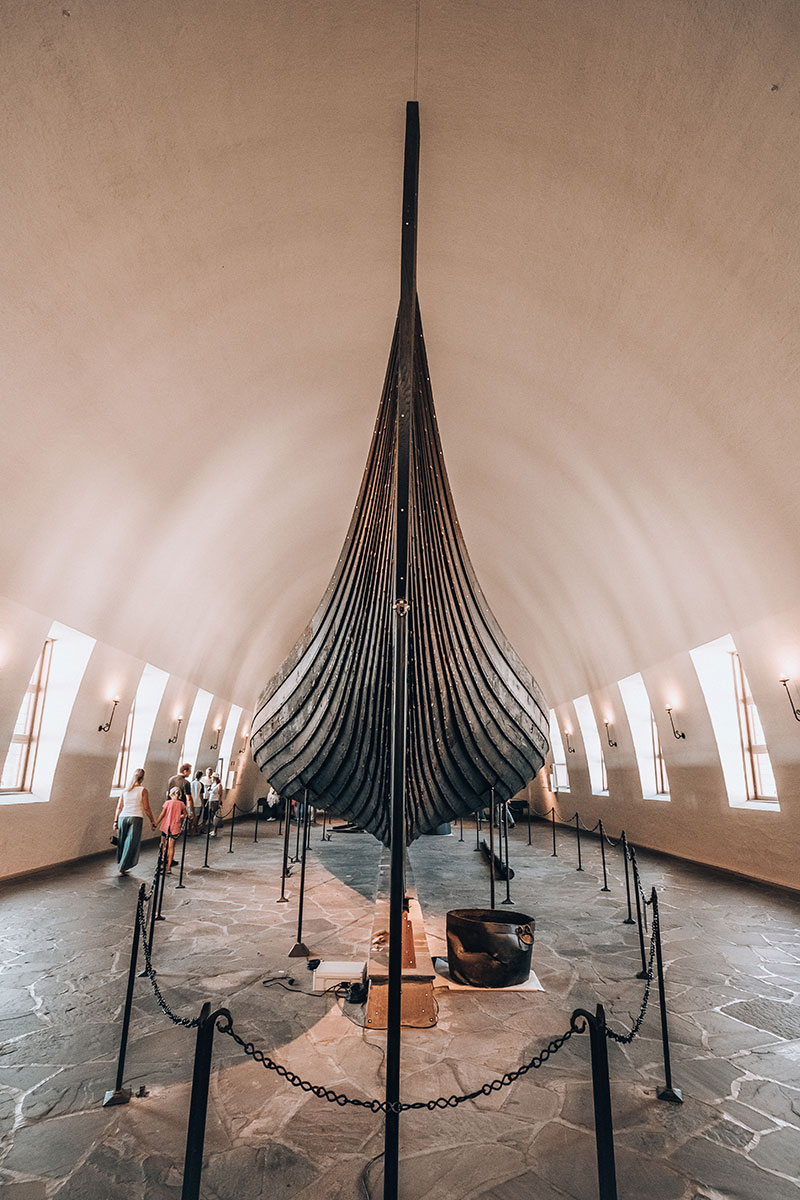
Gokstad
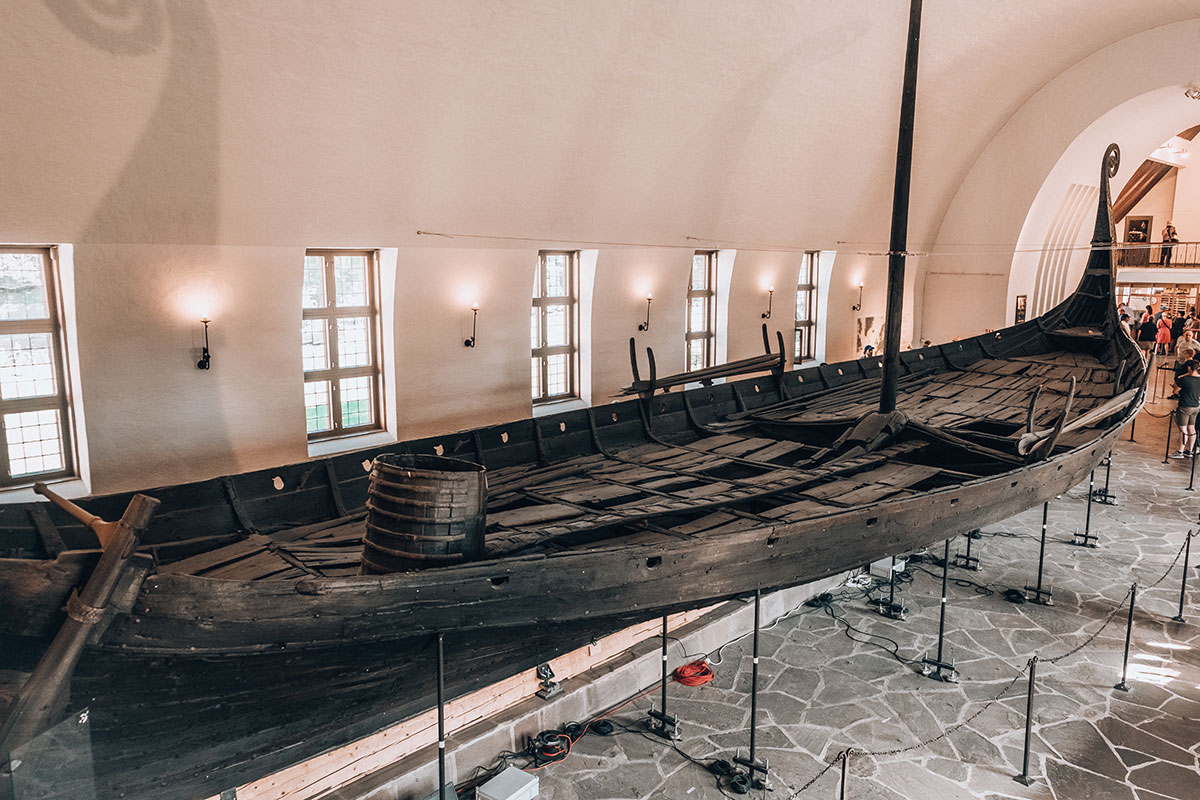 Get up close to 3 of the world’s most well-preserved viking ships at the Viking Ship Museum. Each of the viking ships here were once ocean going vessels before they were hauled onto land and buried under huge mounds in burial rituals for their wealthy owners. When they were dug up, archeologists found skeletons, beautiful wood carvings, and a diverse range of artefacts.
Get up close to 3 of the world’s most well-preserved viking ships at the Viking Ship Museum. Each of the viking ships here were once ocean going vessels before they were hauled onto land and buried under huge mounds in burial rituals for their wealthy owners. When they were dug up, archeologists found skeletons, beautiful wood carvings, and a diverse range of artefacts.
As you enter the museum, the first ship you’ll see is the most famous ship called Oseberg. It was excavated from the largest known ship burial in the world. The ship is richly decorated and was full of lavish burial gifts for the two women onboard.
To the left is the Gokstad, a fast ship suitable for high sea voyages. The man buried in it suffered cutting blows to both legs, indicating that he probably died in battle.
To your right is Tune, made from oak around 910 AD it supported up to 24 rowers. The strong mast and lack of cargo capacity indicate it was most likely used in battle.
The Viking Ship Museum is open daily. Entrance is NOK 100 / $11 USD or free with the Visit Oslo Pass.
20. Norwegian Museum of Cultural History (Norsk Folkemuseum)
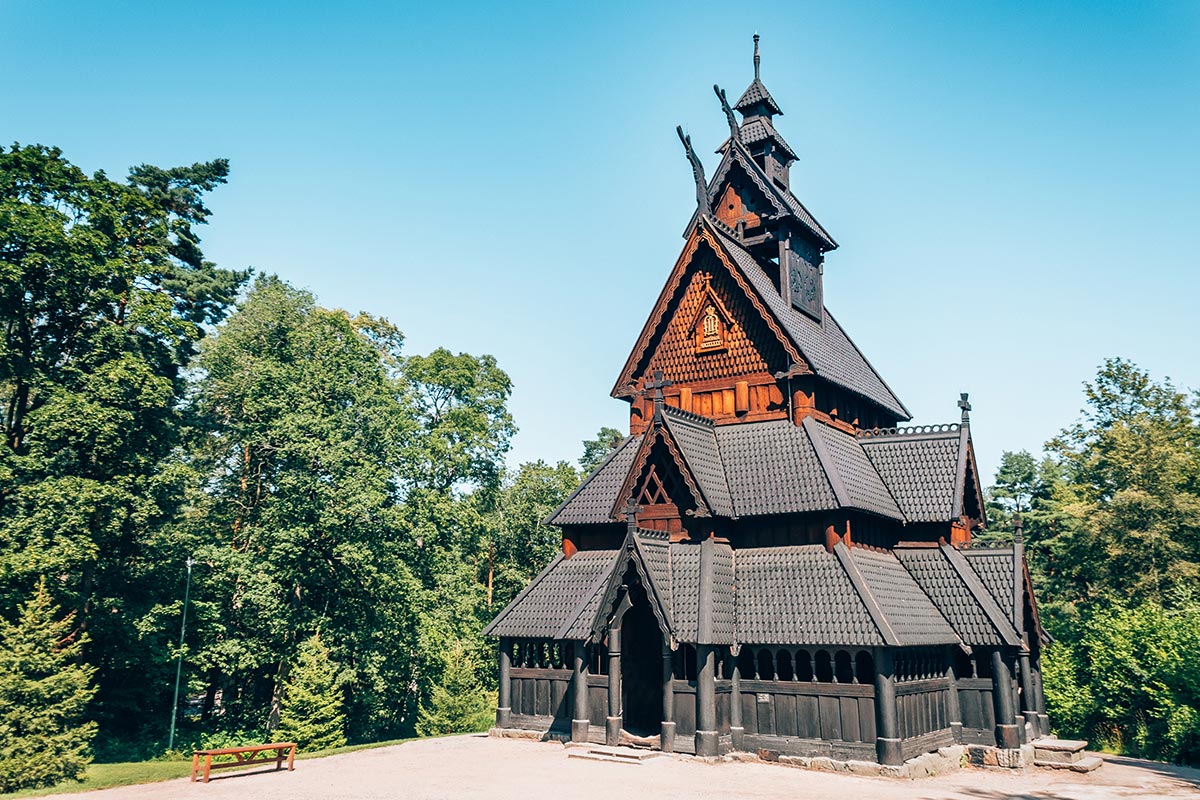
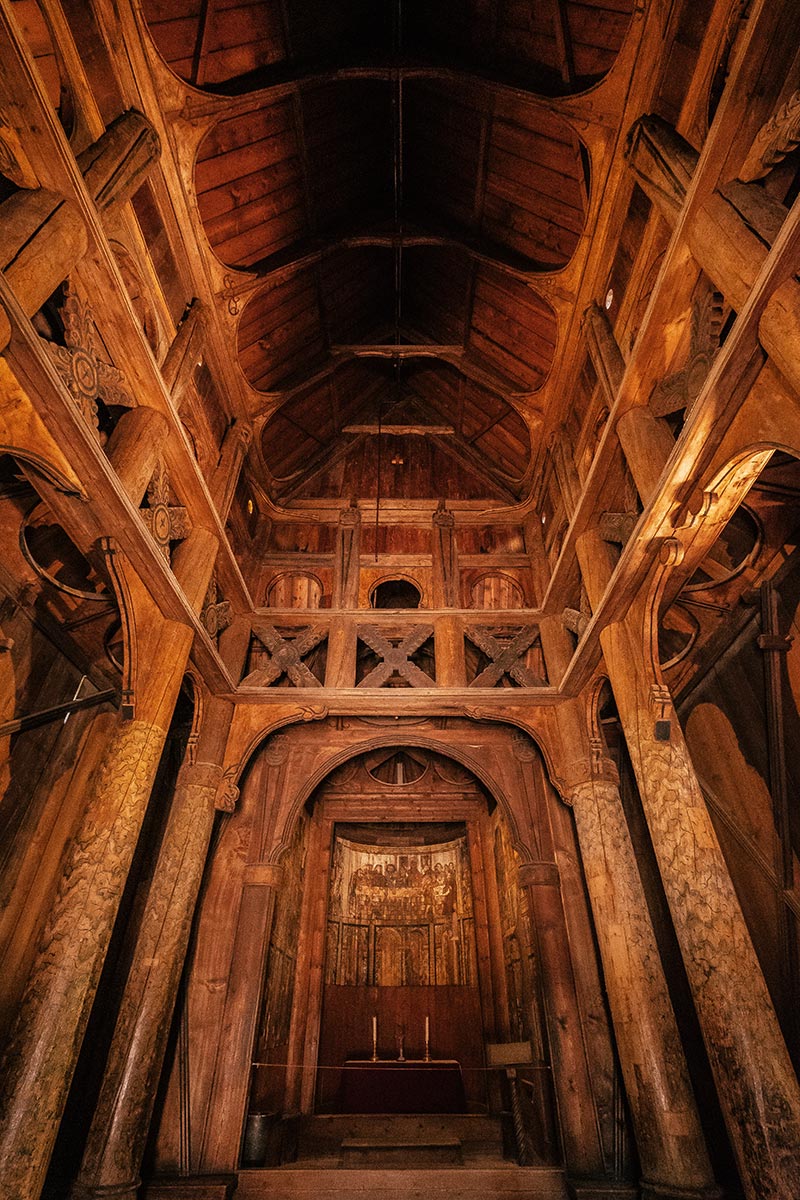
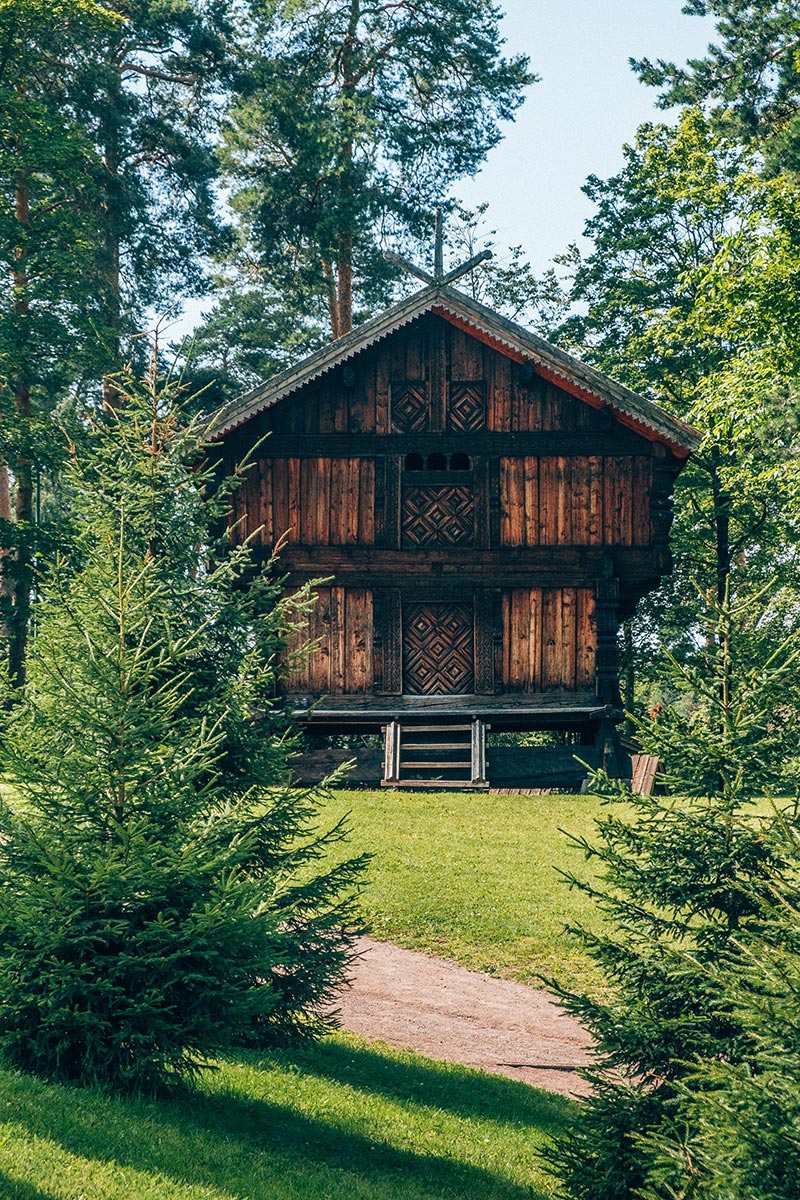
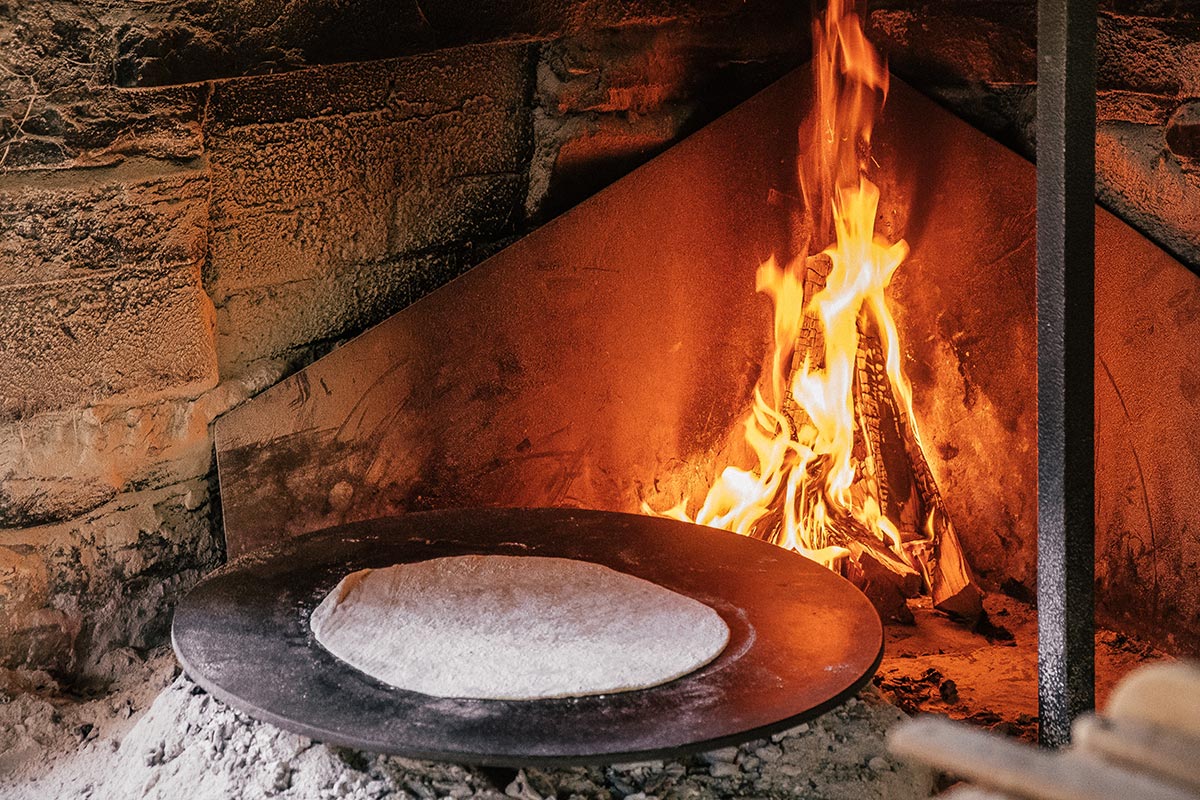
Making traditional Norwwgian Lefse bread on the fire
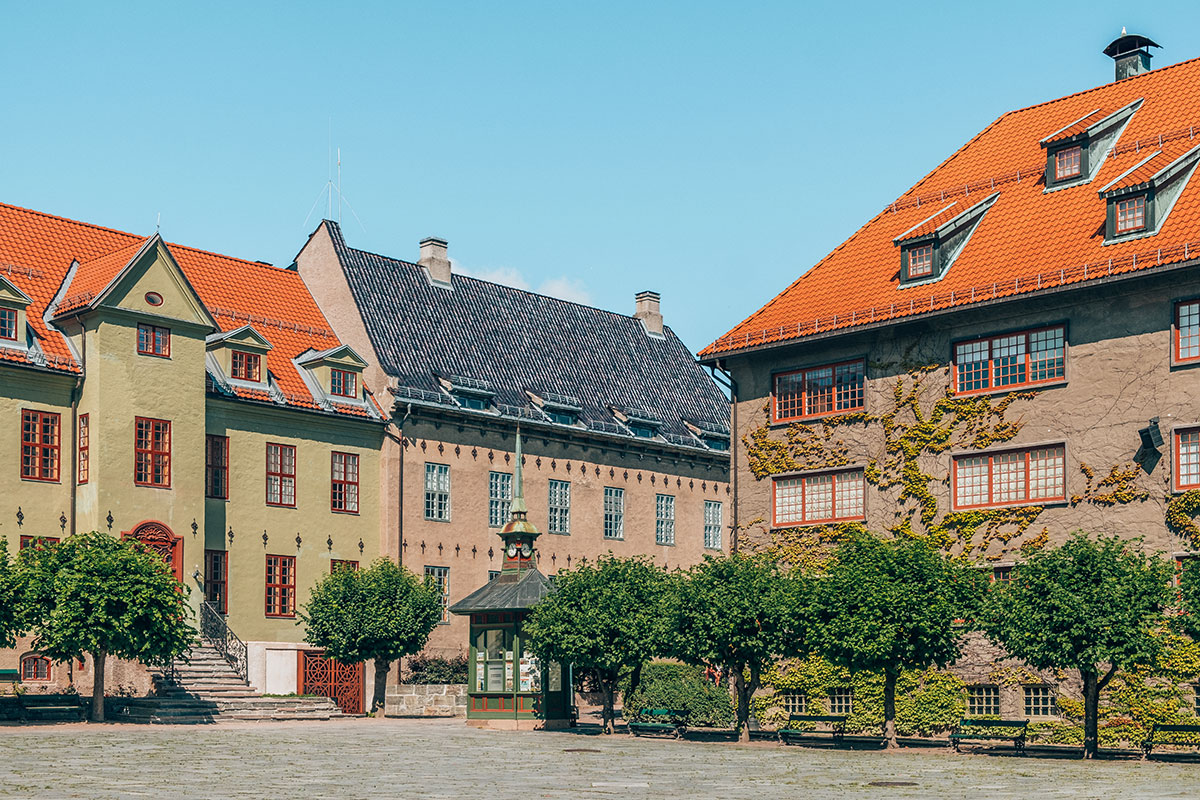
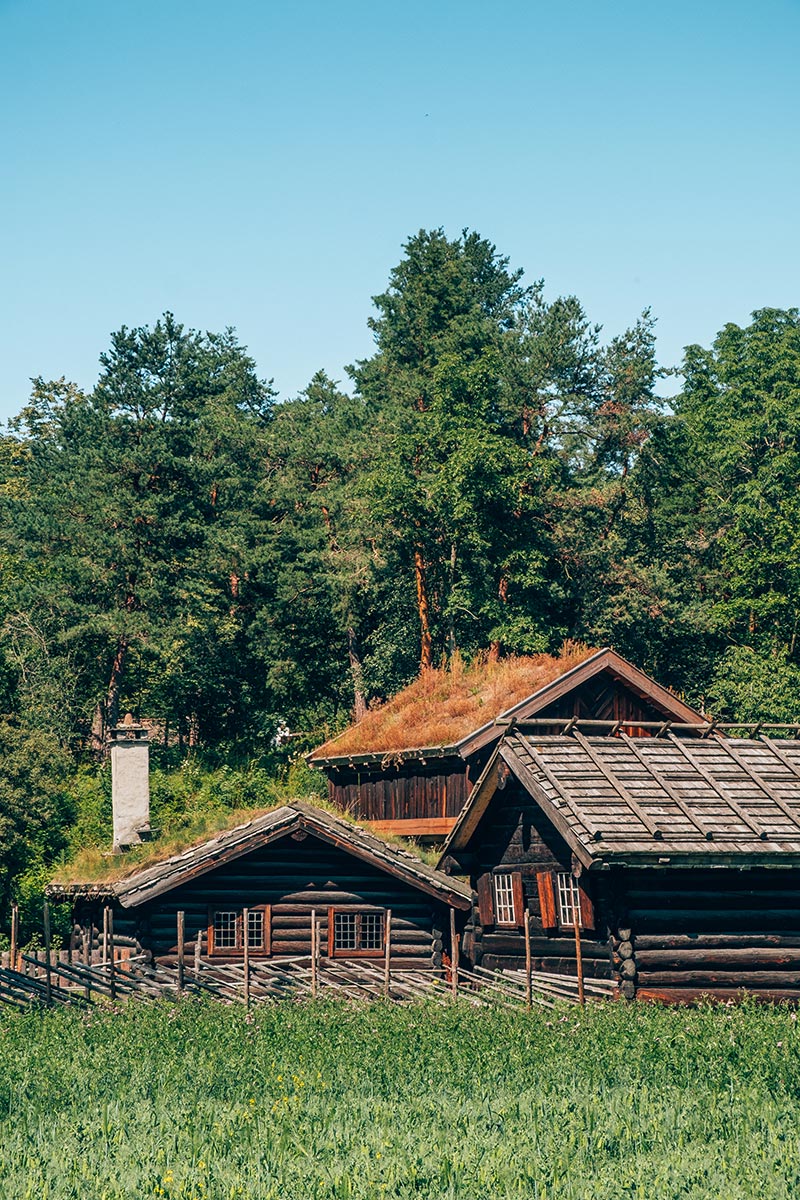 The Norwegian Museum of Cultural History is one of the best museums I’ve ever been too and the perfect alternative for those who hates museums. Called Norsk Folkemuseum in Norwegian, this is a huge open-air museum that allows you to literally walk around and inside many historical wooden buildings. There is also wonderful 13th-century wooden stave church from Gol, north of Oslo.
The Norwegian Museum of Cultural History is one of the best museums I’ve ever been too and the perfect alternative for those who hates museums. Called Norsk Folkemuseum in Norwegian, this is a huge open-air museum that allows you to literally walk around and inside many historical wooden buildings. There is also wonderful 13th-century wooden stave church from Gol, north of Oslo.
It’s like the museum has its own little town. There are ‘streets’ you can wander down to see over 150 buildings which were brought here from all over the country. Each building represents different regions and eras. There’s even a reconstructed traditional Sami goahti (tent).
Inside a beautiful three-story 19th-century building is an exhibition on the last two centuries in Norway. You can also find a collection of Sami national costumes from the northern reaches of Lapland, toys, and folk art.
As you wander the grounds you’ll see staff (both adults and children) in traditional costume who run a farm and saw mill. Inside one of the houses are two girls who make and sell lefse – a traditional Norwegian sweet bread made of potatoes, milk and flour. I definitely recommend buying one fresh from the oven fire.
The Norsk Folkemuseum is open daily. Entrance is NOK 160 / $17 USD or free with the Visit Oslo Pass.
21. See famous artworks at National Museum of Art, Architecture and Design (Nasjonalmuseet)
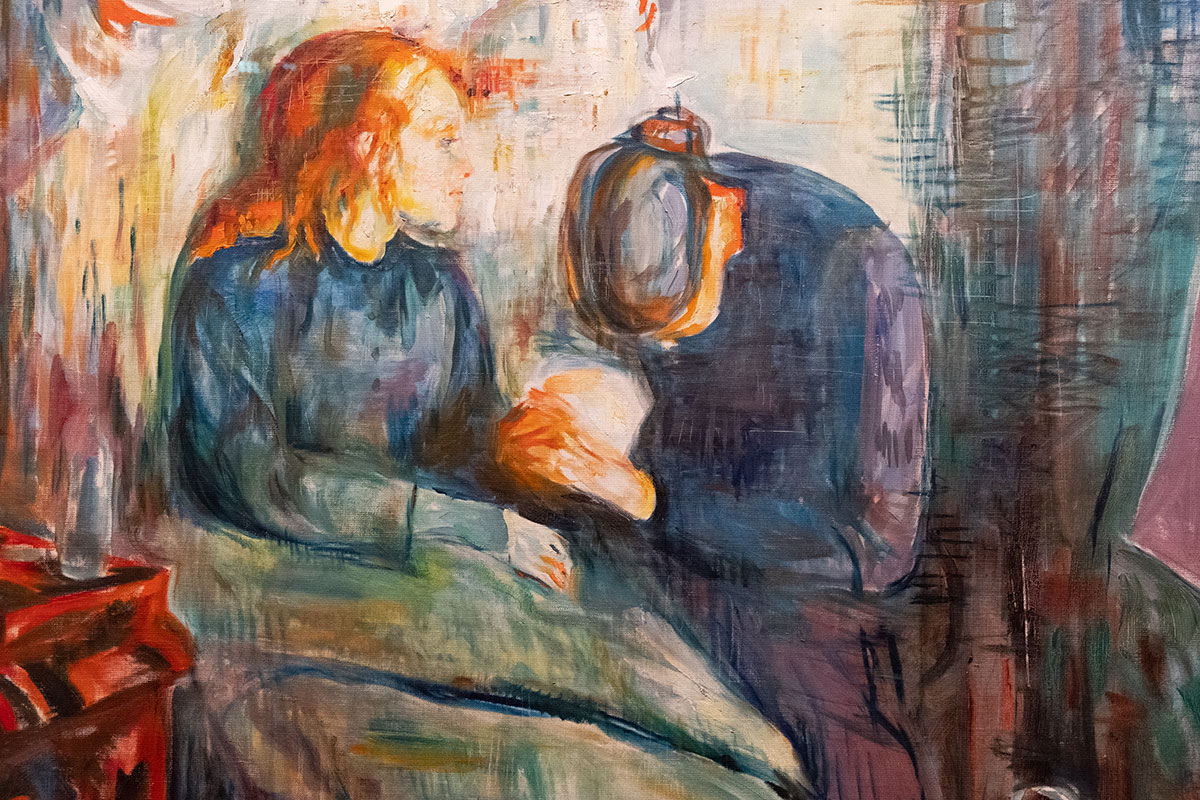
‘The Sick Child’ by Edvard Munch
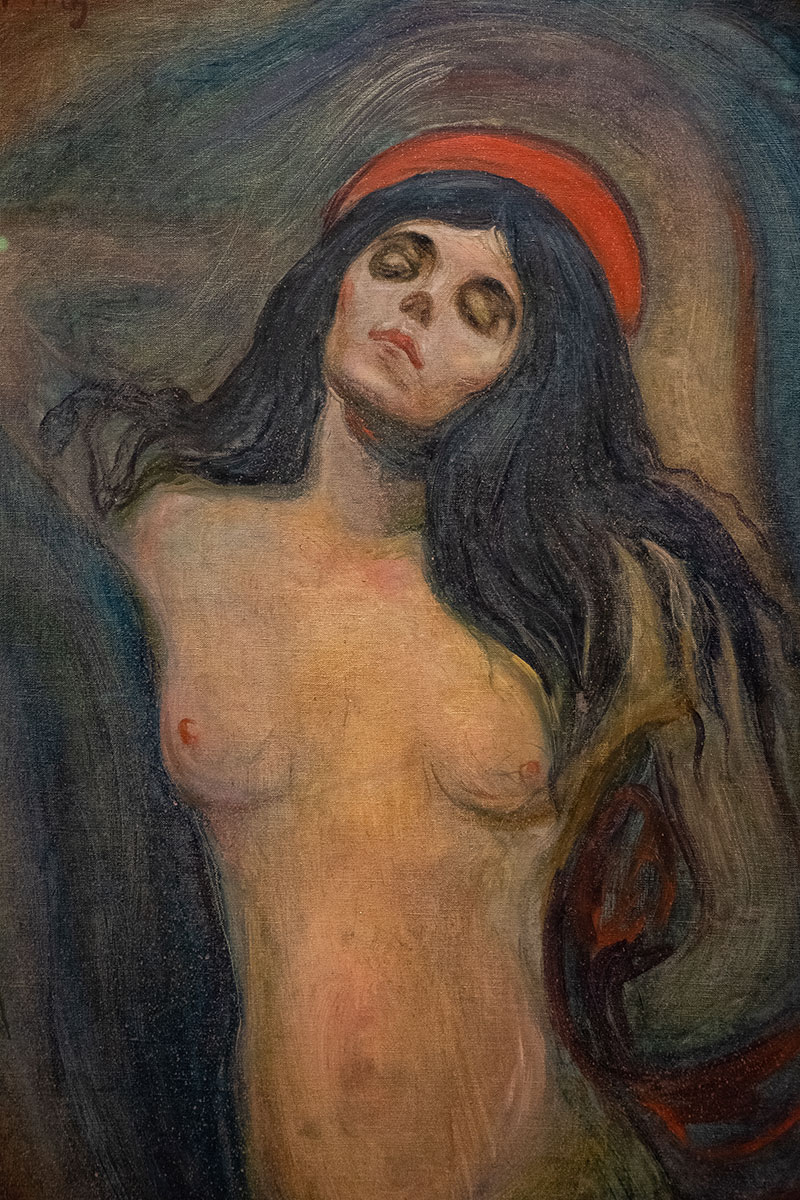
‘Madonna’ by Edvard Munch
The Oslo National Gallery houses a large collection of works by Norwegian painters from the 19th century until about 1945. From famous landscape painter J. C. Dahl, T. Fearnley, H. F. Gude, to naturalist painters and illustrators C. Krohg, and G. P. Munthe. A separate and special exhibit is devoted to Edvard Munch where you’ll see The Scream, Madonna, The Sick Child, and The Dance of Life. Other famous artworks on display includes those by El Greco, Rubens, and Rembrandt
[September 2019]: The National Gallery is temporarily closed while it relocated to the new National Museum opening in 2020. Check the official Norwegian National Museum website for more details.
22. Climb aboard the Polar Ship Fram at the Fram Museum (Frammuseet)
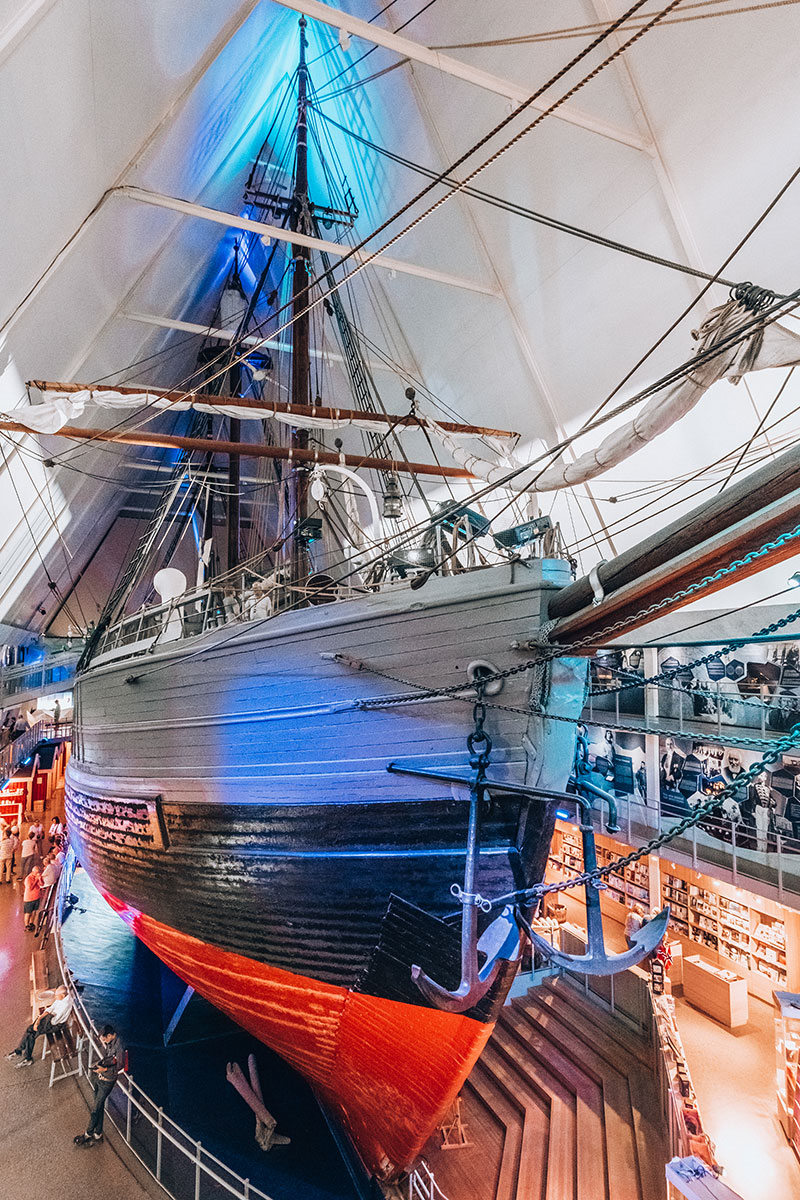
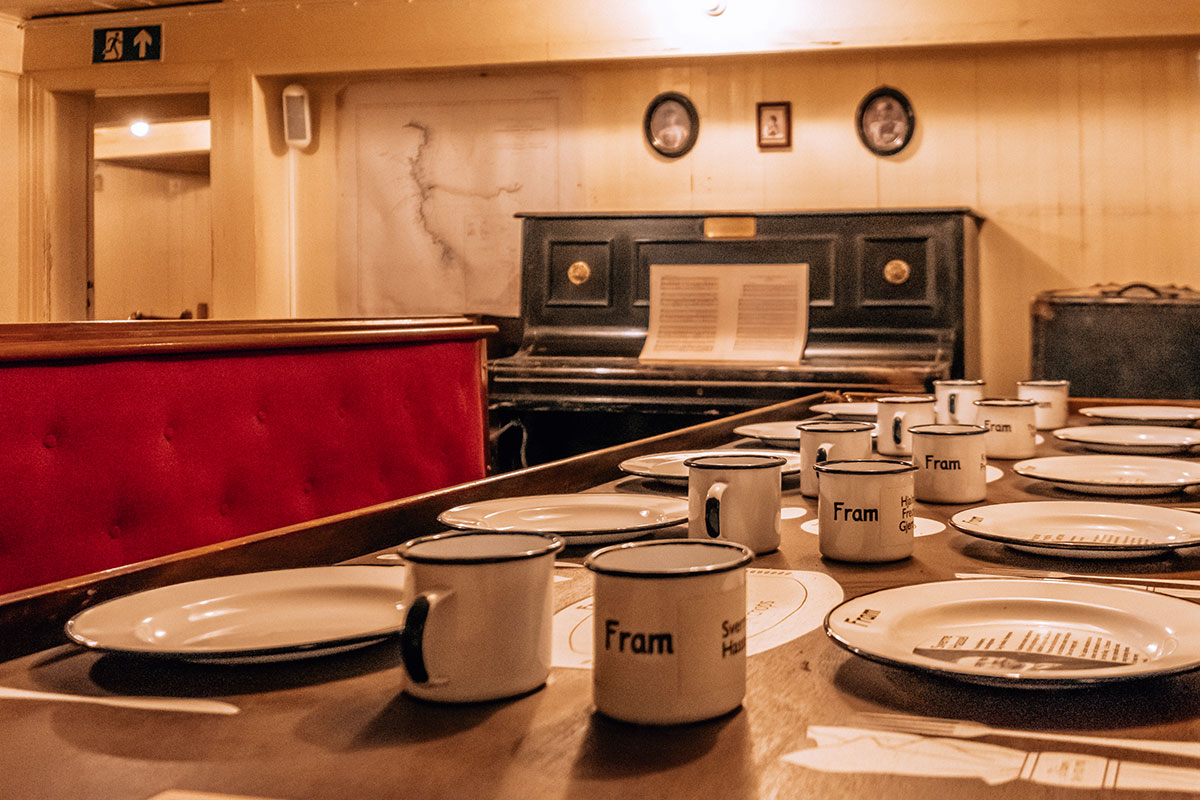 Norwegians are famous for being daring explorers and nothing could be more daring or dangerous than polar exploration. The Fram Museum tells the story of Norwegian polar exploration and in particular honours three great Norwegian polar explorers — Fridtjof Nansen, Otto Sverdrup and Roald Amundsen.
Norwegians are famous for being daring explorers and nothing could be more daring or dangerous than polar exploration. The Fram Museum tells the story of Norwegian polar exploration and in particular honours three great Norwegian polar explorers — Fridtjof Nansen, Otto Sverdrup and Roald Amundsen.
The Fram Museum is centred around the original exploration vessel itself named Fram (“Forward”) which was used in expeditions of the Arctic and Antarctic regions between 1893 and 1912.
Fram was designed and built by the Scottish-Norwegian shipwright Colin Archer for Fridtjof Nansen’s 1893 Arctic expedition who planned to freeze the ship into the Arctic ice sheet and float with it over the North Pole. Sounds crazy, right? Well, it worked! Fram is said to have sailed farther north (85°57’N) and farther south (78°41’S) than any other wooden ship.
The museum also exhibits images of the fauna of the polar regions, such as polar bears and penguins. In a separate building is Gjøa, the first vessel to transit the Northwest Passage. It took Roald Amundsen and this crew of six three years to accomplish this feat which finished in 1906.
Entrance to the Fram Museum is NOK 120 / $13 USD or free with the Visit Oslo Pass.
23. Spend the day on Bygdøy island
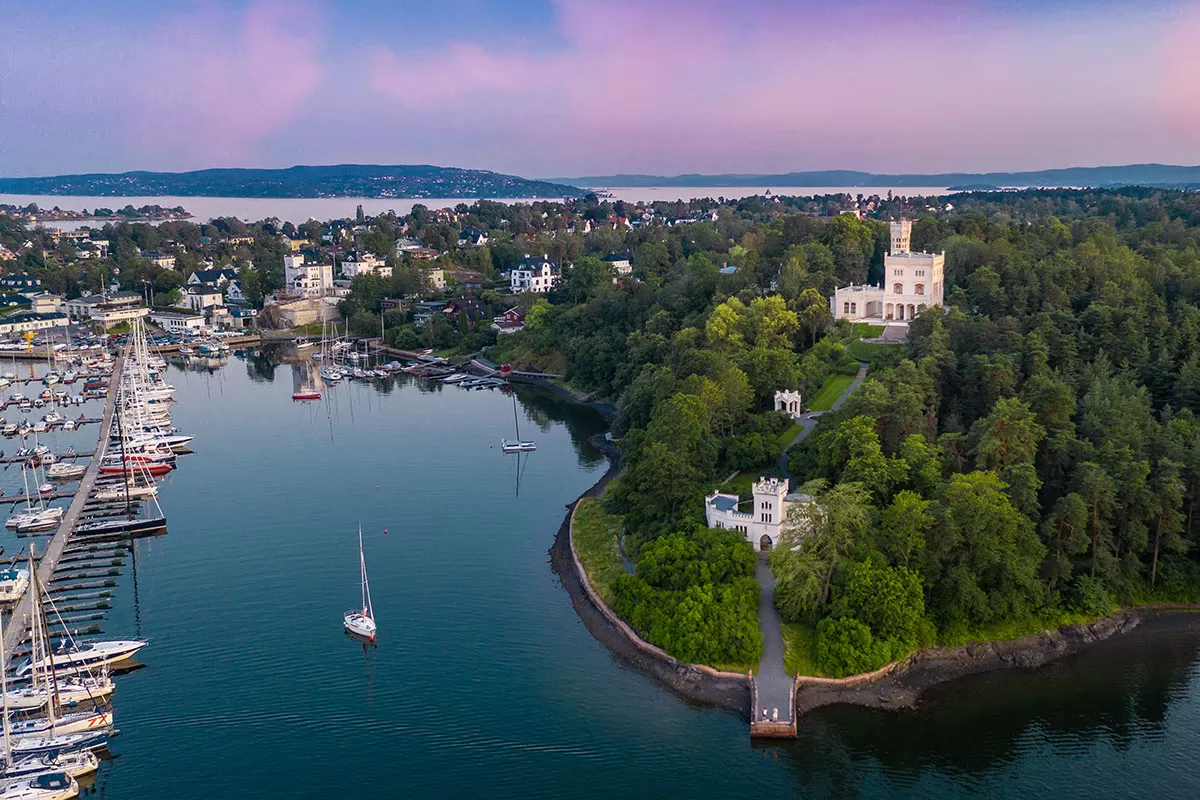 Bygdøy is an island with a beautiful peninsula and is a popular spot in the summer thanks to its beaches and beach volleyball court at Huk beach. There are also many beautiful trails through fields and forests that are perfect for cycling and walking.
Bygdøy is an island with a beautiful peninsula and is a popular spot in the summer thanks to its beaches and beach volleyball court at Huk beach. There are also many beautiful trails through fields and forests that are perfect for cycling and walking.
Bygdøy is also where you’ll come to some of the best museums in Oslo, many of them already mentioned here in this list. They include the Kon-Tiki Museum (Kon-Tiki Museet), Norwegian Museum of Cultural History (Norsk Folkemuseum), Viking Ship Museum (Vikingskipshuset), Norwegian Maritime Museum (Norsk Maritimt Museum), the Fram Museum (Frammuseet) and Oscarshall palace.
Located approximately 5 km from Oslo city centre, there are a few ways to reach Bygdøy.
- Bus: Catch bus no. 30 Bygdøy from downtown Oslo. The best way to plan your journey on the go is by downloading the RuterReise app to check schedules and routes and then buying your tickets using the RuterBillett. For planning ahead of the trip, you can use the ruter.no website.
- Ferry: From April to September a ferry runs from Rådhusbrygge 3 by the City Hall to Dronning, Bygdøy.
- Car/bike/walk: From highway E18 or from street Bygdøy Allé, turn off to Bygdøy.
24. Head up the Holmenkollen Ski Jump (Holmenkollen Skimuseet)
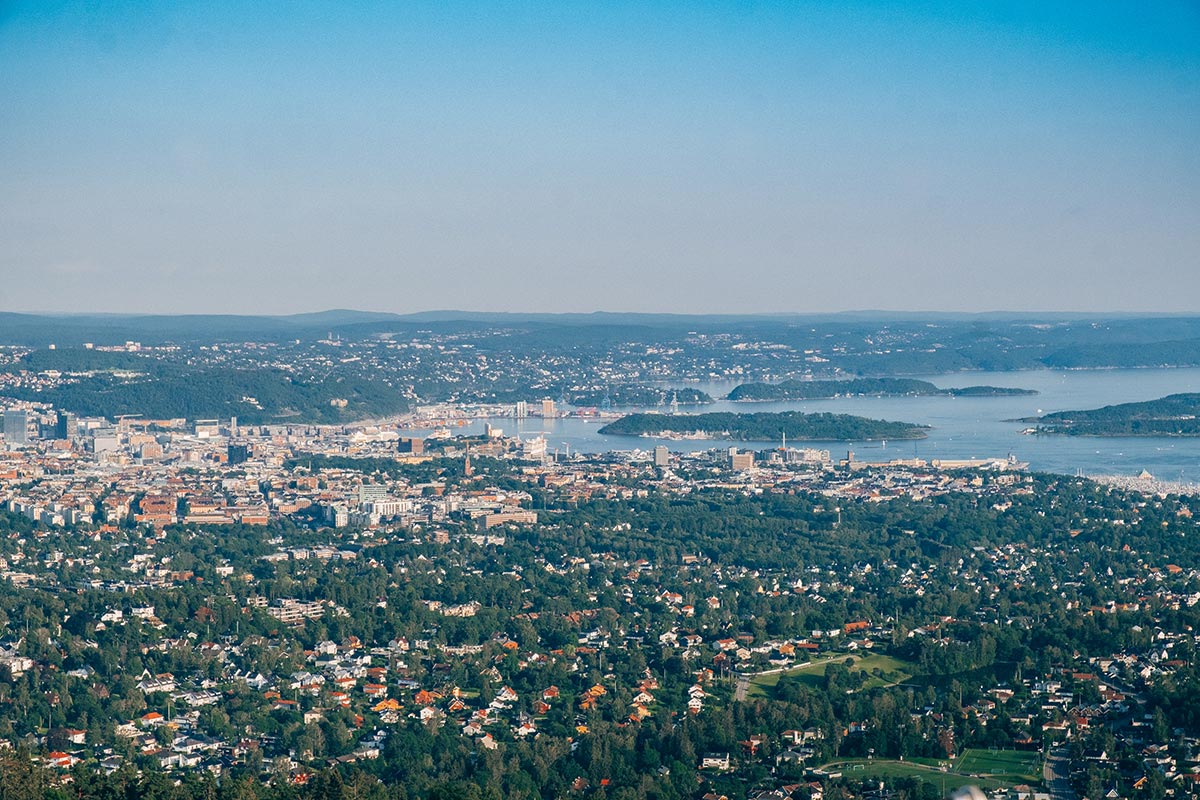
Panoramic view from the rooftop platform
Holmenkollen Ski Museum and Ski Jump is one of Oslo’s top attractions and is open 365 days of the year. Holmenkollen Ski Jump has been the heart of Norwegian skiing for over 100 years, hosting its first ski jumping competition on 31st January 1892. Holmenkollen was also used in the VI Olympic Winter Games held in Oslo in 1952.
Located underneath the ski jump is the Holmenkollen Ski Museum, the oldest of its kind in the world. This impressive museum covers Norway’s long relationship with skiing, all 4,000 years in fact. There is also a Norwegian polar exploration with a series of artefacts on exhibition. The museum proves that Norwegians really to do learn to ski before they learn to walk.
End your visit by taking the elevator up to the very top of the ski jump for awesome 360 degree views of Oslo and the Oslo Fjord.
It’s free to enter walk inside the ski jump area itself, however, entrance to the museum costs NOK 140 / $15.50 USD for adults. Entrance is free with the Visit Oslo Pass.
Even if you don’t head inside the museum, it’s still worth coming out here to admire this huge structure. Standing on it and actually dizzying. Holmenkollen Chapel and a park are nearby. Head up to the park for an elevated view of the whole area.
25. Join a free Guided Tour Inside Parliament House
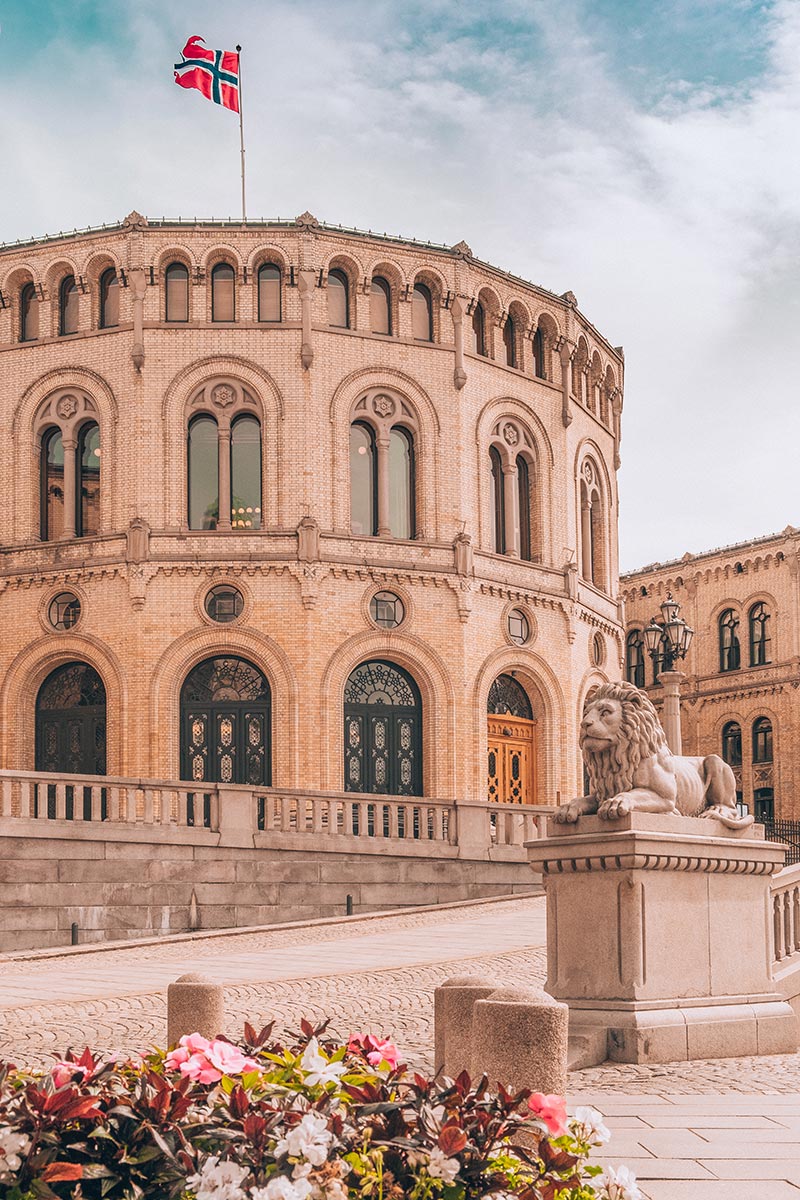 Located on Karl Johans gate is Parliament house (Stortinget in Norwegian). In front is a lovely park garden where can you sit and admire the building. If that’s not enough, you can also join a free guided tour inside. For more details about Parliament House and its tours, visit my guide to free things to do in Oslo.
Located on Karl Johans gate is Parliament house (Stortinget in Norwegian). In front is a lovely park garden where can you sit and admire the building. If that’s not enough, you can also join a free guided tour inside. For more details about Parliament House and its tours, visit my guide to free things to do in Oslo.
26. Kayak around Oslofjord
See Oslo from a different perspective with a kayak tour. This the best way to combine the city with nature and get a bit of exercise in too. What makes this tour so great is that you can customise your itinerary. You can choose to kayak around natural areas or visit a local beach. Book your kayak tour here
27. Watch the sunset at Ekebergparken Sculpture Park
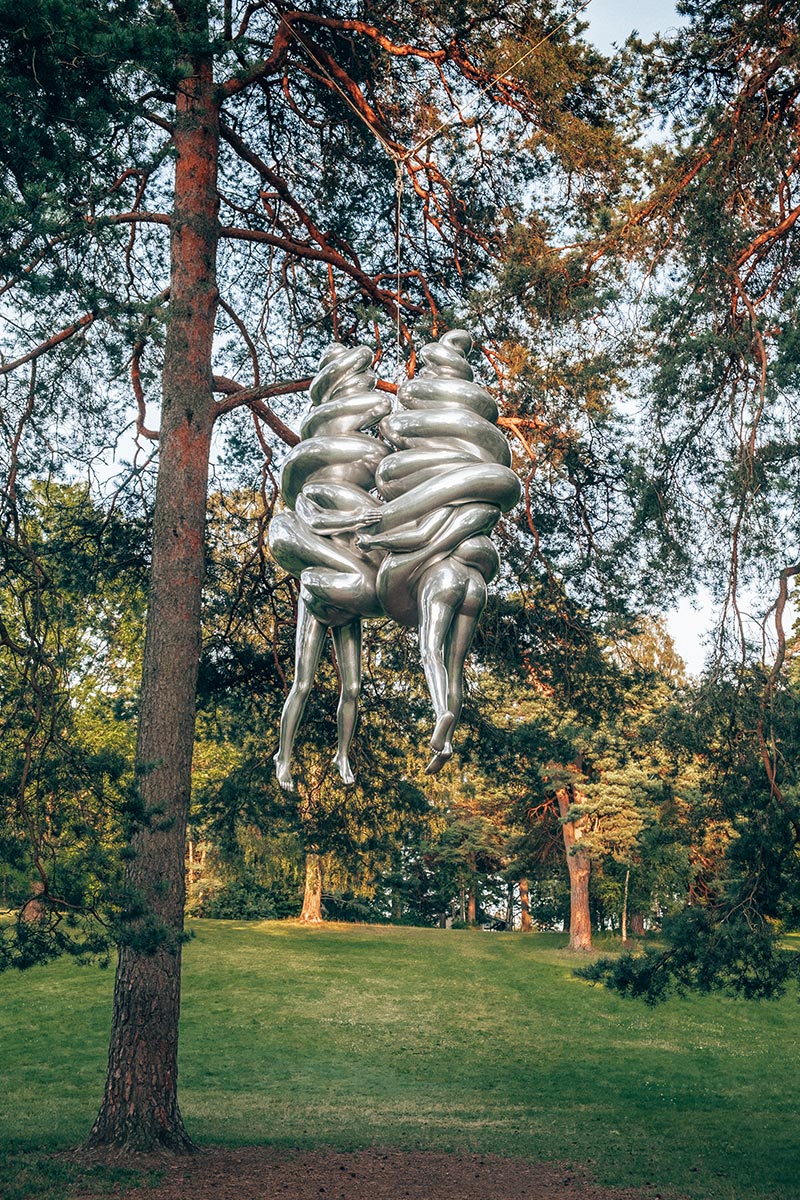
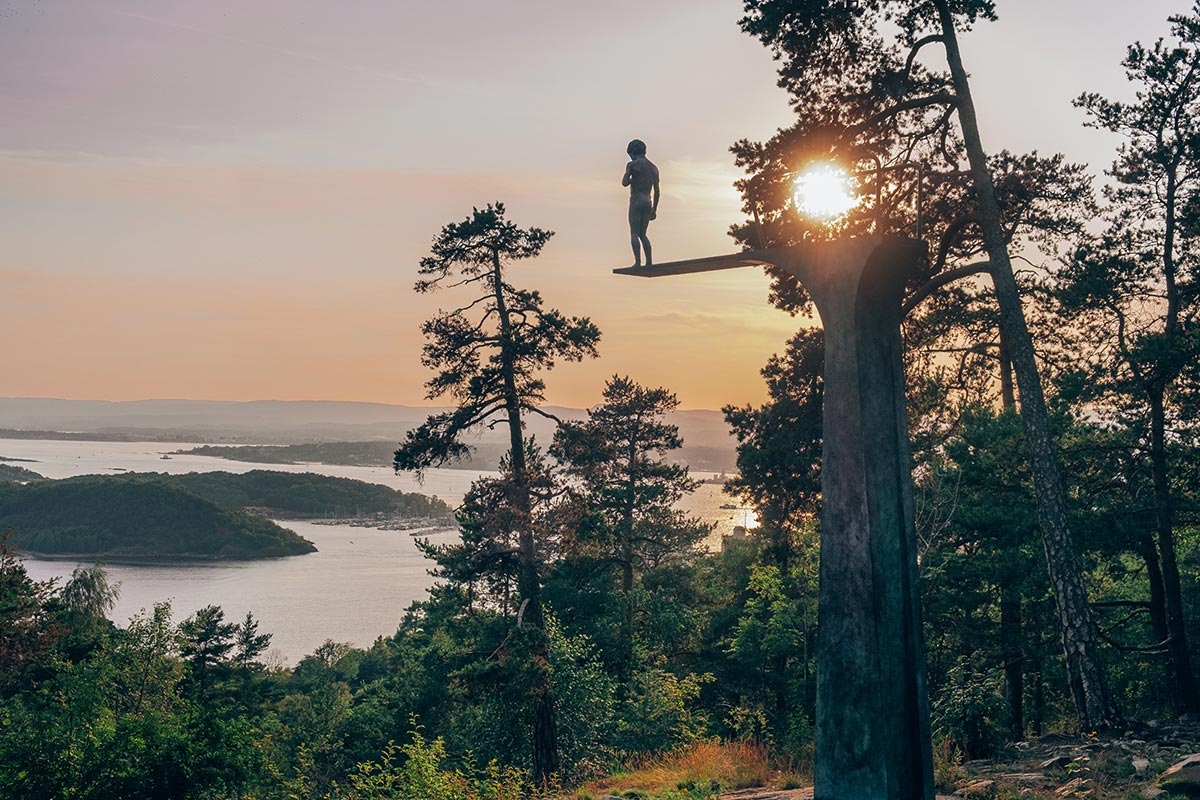
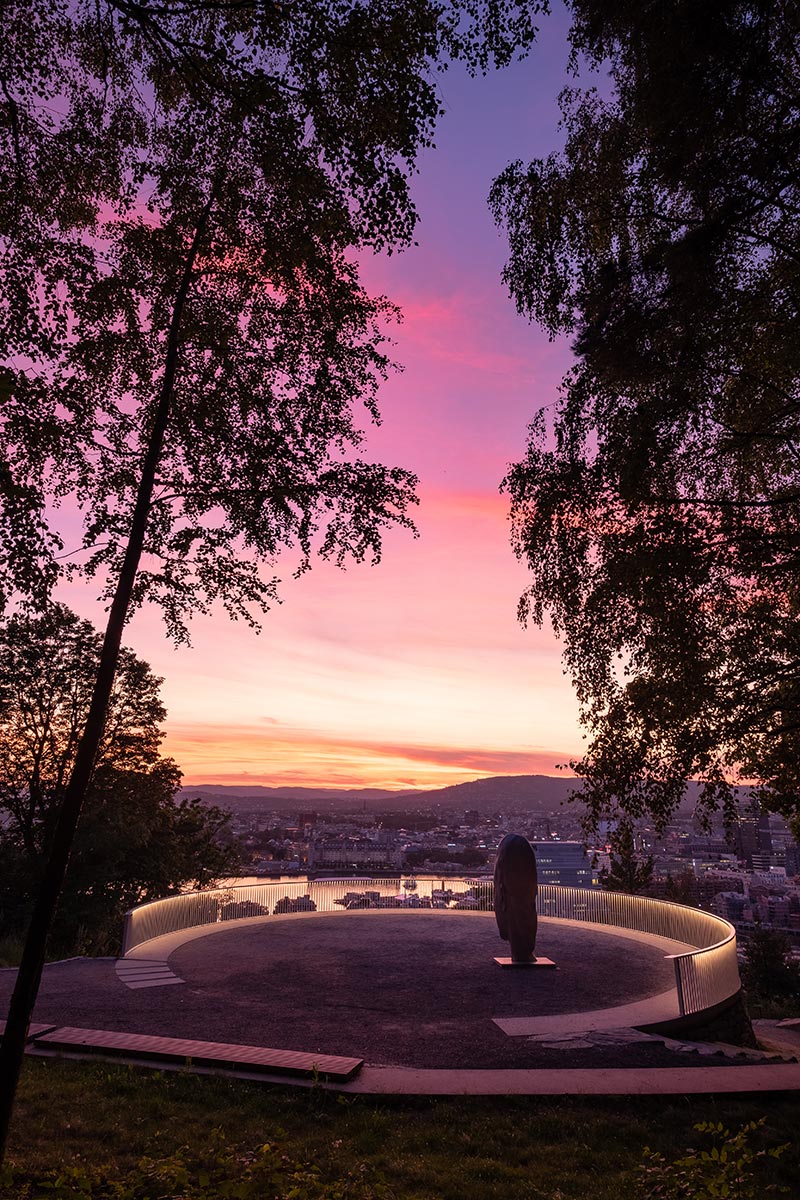 Nothing could be more special than standing in the same place as Edvard Munch where he saw a fiery sunset fall over Oslo and inspired his most famous work ‘The Scream’. In his own words, Munch described the moment as:
Nothing could be more special than standing in the same place as Edvard Munch where he saw a fiery sunset fall over Oslo and inspired his most famous work ‘The Scream’. In his own words, Munch described the moment as:
I was walking along a path with two friends — the sun was setting — suddenly, the sky turned blood red — I paused, feeling exhausted, and leaned on the fence — there was blood and tongues of fire above the blue-black fjord and the city — my friends walked on, and I stood there trembling with anxiety — and I sensed an infinite scream passing through nature.
The viewpoint isn’t the only reason to visit Ekebergparken’s Sculpture Park. This park is ranked one of the top 5 sculpture parks in the world which combines beautiful landscapes, high-quality sculptures, and history. You are free to explore the park on your own, or you can pay to join a guided tour.
Visit the official Ekebergparken website for a free map of the park marked with all the sculptures.
28. Visit Tjuvholmen Sculpture Park
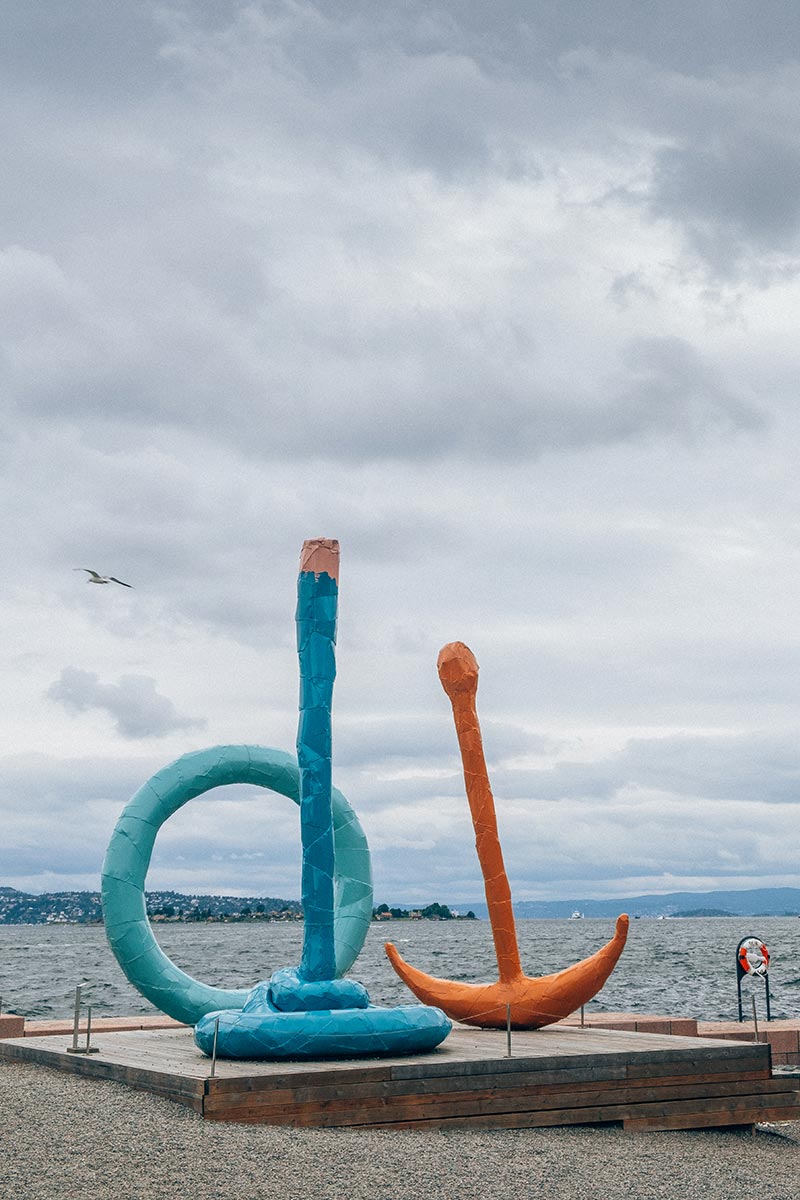
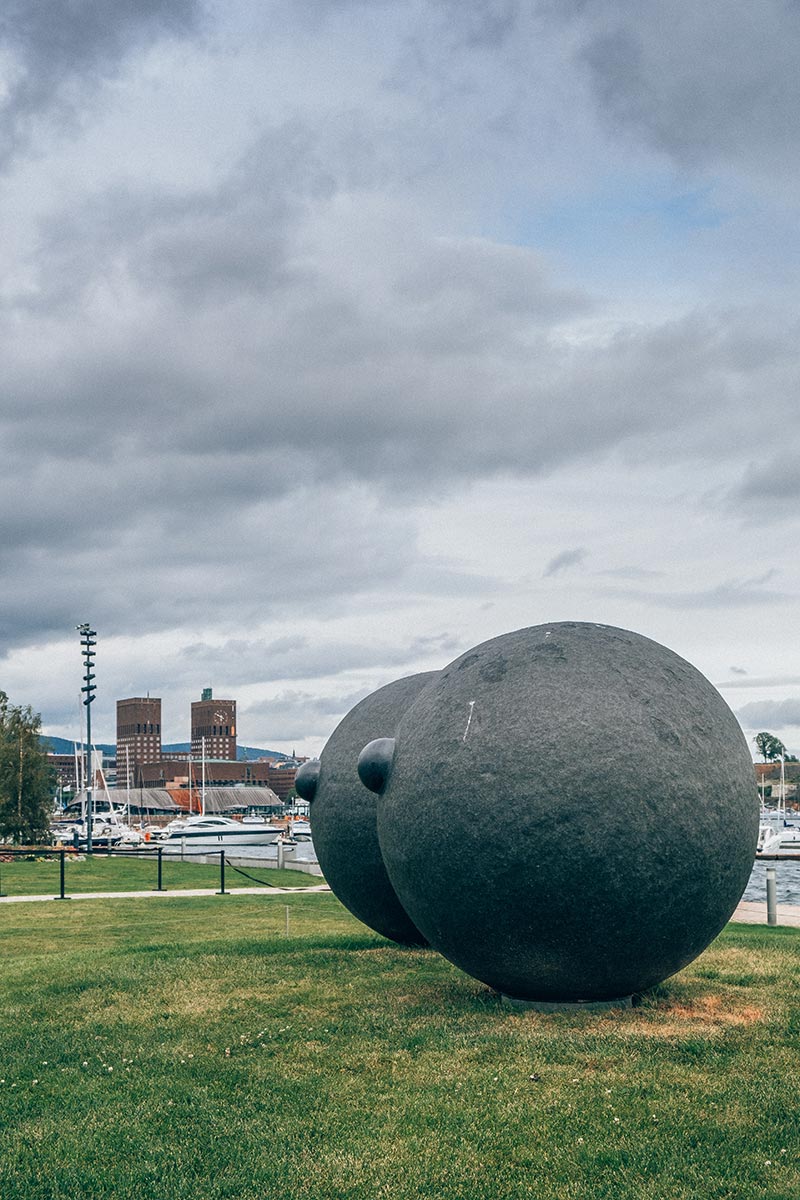 At the tip of Aker Brygge Wharf overlooking Oslofjord is the Tjuvholmen Sculpture Park, a quiet park featuring seven pieces of art by well-known international artists. One of the more memorable sculptures to look out for is by Louise Bourgeois and is entitled ‘Eyes’. See the photo above. Can you see why?
At the tip of Aker Brygge Wharf overlooking Oslofjord is the Tjuvholmen Sculpture Park, a quiet park featuring seven pieces of art by well-known international artists. One of the more memorable sculptures to look out for is by Louise Bourgeois and is entitled ‘Eyes’. See the photo above. Can you see why?
Both the sculpture park and nearby Astrup Fearnley Museum of Modern Art were designed by the world-renowned Italian architect Renzo Piano. The same architect who designed ‘The Shard’ in London and the MUSE Museum in Trento.
During summer, you’ll see locals at the nearby pier and cooling off in the water. Why not join them!
29. Take a dip in the Sørenga sea pool
Did you know that Oslo enjoys 19 hors of daylight in the summer? Why not spend a few of those at Sørenga sea pool, located along Oslo’s new harbour promenade.
Seawater fills this large fjord pool which also has a beach, a children’s pool, and a large recreational area. You’ll only find locals here, especially on warm days.
The Sørenga pool is open to the public all year round and in winter, people go cold water swimming or enjoy a sauna. To reach Sørenga, follow the harbour promenade past the Opera House.
30. Have afternoon tea at Hønse-Lovisas House
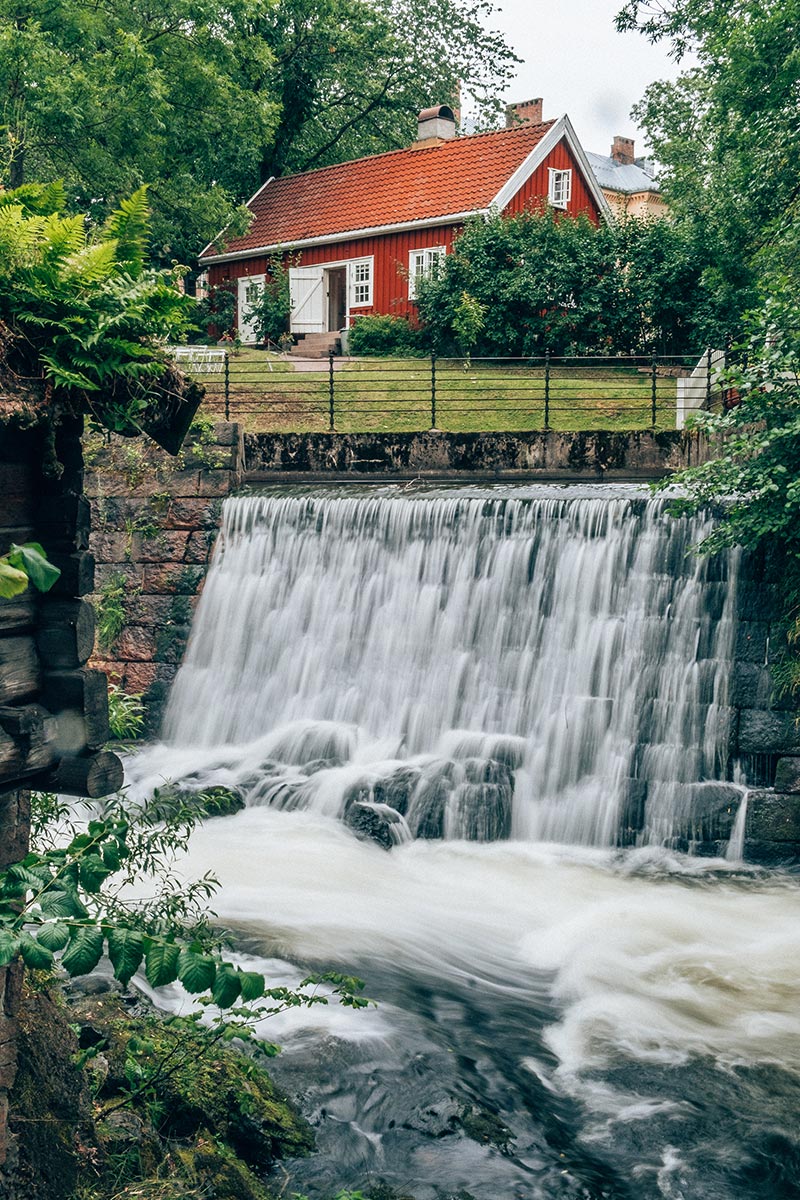
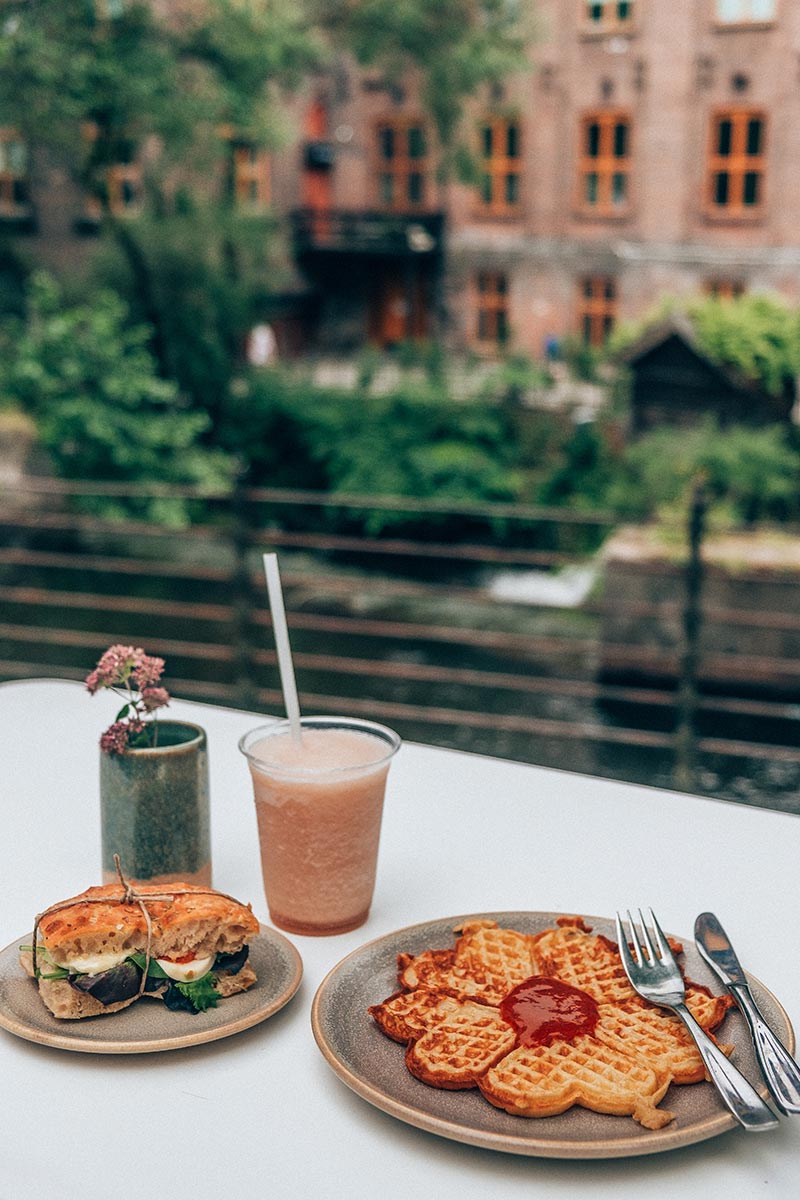
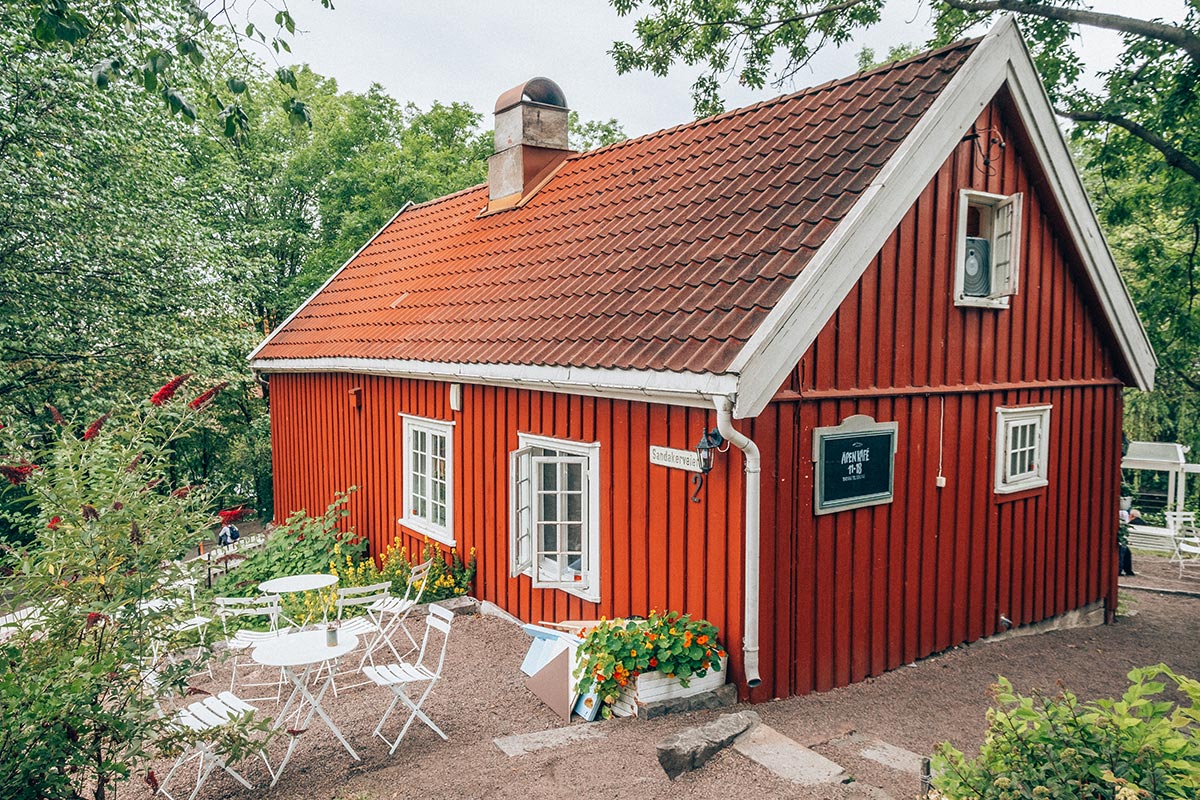 I briefly mentioned Hønse-Lovisas hus (“Hen-Lovisa’s house”) earlier in this list, but I feel it needs its own special mention. During your riverwalk along Akerselva River, I recommend stopping by this cute red wooden building to enjoy either a snack or meal in its café. Choose from homemade lemonade, warm Norwegian waffles, and savoury pastries. There is also a shop where you can buy books, toys, and handicrafts.
I briefly mentioned Hønse-Lovisas hus (“Hen-Lovisa’s house”) earlier in this list, but I feel it needs its own special mention. During your riverwalk along Akerselva River, I recommend stopping by this cute red wooden building to enjoy either a snack or meal in its café. Choose from homemade lemonade, warm Norwegian waffles, and savoury pastries. There is also a shop where you can buy books, toys, and handicrafts.
The story behind the Hønse-Lovisas house goes back to 1800 when it was as saw miller’s house. The house was named after Hønse-Lovisa, a brave and warm female character from Oskar Braaten’s books. The inspiration for the character came from the author’s childhood in the area, but it is unknown whether the person Hønse-Lovisa actually existed.
Hønse-Lovisas House is open all year round:
- Summer (May through August) – Tuesday to Sunday from 11am to 6pm
- Winter (September through April) – Tuesday to Sunday from 11am to 5pm
31. Have lunch at Vippa Oslo
Vippa Oslo is a vibrant food court serving up flavours from all around the world. It’s not just a simple food hall though, it’s actually a social enterprise that uses street food as a way to help integrate immigrants and aspiring entrepreneurs into the local community.
We are highly committed to inclusivity and sustainability, and we strive to create opportunities for immigrants and young people who are excluded from the workforce.
Vippa Oslo is open Tuesday – Saturday: 12:00 – 21:00 and Sunday: 12:00 – 20:00 and is located at Akershusstranda 25 just a 20 minute walk from the Oslo Opera House.
32. Unwind in the University’s Botanical Garden
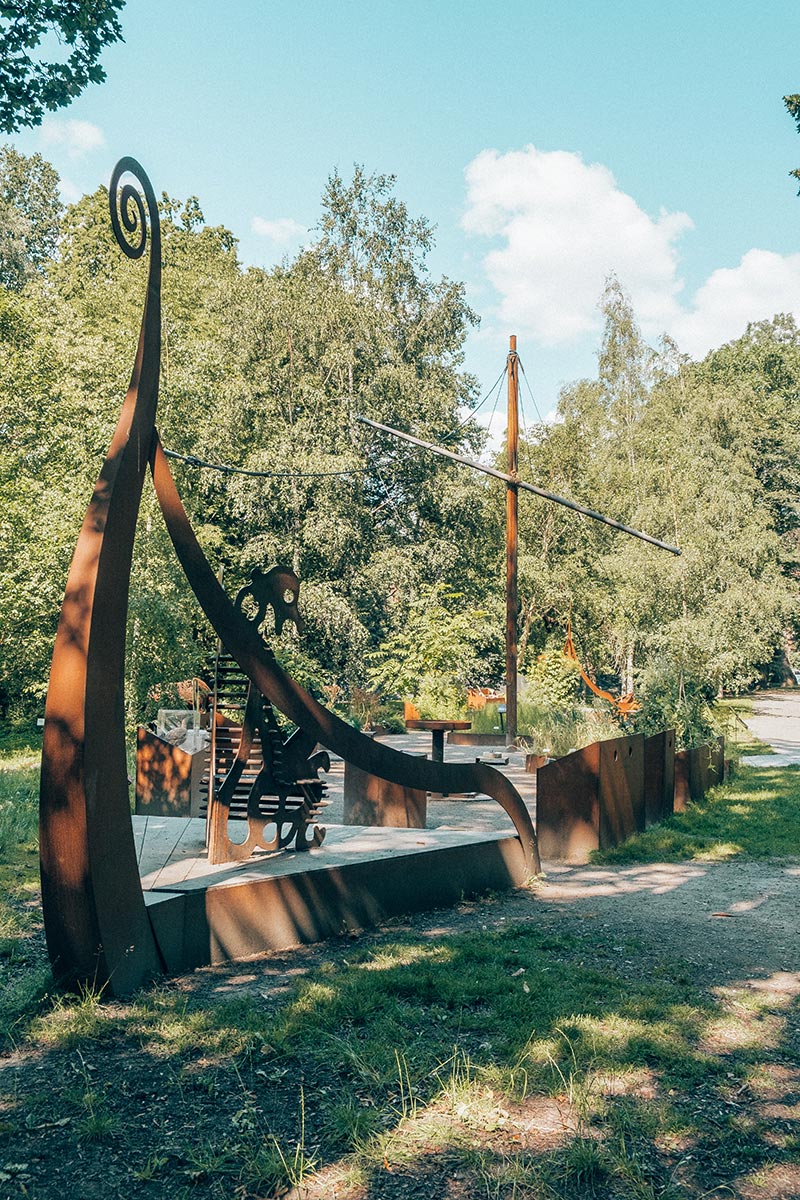
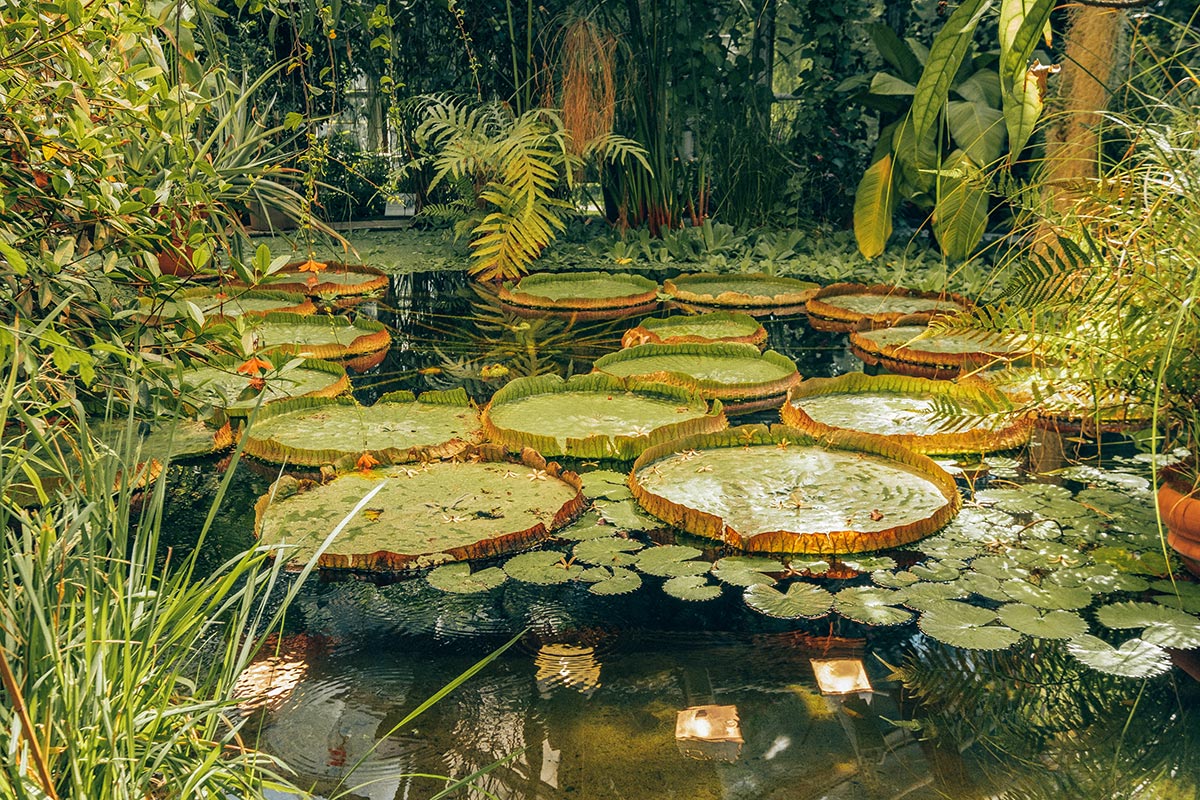 Relax and unwind in Oslo’s Botanical Gardens. This green oasis is home to six unique gardens including the Viking Garden, with plants, rocks and animals that were used during the Viking Age.
Relax and unwind in Oslo’s Botanical Gardens. This green oasis is home to six unique gardens including the Viking Garden, with plants, rocks and animals that were used during the Viking Age.
There is also the Great-granny’s Garden which is designed for people suffering from dementia – the familiar scents, old-fashioned benches, and other traditional elements have a comforting effect and improve their memory.
For more details about the Botanical Gardens, visit my guide to free with the Visit Oslo Pass.
33. Climb and go a zip lining at Oslo Summer Park (Oslosommerpark)
Visiting Oslo in the summer and feeling adventurous? Head to Oslosommerpark (Oslo Summer Park), one of the best climbing parks in Scandinavia. Choose from 12 different trails with different levels of difficulty and flying across the treetops thanks to their 1,000 metres of zip-lines.
Your ticket includes all the necessary equipment and training you need for a safe and fun day out. You can also bring your own food and have a barbeque in the park’s picnic areas.
Oslo Summerpark is located under 30 minutes away from central Oslo by Tryvann Tower, on top of Holmenkollenåsen. Take train line no. 1 towards Frognerseteren and get off at Voksenkollen Station (second to last). From there it is a 12 minute walk to Tryvann Tower.
Oslo Summerpark is open from mid-August to mid-October. For more details, visit Oslosommerpark.no
34. Go skiing at Oslo Winter Park (Vinterpark)
In winter, Oslo Summerpark transforms into Oslo vinterpark! Only this time it’s all about skiing. Oslo Vinterpark is the largest ski resort in the Oslo area, with 18 slopes and 11 lifts. If you’re a beginner like me, you’ll be happy to hear their is a beginners area and easy slopes for us newbies but there are also more challenging ones for the more experienced.
Oslo Vinterpark has one of Norway’s biggest snowparks with a slopestyle course and Europe’s only Superpipe open to the public. The season usually start around November/December and concluded at the end of Easter. For more details, visit Oslovinterpark.no
35. Astrup Fearnley Museum of Modern Art Museum
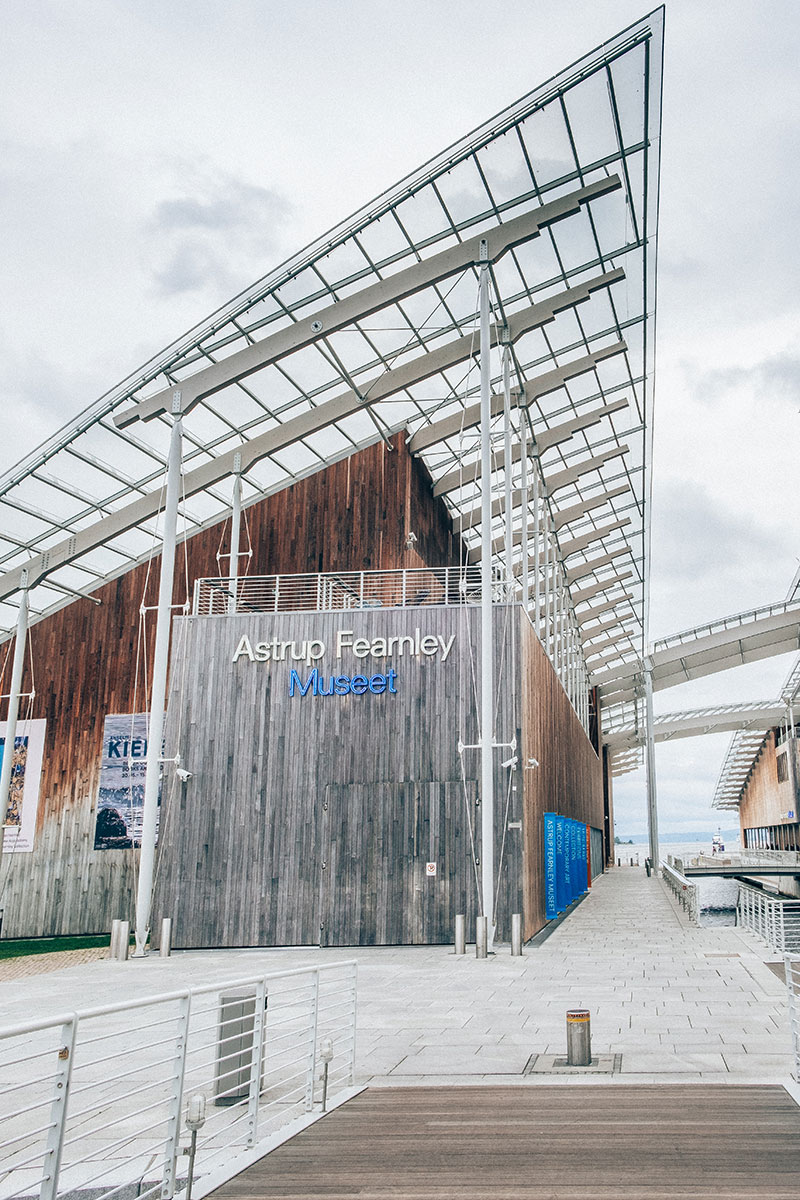 Located at the end of Aker Brygge is the Astrup Fearnley Museum of Modern Art where you’ll find this privately owned gallery dedicated to modern and contemporary art. Housed inside a futuristic building designed by Renzo Piano, are famous pieces such as a Jeff Koons sculpture of Michael Jackson and Bubbles sculpture. Other famous artists represented here include Damien Hirst, Anselm Kiefer, Cindy Sherman, and Nate Lowman.
Located at the end of Aker Brygge is the Astrup Fearnley Museum of Modern Art where you’ll find this privately owned gallery dedicated to modern and contemporary art. Housed inside a futuristic building designed by Renzo Piano, are famous pieces such as a Jeff Koons sculpture of Michael Jackson and Bubbles sculpture. Other famous artists represented here include Damien Hirst, Anselm Kiefer, Cindy Sherman, and Nate Lowman.
The Astrup Fearnley Museum of Modern Art Museum is open Tuesday-Sunday and the entrance is NOK 130 / $14 USD or free with the Visit Oslo Pass.
36. Walk across Ankerbrua, Oslo’s fairytale bridge
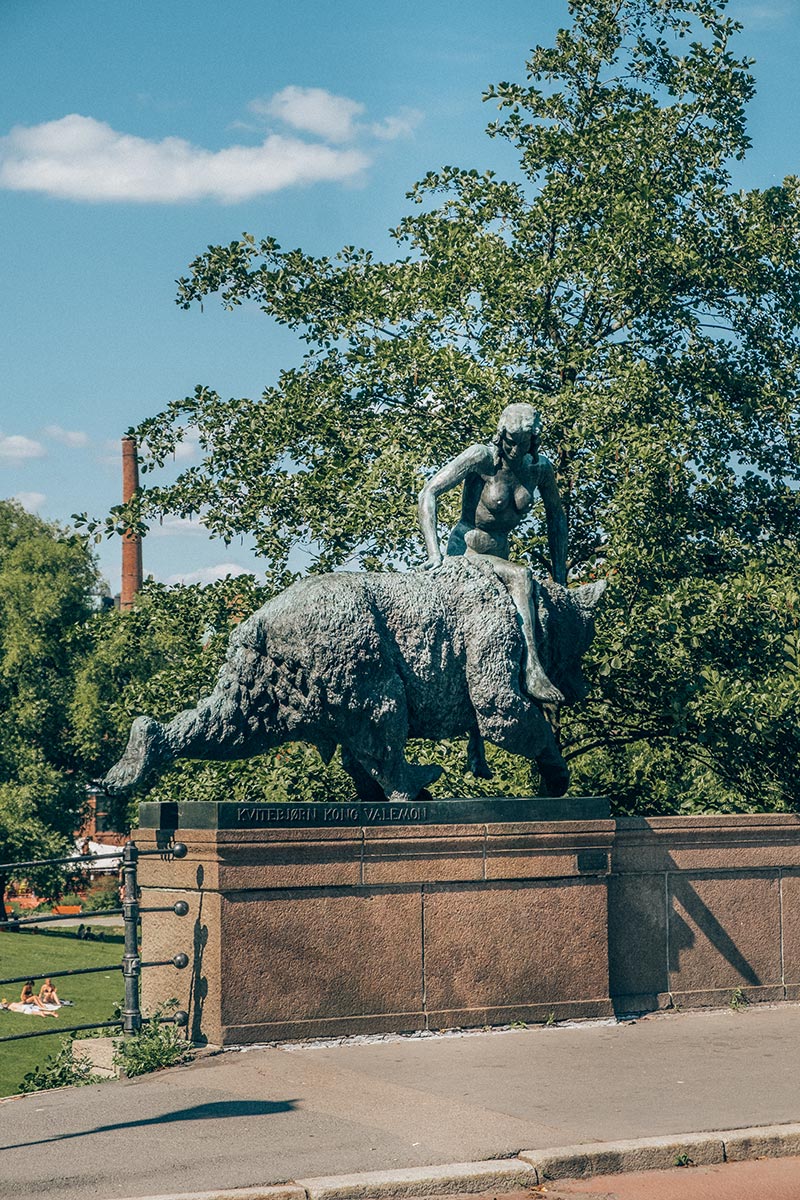 Ankerbrua isn’t just any bridge, this one is guarded by 4 bronze statues each representing a different Norwegian fairy tale hero. Built in 1926, it wasn’t 1937 that local artist Dyre Vaa sculpted these four fabled heroes.
Ankerbrua isn’t just any bridge, this one is guarded by 4 bronze statues each representing a different Norwegian fairy tale hero. Built in 1926, it wasn’t 1937 that local artist Dyre Vaa sculpted these four fabled heroes.
The sculptures include a man on a reindeer depicting Per Gynt, a legendary deer hunter from Gudbrandsdalen. This story actually helped inspire Henrik Ibsen’s famous work, Peer Gynt.
Across the bridge is Kari Trestakk, the Norwegian Cinderella who escaped her evil stepmother on the back of a great blue ox.
At the city end there’s a woman on a huge bear representing Kvitebjørn kong Valemon. King Valemon was cursed to spend his days as a polar bear after he refused to marry a wicked witch. The woman is the princess who became his wife.
Opposite the bear is Veslefrikk med fela, which is a young man who gets three wishes from a troll. One of his wishes is for a fiddle that no one can resist dancing to, which eventually saves him from a lynch mob.
37. Explore the Barcode Project District
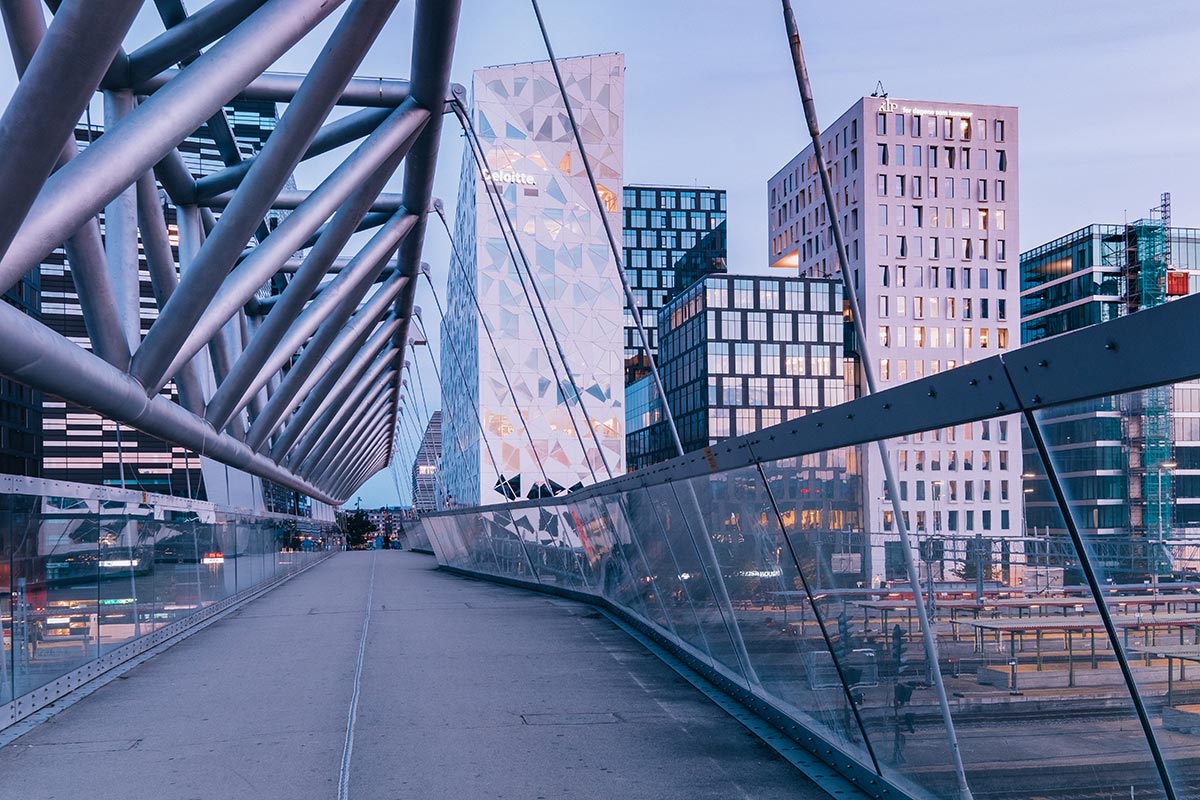 If you’re into architecture, then you should definitely visit the Barcode Project in Oslo’s business district. Designed by Dutch and Norwegian firms, it’s here that you’ll find a row of high rise buildings that collectively resemble a barcode. The best vantage point is from the roof of the opera house or from the pedestrian bridge Akrobaten (‘the Acrobat’) which stretches across the tracks of Oslo central station, connecting the two areas.
If you’re into architecture, then you should definitely visit the Barcode Project in Oslo’s business district. Designed by Dutch and Norwegian firms, it’s here that you’ll find a row of high rise buildings that collectively resemble a barcode. The best vantage point is from the roof of the opera house or from the pedestrian bridge Akrobaten (‘the Acrobat’) which stretches across the tracks of Oslo central station, connecting the two areas.
38. Ride the roller coaster at TusenFryd
Just 20 kilometers south of Oslo centre is Tusenfryd which literally means, “Thousand Joys”, or the term used for a common daisy. Tusenfryd is Norway’s largest amusement park full of roller coasters, carousels, games, shops, and places to eat. During the summer, head to BadeFryd water park for a dip in the swimming pool or slide down the huge water slide.
Buy discounted tickets online in advance using tusenfryd.no or receive 20% off with the Visit Oslo Pass.
39. See the stained glass windows in Oslo Cathedral (Oslo domkirke)
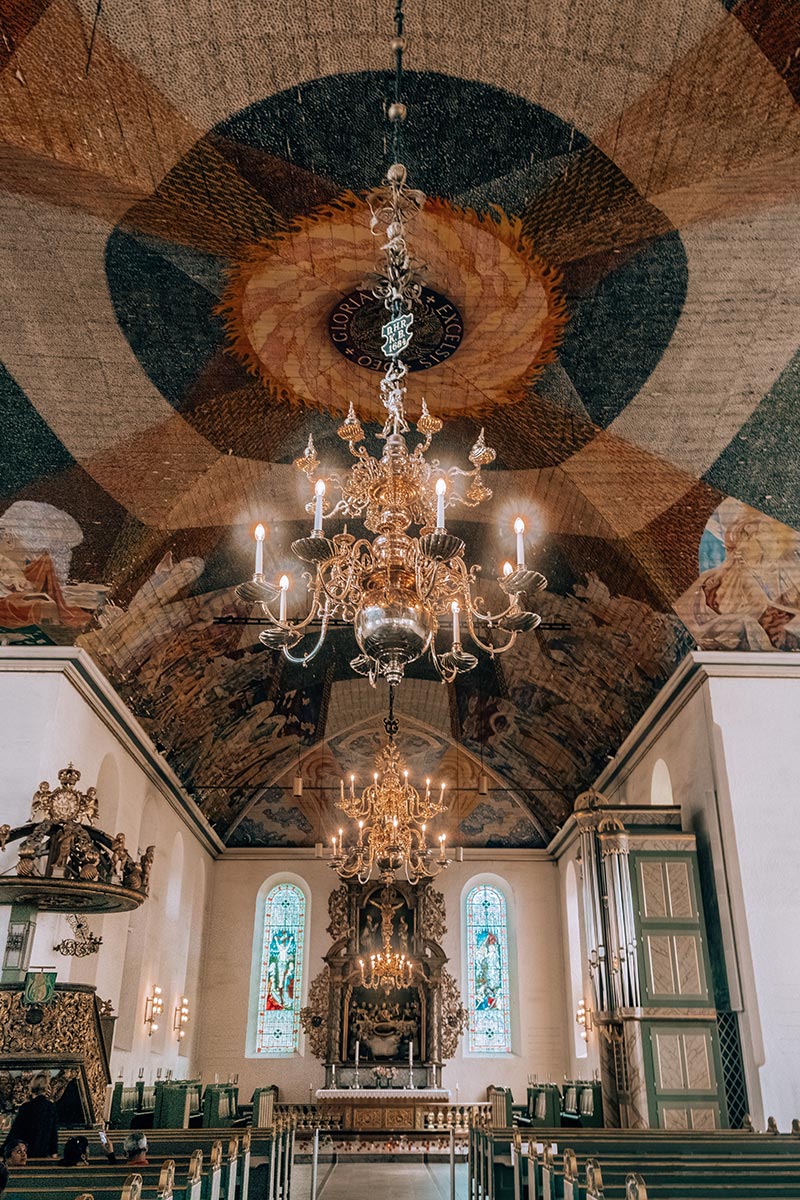 As Norway’s main church, Oslo Cathedral is used by the Norwegian Royal Family and the Norwegian Government for weddings and funerals. Head inside to see large ceiling murals painted by Hugo Lous Mohr between 1936 and 1950, and the wonderful coloured stained glass windows are by Emanuel Vigeland.
As Norway’s main church, Oslo Cathedral is used by the Norwegian Royal Family and the Norwegian Government for weddings and funerals. Head inside to see large ceiling murals painted by Hugo Lous Mohr between 1936 and 1950, and the wonderful coloured stained glass windows are by Emanuel Vigeland.
The church has mass in Norwegian on weekdays and high mass every Sunday and is regularly used for concerts. Oslo Cathedral is open every day from 10am – 4pm except Friday where the church opens at 4pm and stays open until Saturday morning at 06:00.
40. Take a photo with “The Tiger”
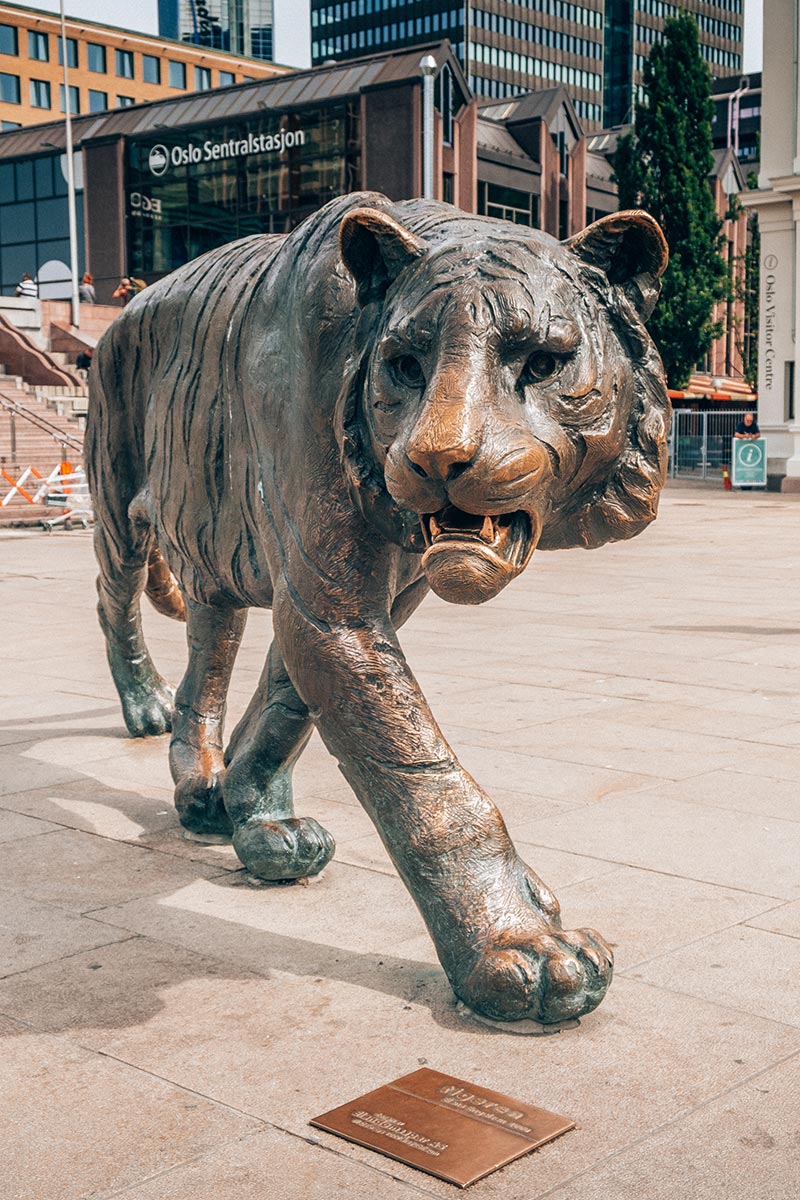 Oslo’s most famous and photographed “inhabitant” is “The Tiger”, a 4.5-metre bronze tiger that was gifted to the city of Oslo when it celebrated its 1000-year anniversary in 2000.
Oslo’s most famous and photographed “inhabitant” is “The Tiger”, a 4.5-metre bronze tiger that was gifted to the city of Oslo when it celebrated its 1000-year anniversary in 2000.
As most Norwegian’s know, Oslo’s nickname is Tigerstaden (“The Tiger City”). It is said that this name was first used by Norwegian poet, Bjørnstjerne Bjørnson. In his poem “Sidste Sang” written in 1870, he describes a fight between a horse and a tiger; the tiger representing the dangerous city and the horse, the safe countryside. Since then Oslo has been known as “The Tiger City”. Over the years the negative connotation was lost and now refers to Oslo being an exciting and happening place rather than dangerous.
41. Take a fjordside sauna at Urban Sauna
The Finnish tradition of relaxing in a sauna to cleanse the body whilst enjoying great company has come to Norway in a unique way. Docked in Oslo harbour are two architect-designed floating saunas, one called Måken (holds up to 12 people) and the other Skarven (holds up to 16 people). They even have their own diving board on the roof!
These cosy saunas are made of Finnish pine wood are run by a group of sauna enthusiasts and is in operation all year round. You can book one or both saunas privately for two hours or come by during drop-in hours. Drop-ins are only available on a few select dates so I suggest booking in advance to avoid disappointment. Visit the owners’ website for more information about bookings.
42. Go hunting for Oslo’s street art and sculptures
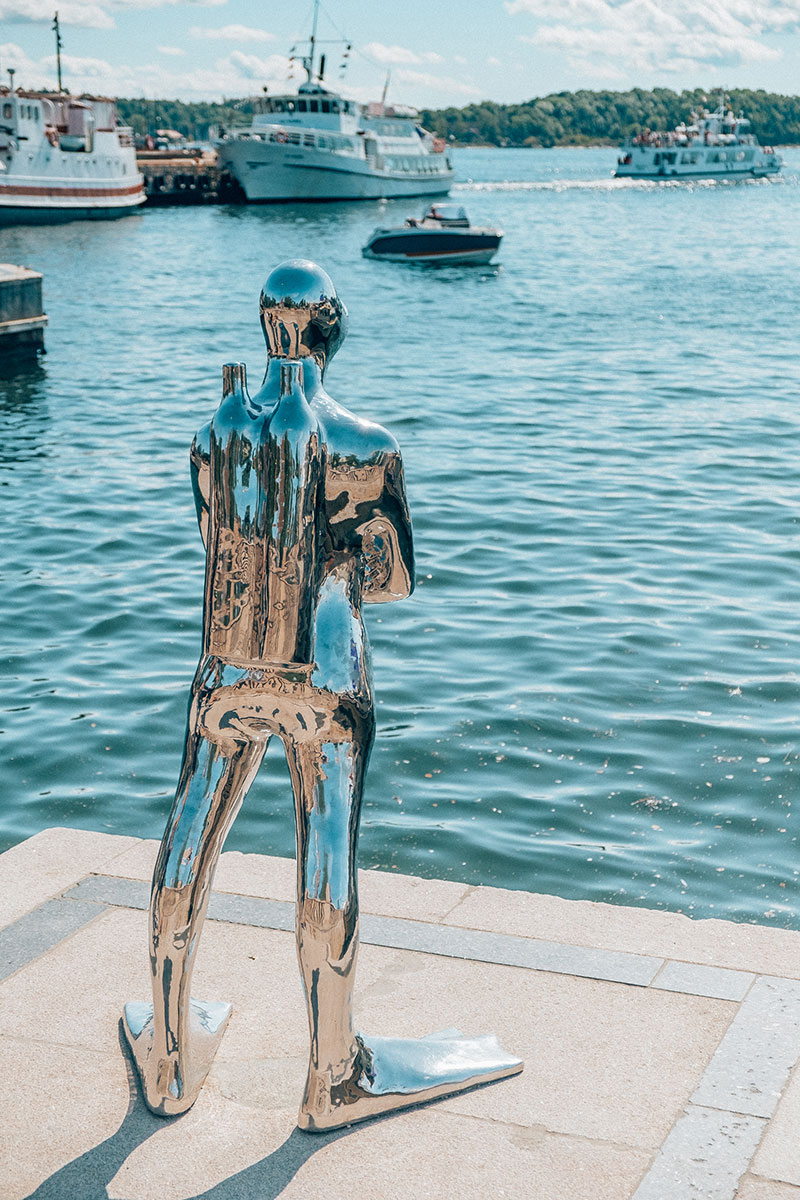
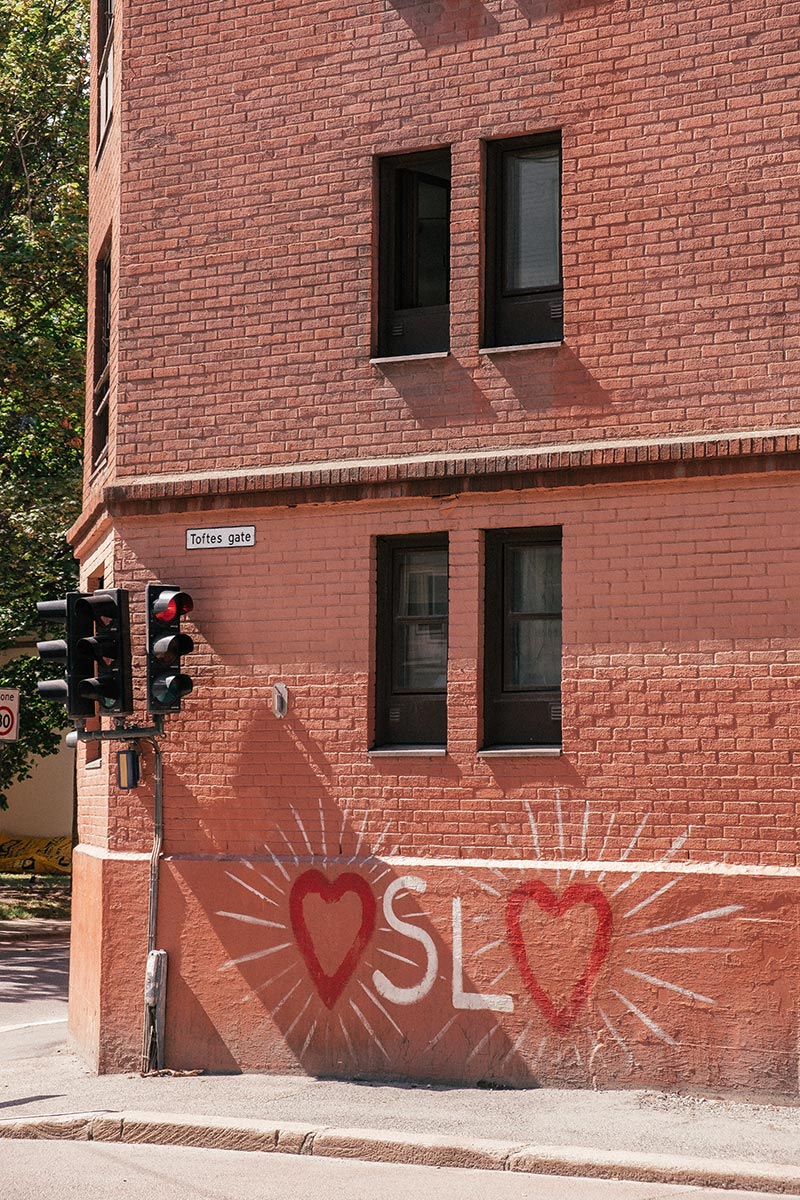 Oslo has a lot of excellent sculpture parks but there are also many other pieces around the city you can see including from street art and sculptures.
Oslo has a lot of excellent sculpture parks but there are also many other pieces around the city you can see including from street art and sculptures.
Amongst the most memorable is the Sphinx, which is a sculpture of supermodel Kate Moss in a very uncomfortable-looking yoga pose. You can find out the front of the Clarion Collection Hotel Folketeateret. One other a controversial sculpture by Paul McCarthy which depicts a Santa Claus with a “christmas tree” in his hand. The first time I saw this sculpture was in Rotterdam, which is the original. Read all about why it’s so controversial in my Rotterdam travel guide.
For more street art and sculptures to see, check out Visit Oslo’s urban art guide.
43. Take a Boat trip around Oslo fjord
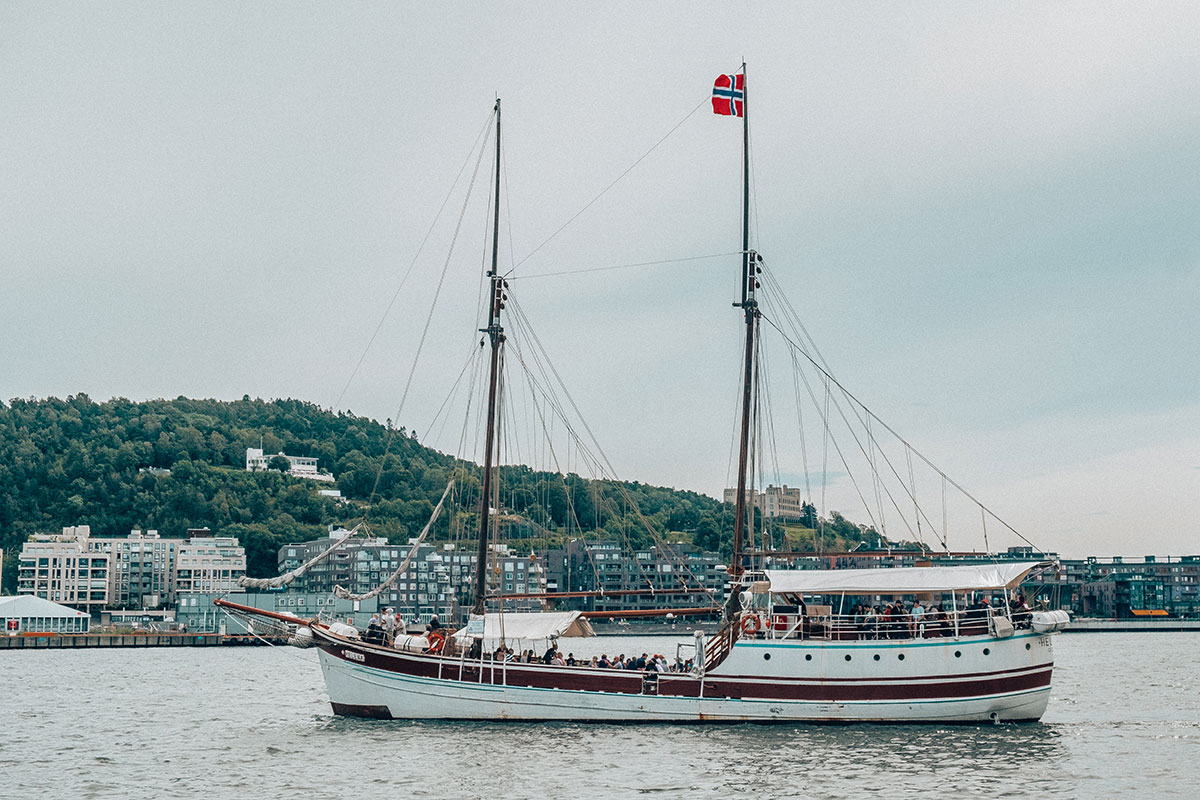 One of the best views of Oslo is from the water. There are several ways you can get out on the water but nothing is more memorable than spending an evening aboard a wooden boat, sail around Oslo Fjord and watch the sunset. The route takes you past Akershus Fortress, Oslo Opera House as well as lots of pretty islets. All the while enjoying a traditional Norwegian shrimp buffet. Check times and book your tour here.
One of the best views of Oslo is from the water. There are several ways you can get out on the water but nothing is more memorable than spending an evening aboard a wooden boat, sail around Oslo Fjord and watch the sunset. The route takes you past Akershus Fortress, Oslo Opera House as well as lots of pretty islets. All the while enjoying a traditional Norwegian shrimp buffet. Check times and book your tour here.
Alternatively, you can join a 2-hour Oslo Fjord sightseeing cruise that runs both in the morning and afternoon. As you cruise the fjord, you’ll receive commentary from an onboard guide giving you the chance to learn about nature and the countryside. Check times and book your tour here.
44. Visit Kvadraturen, Oslo’s historical centre
Step back into Oslo’s history with a trip to Kvadraturen. Located behind Akershus Fortress, Kvadraturen is Oslo’s historical centre whose name, literally “the quadrature”, was inspired by the rectangular street pattern of this once renaissance town.
Danish-Norwegian King Christian IV’s founded Christiania here after the big town fire in 1624. He claimed this area and renamed after himself. It was then renamed back to Oslo in 1924.
Only a few buildings from the 17th and 18th century survived the test of time including the building that housed Oslo’s first town hall and the city’s oldest restaurant, Café Engebret. You’ll also find the Museum of Contemporary Art, the Museum of Architecture, the Film Museum and several galleries located here.
Located in square Christiania torv is a fountain with a large sculpture of a hand pointing to the ground. This is supposedly the hand of King Christian IV who pointed to this spot and said: “The new town will lie here!”
45. Nobel Peace Center (Nobels Fredssenter)
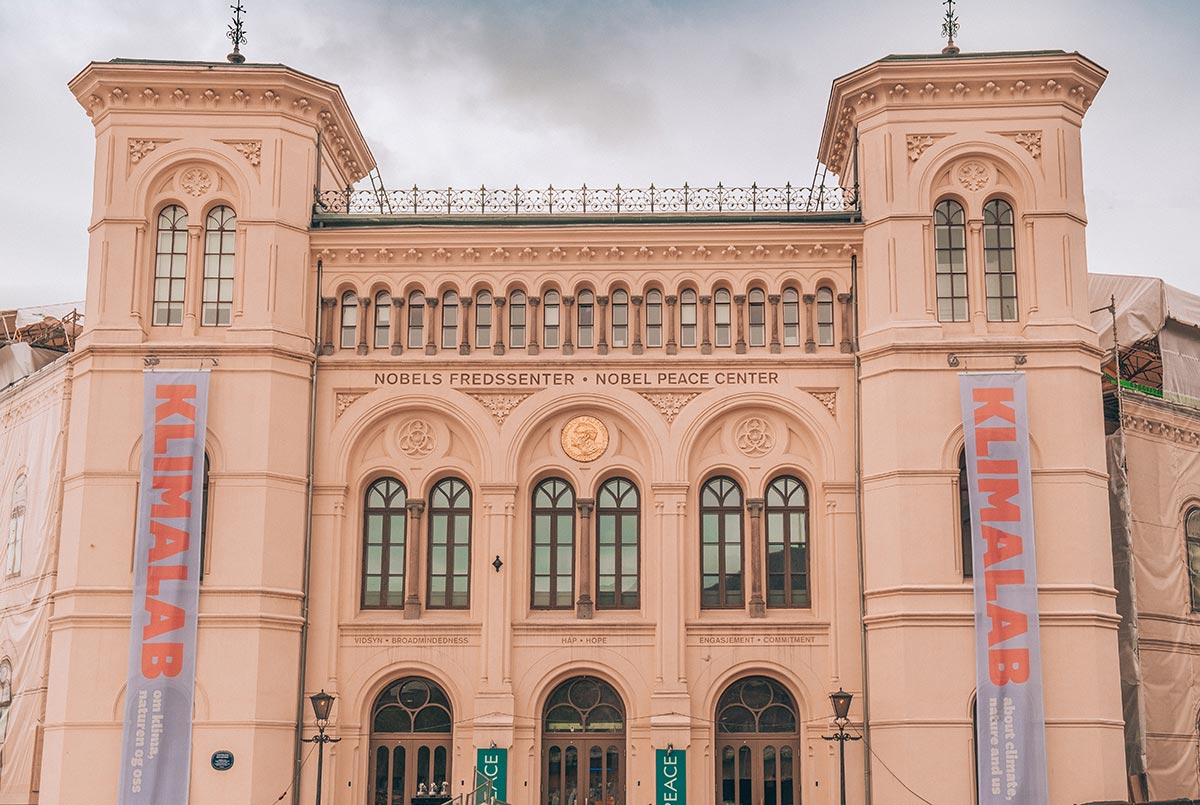 The Nobel Peace Center is a museum that explores the history and background of the Peace Prize laureates. The Center also shows exhibits a combination of temporary and permanent exhibitions that explore themes related to peace, war and conflict resolution. There are activities for children and free guided tours every day in the summer.
The Nobel Peace Center is a museum that explores the history and background of the Peace Prize laureates. The Center also shows exhibits a combination of temporary and permanent exhibitions that explore themes related to peace, war and conflict resolution. There are activities for children and free guided tours every day in the summer.
The Nobel Peace Center is open:
Summer season (29 April-30 September): Monday to Sunday 10–18.
Winter season (1 October–28 April April): Tuesday to Sunday 10–18
Entrance is NOK 120 / $13 USD or free with the Visit Oslo Pass.
46. Join a small bike tour
Enjoy the best of Oslo on this leisurely 3-hour bike tour. A knowledgeable guide will take you around the charming streets and popular attractions while imparting insightful knowledge and interesting history. The tour is limited to 15 people so you’re sure to have an intimate experience. Book your small group bike tour here. Alternatively if you prefer to go it alone, you can get a full-day bike hire here.
47. Enjoy a cocktail with a view at Eight – The Rooftop Bar at Grand
Take in the Oslo’s skyline whilst sipping on a Nordic cocktail at Eight rooftop bar. Located on Karl Johans gate on the top floor of the Grand Hotel, come here to end your day or start your evening on its gorgeous terrace with excellent views.
Eight rooftop bar is open:
- Monday – Thursday: 16:00-01:00
- Friday – Saturday: 14:00-02:00
- Sunday: Closed
48. Head to Mathallen for lunch
Mathallen, literally “the Food Hall”, is a huge indoor food market with cafes, specialty shops, restaurants, cafés and other great places to eat. The eateries serve high-quality products from small-scale Norwegian producers as well as special foreign imports. Locals flock to Mathallen around lunch time on weekdays and on weekends.
Mathallen is open:
- Tuesday-Saturday: 10:00-20:00
- Sunday: 11:00-18:00
- Monday: Closed
49. Have a cocktail at HIMKOK
Coming in at 20th place on the The World’s 50 Best Bars 2017list is HIMKOK. This cocktail bar is also a craft distillery with a cider bar, outdoor kitchen, and a greenhouse with plants and herbs for the drinks and food. Let pro bartenders whip you up a cocktail using unique Norwegian flavours include cloudberries, seaweed, birch and even the caramelised milk cheese known as ‘brunost’.
HIMKOK is open Sunday – Thursday: 17:00-03:00 and Friday – Saturday: 15:00-03:00.
Planning a trip? Don’t risk it. I never travel without getting travel insurance. I always use World Nomads for all my trips.
Oslo Accommodation: Where to stay in Oslo
During my first visit to Oslo around Christmas time, I stayed at Anker Hotel for four nights. The double room I had was very spacious and the bathroom was equally as big. The room had a lovely view over the stream and bridge leading up towards Damstredet and Telthusbakken. Located just a 15-minute walk from Karl Johans gate, Anker Hotel is also well connected with both tram and bus stops right outside the hotel. I particularly enjoyed their traditional Norwegian ginger biscuits they had at reception each day. Nom nom! These are very much a Christmas tradition though.
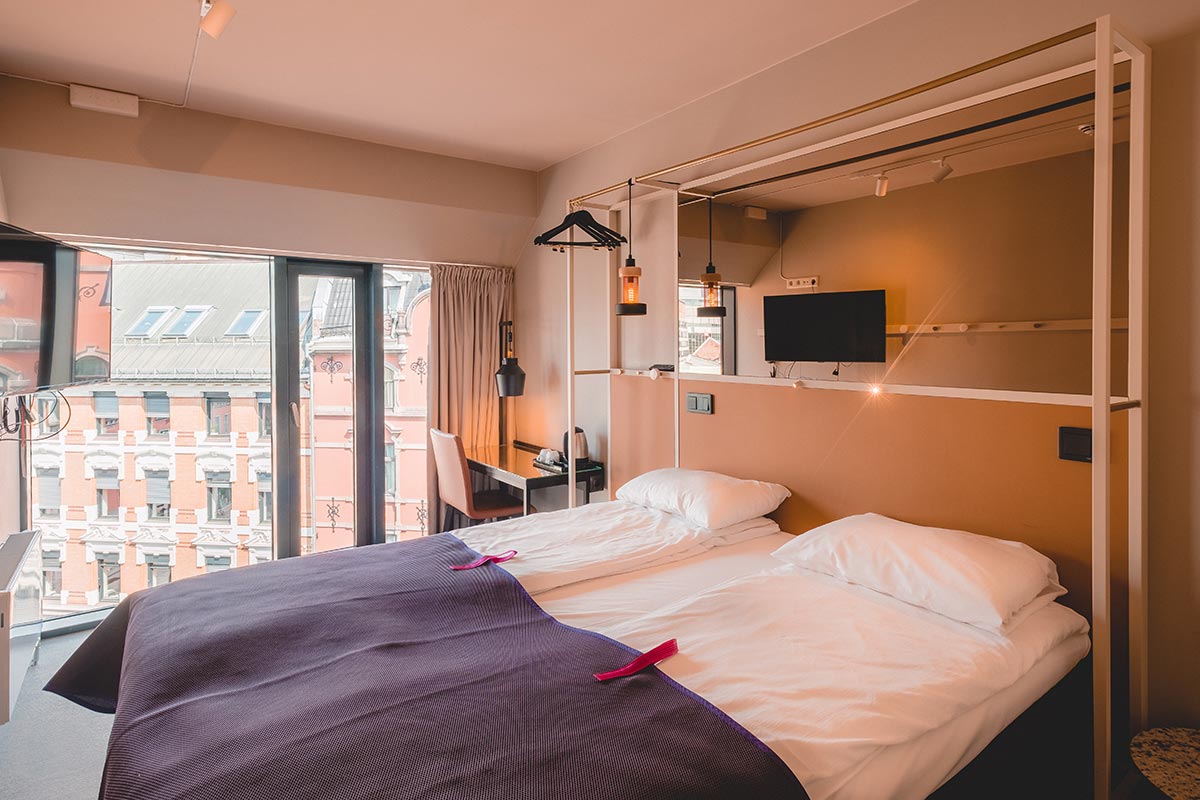 During my 2 week language holiday I stayed at Scandic Grensen. This was by far the best deal on a hotel for such a long stay. It’s a lovely modern hotel with an excellent buffet breakfast. My only complaint would be the fact that the rooms don’t have a fridge. Other than that, it’s in an excellent central location and right near a tram and train stop.
During my 2 week language holiday I stayed at Scandic Grensen. This was by far the best deal on a hotel for such a long stay. It’s a lovely modern hotel with an excellent buffet breakfast. My only complaint would be the fact that the rooms don’t have a fridge. Other than that, it’s in an excellent central location and right near a tram and train stop.
Want to see more of Oslo and Beyond? Join one of these tours!
- Oslo Nature Walks: Island hopping
- Join this small Group Oslo walking tour
- Take this self-guided trip to Bergen and Flåm
- PLUS…many more here!
Plan your trip with my Oslo travel toolkit
- Going to Norway? Take my Norwegian travel phrase guide
- Find the best deals on flights here
- Get the best hotel deals here
- Compare the best car rental prices here
- See more of Oslo with local experiences.
Planning a trip and need travel insurance? Get a free quote from World Nomads here.
Visiting Norway? Check out my other Norway posts
- 22 Absolutely Free things to do in Oslo You Shouldn’t Miss
- Emanuel Vigeland Museum: Oslo’s Best-Kept Secret
- How to Hike Trolltunga like a Pro: The Ultimate Guide
- 23 Travel Tips You Should Know Before Visiting the Lofoten Islands, Norway
- How to get to Lofoten: 6 Easy Ways to Get to the Lofoten Islands, Norway
- 28 Unique Things to Do in Lofoten Before You Die [A Comprehensive Guide]
- 11 Awesome Things to do in Stavanger you won’t forget
- 20 Unique Things to do in Tromsø in Winter: The Definitive City Guide, Itinerary & Travel Tips
- The Ultimate Sámi Culture Experience in Tromsø
- 7 Reasons Why You Should Take an Arctic Fjords Road Trip in Tromsø
- The Best Place to See the Northern Lights You Probably Haven’t Heard of
- How to Choose the Best Whale Watching Tour in Norway and Iceland
Like it? Pin it for later
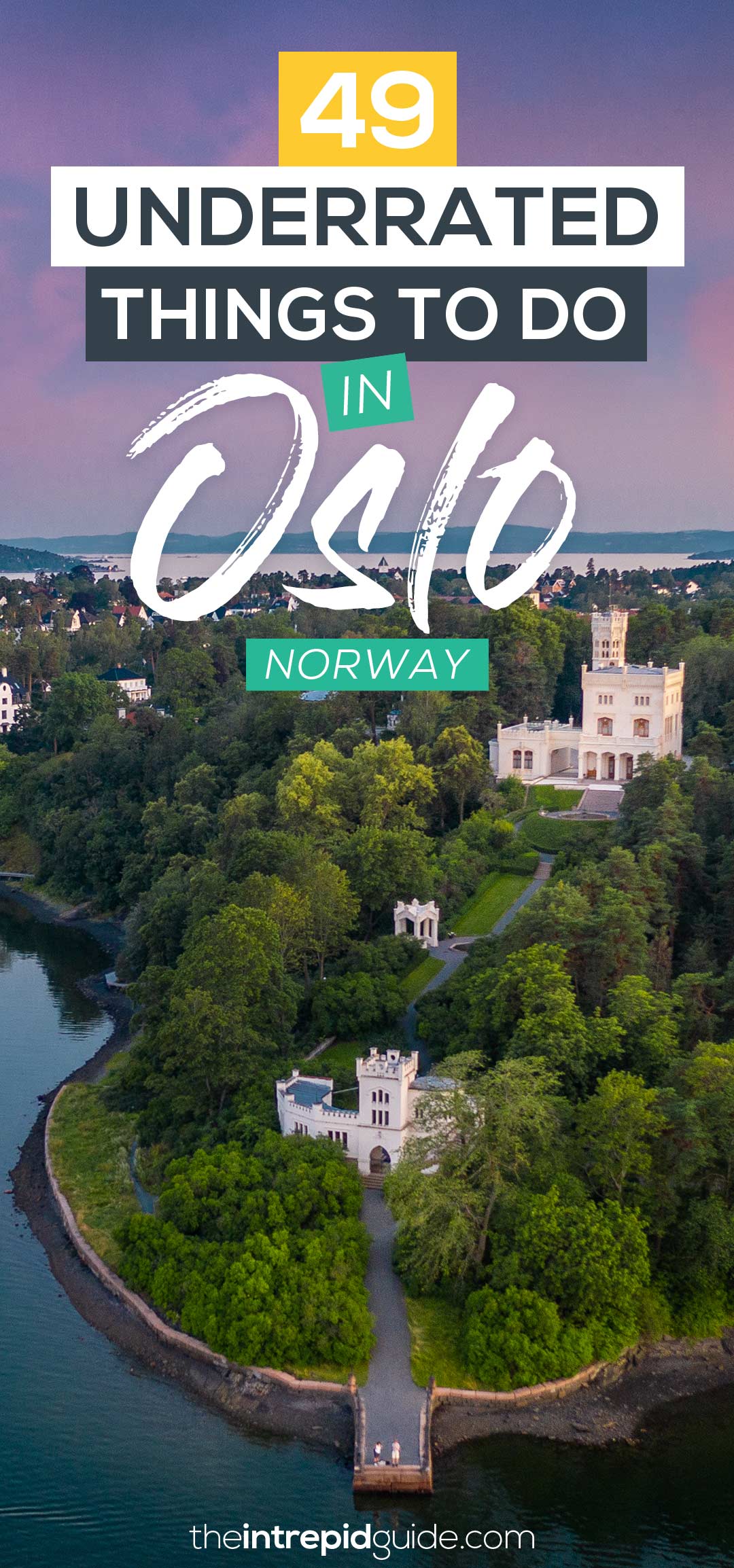
Over to you!
Got a question about visiting Oslo? Is there anything you’d add to this list?
Let me know using the comments section below or join me on social media to start a conversation.
Thanks for reading and I hope you enjoyed this post.
Like what you see? Subscribe using the form below to have all of my posts delivered directly to your email.

